September 13th, 2012. Thursday—London. On Wednesday, I’d left the high-summer of Italy and returned to England’s chill. This London stay would be brief: 2 nights and a day. A long weekend in Oxford was next on my Plan. But first, I had time for several hours of peering at some of my favorite London treasures. And so, on a brisk, sunny Thursday morning, I hopped a Black Cab to Sir John Soane’s Museum, by Lincoln’s Inn Fields. When the taxi stopped outside of Soane’s, the cabbie, who’d said not a word during the drive, turned to me and almost frantically asked “What’s it like in there? I want to go, but the wife ain’t interested.”
“What’s it like in there? It’s Pack-Rat-Heaven…more stuff than you can imagine! And it’s free admission! 200 years ago, an architect who made a killing…made more money than he knew what to do with… started collecting… absolutely Everything! Ancient sculptures. Pieces of old buildings. Paintings. Drawings. Gadgets. And he designed crazy-looking rooms to hold it all…one room has more than 100 built-in mirrors! There’s even a sarcophagus in the cellar! Tell your wife there’s no place like it in London!”
I stepped out of the cab, and the driver sped off, grinning…now armed with information which would surely convince his wife that John Soane’s was worth a try.
After 90 minutes, I’d breathed as much of Soane’s dusty air as my lungs could tolerate, and I strolled out across the green lawns of Lincoln’s Inn Fields, and headed for my next stop. But I was soon discouraged by the folks who manage the nearby Charles Dickens Museum.
On this, the 200th anniversary of Dickens’ birth, calendar-challenged trustees have, maddeningly, chosen to close their Museum for refurbishing. I would thus have no tour of the home where Dickens lived while he wrote OLIVER TWIST and NICHOLAS NICKELBY. So I contented myself with thoughts of Dickens’ masterpiece, BLEAK HOUSE; happy I’d been there–at Lincoln’s Inn Fields–where Dickens had placed the offices of the formidable Mr. Tulkinghorn, one of the scariest lawyers who’s ever prowled across a printed page.
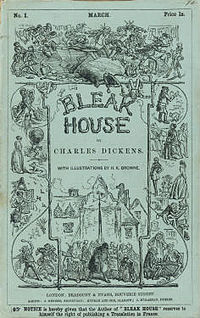
Savor this, from the first chapter of BLEAK HOUSE. Nothing much about human nature—or human institutions—ever changes:
“Jarndyce v Jarndyce drones on. This scarecrow of a suit has, in course of time, become so complicated that no man alive knows what it means. The parties to it understand it least, but it has been observed that no two Chancery lawyers can talk about it for five minutes without coming to a total disagreement as to all the premises. Innumerable children have been born into the cause; innumerable old people have died out of it. Scores of persons have deliriously found themselves made parties in Jarndyce v Jarndyce without knowing how or why; whole families have inherited legendary hatreds with the suit. The little plaintiff or defendant who was promised a new rocking-horse when Jarndyce v Jarndyce should be settled has grown up, possessed himself of a real horse, and trotted away into the other world. Fair wards of court have faded into mothers and grandmothers; a long procession of Chancellors has come in and gone out; the legion of bills in the suit have been transformed into mere bills of mortality; there are not three Jarndyces left upon the earth perhaps since old Tom Jarndyce in despair blew his brains out at a coffee-house in Chancery Lane; but Jarndyce v Jarndyce still drags its dreary length before the court, perennially hopeless.”
With Dickens’ ghoulish Chancery Lane image fading, I walked along the perfectly tranquil Lane itself, and then south to Fleet Street, and then westward, detouring through Covent Garden, where the wonderful acoustics make it a Buskers’-Playground. I paused on a balcony to watch 6 violinists who were performing an achingly-beautiful Pachelbel Canon in D Major …while they also twisted their bodies into acrobatic poses! Afterward, I ambled to Trafalgar Square and the National Portrait Gallery. I was hungry, and the Portrait Gallery basement café is a quiet place to get restorative shots of cake and coffee.
Fortified with sugar and caffeine, I went upstairs to see what the Gallery had on tap. I was lucky and found that the exhibit “The Queen: Art & Image,”
which I’d assumed had ended, was still open (the Show did finally close, on October 21st).
 I examined more than 50 portraits of Elizabeth II, made over the course of her reign, many of which I’d seen before, but only in magazines and newspapers. Encountering those same portraits now, up close, made each artist’s rendition of the Queen new and vivid. But the most powerful image in the Show was Chris Levine’s “Lightness of Being: A Portrait of Queen Elizabeth II with her eyes closed.” Levine was commissioned by the Island of Jersey to make a holographic portrait of the Queen. During 2 sittings in 2007, the Queen had to pose for over 10,000 images, which were eventually melded into a single, eyes-wide-open, larger-than-life hologram (also exhibited at the Portrait Gallery’s Show). Levine, interviewed by THE GUARDIAN, explained: “During the shoot, there was a lot of bright light, noise, and each exposure took 8 seconds, which is a long time to have to sit still. I wanted the Queen to feel peaceful, so I asked her to rest between shots; this was a moment of stillness that just happened.”
I examined more than 50 portraits of Elizabeth II, made over the course of her reign, many of which I’d seen before, but only in magazines and newspapers. Encountering those same portraits now, up close, made each artist’s rendition of the Queen new and vivid. But the most powerful image in the Show was Chris Levine’s “Lightness of Being: A Portrait of Queen Elizabeth II with her eyes closed.” Levine was commissioned by the Island of Jersey to make a holographic portrait of the Queen. During 2 sittings in 2007, the Queen had to pose for over 10,000 images, which were eventually melded into a single, eyes-wide-open, larger-than-life hologram (also exhibited at the Portrait Gallery’s Show). Levine, interviewed by THE GUARDIAN, explained: “During the shoot, there was a lot of bright light, noise, and each exposure took 8 seconds, which is a long time to have to sit still. I wanted the Queen to feel peaceful, so I asked her to rest between shots; this was a moment of stillness that just happened.”
For me, this glimpse of a tired but serene Queen, pacing herself, and patiently submitting to yet another artist, was extraordinarily moving. Sixty years ago, she was thrust into an existence of unimaginable privilege and responsibility, and she’s acquitted herself admirably ever since. As I left the Show, however, I realized that the most important image of all hadn’t been included…
…and I contemplated what it will be like when Elizabeth’s benign countenance disappears from British currency, and is replaced by the less-reassuring image of her eldest son. After all… how could such a King—who’d been overheard telling his mistress that, with his luck, he’d be reincarnated as her tampon— ever be taken seriously?
September 14th, Friday–Oxford.
I arrived in Oxford planning to hit the ground running. But 18 days of frenetic touring had taken their toll: I was exhausted and had developed a painful ear infection. Nothing tests your travel-mettle like falling ill along the way. So, upon my first day in this beautiful city, I accepted that bed rest had to come before exploration. I took the first dose of the powerful, prescription, anti-bacterial drug that I always carry when abroad, and then sank into the comfortable cocoon of my room at The Old Bank Hotel.
At 7:30 that evening, I became aware of the faint sound of bells. I pushed my windows open and for the next hour was delighted to hear the Oxford University Society of Change Ringers, as they practiced on the nearby bells in The Great Tower, at Magdalen College.
September 15th, Saturday. The Old Bank Hotel offers a soothing blend of contemporary design and good, old-fashioned guest care. Each room is decorated with art from the owner’s personal collection, and the marble bathrooms are spacious. One can get in room-massages, and facials (which I did early Saturday morning… they made me feel a bit better). But be sure to book a room facing the interior courtyard, to avoid the traffic noise on High Street. The food in the adjoining QUOD Restaurant is first-rate, but not overpriced. During the course of my stay, I settled upon this favorite supper: dilled salmon with pureed peas, a terrine of new potatoes, and buttered chard. My only caution: steer clear of “Summer Pudding.” In the English countryside, if one wants dessert, one must develop a taste for puddings, the “Summer” variety being a ramekin of gooey white bread that enfolds a mélange of raspberries and strawberries, all topped off with a heartburn-inducing ladle-full of clotted cream.
(A small, food-related digression: The waiters at restaurants in Italy and England never introduce themselves and rarely inquire if the meal they’ve set before you is satisfactory. You’re fed, and then left in peace to enjoy your food. I find such procedures professional: they reflect a restaurant’s confidence in its kitchen.)
By mid-morning, Friday’s first dose of antibiotic had dulled my earache and banished my vertigo. The sun was shining, and I could think of no better place for quiet and rest than the University of Oxford’s Botanic Garden, a 5 minute walk down High Street from the Hotel.
Founded as a physic garden in 1621, the University Botanic Garden has developed into a collection of over 7000 types of plants, which are
grown in 3 areas that stretch along the banks of the River Cherwell: the Glasshouses, the Walled Garden, and the Lower Garden. The Garden is one of the most bio-diverse little plots of land in the world, and is used for both pleasure and research. Simply BEING there felt therapeutic. I plopped myself onto a bench in the sunshine, listened to birdsong and water fountains and the occasional chiming of tower bells, and spoke my regrets about the bread crumbs I didn’t have to the 2 ducks who lingered hopefully by my feet.
Scenes from the Glass Houses, along the River Cherwell:
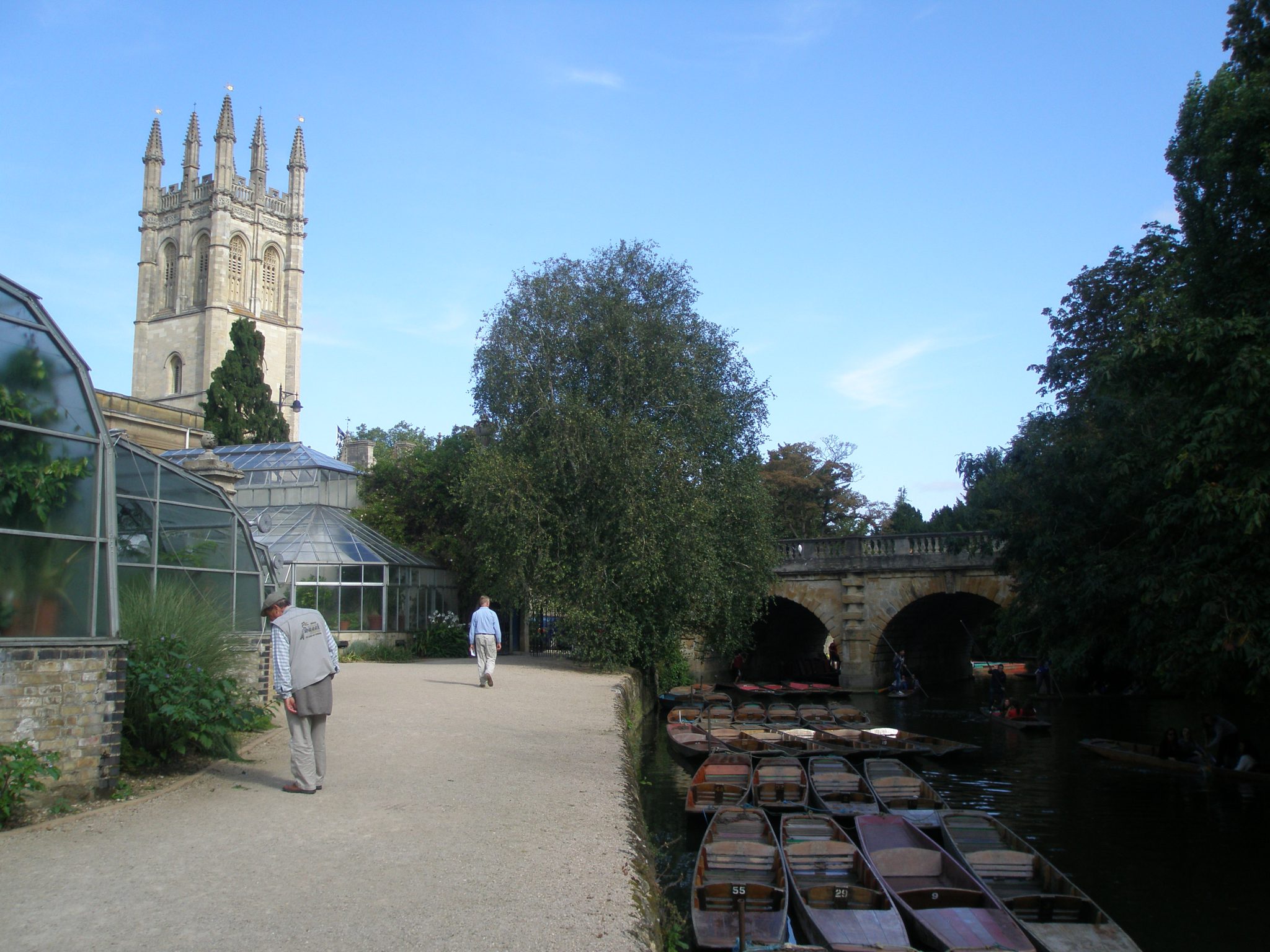




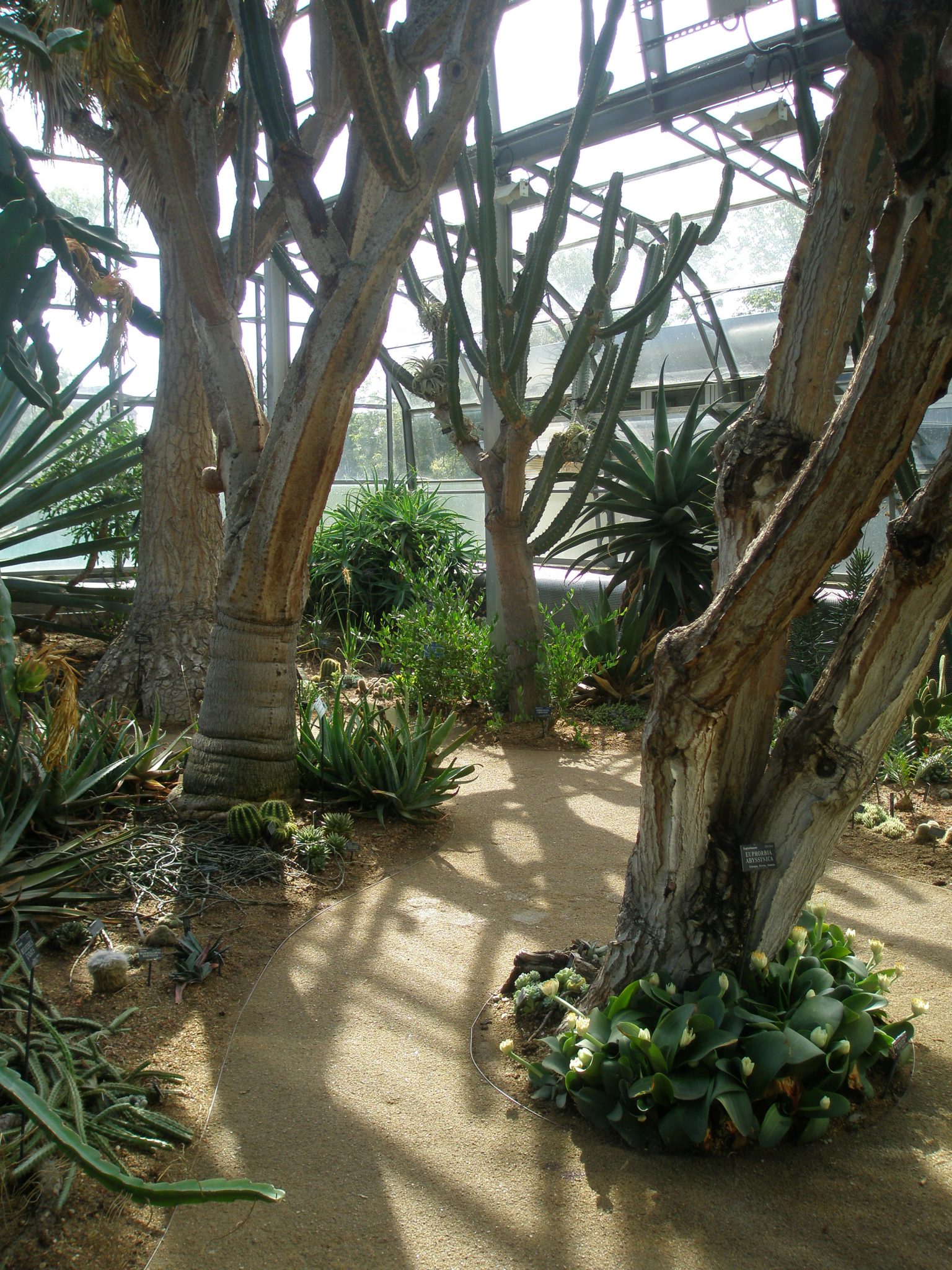
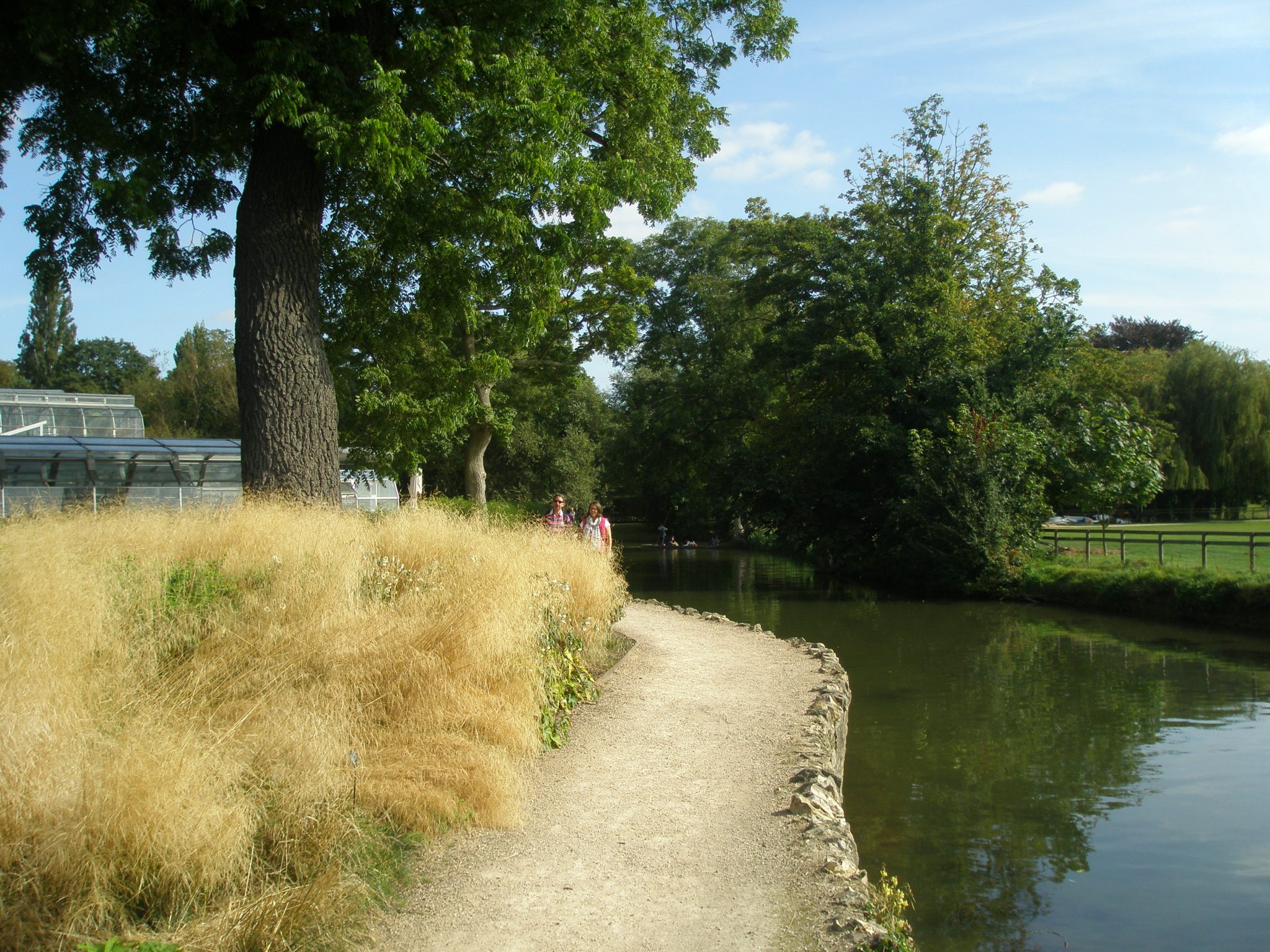
Scenes from the Walled Garden:
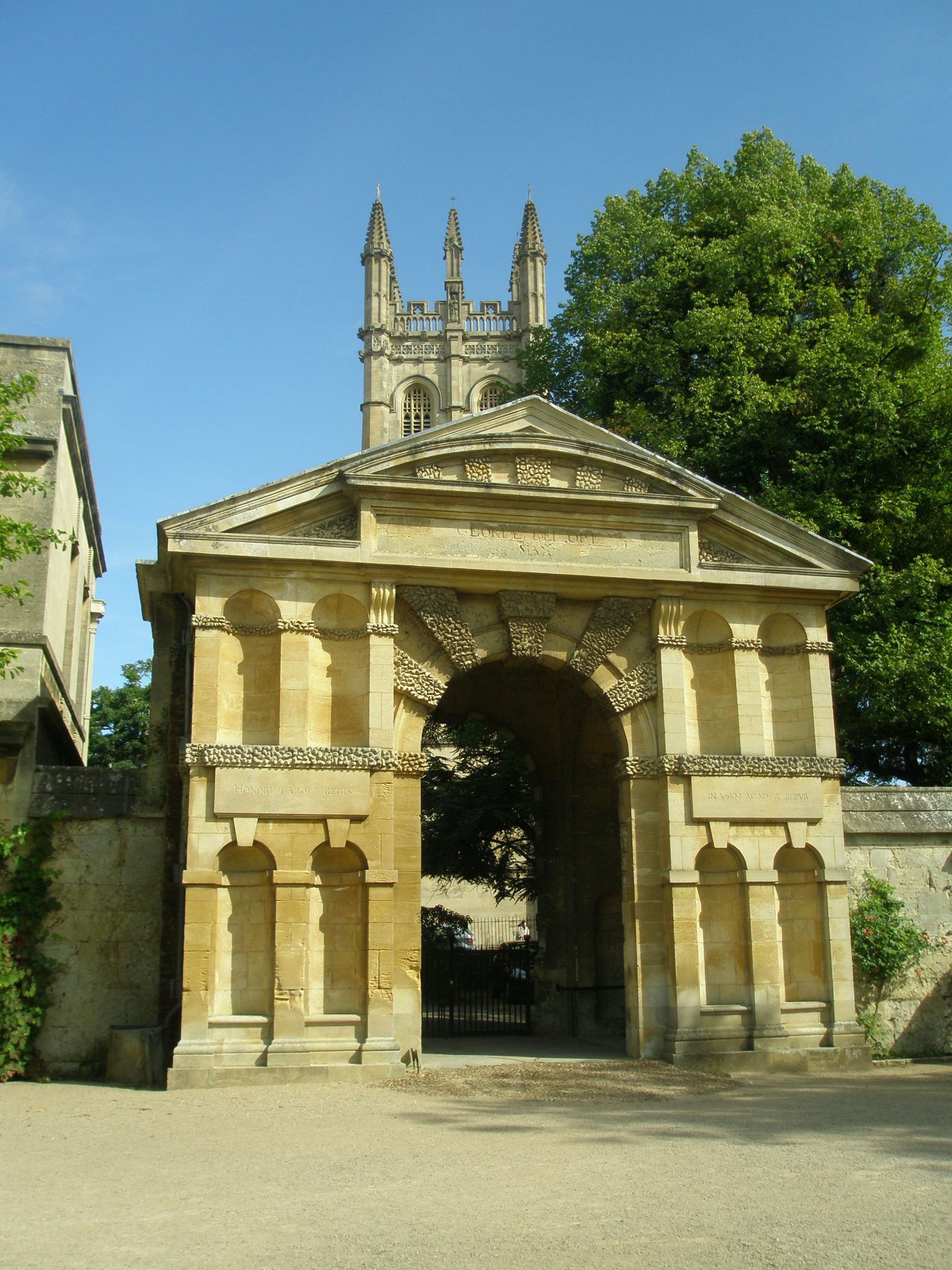
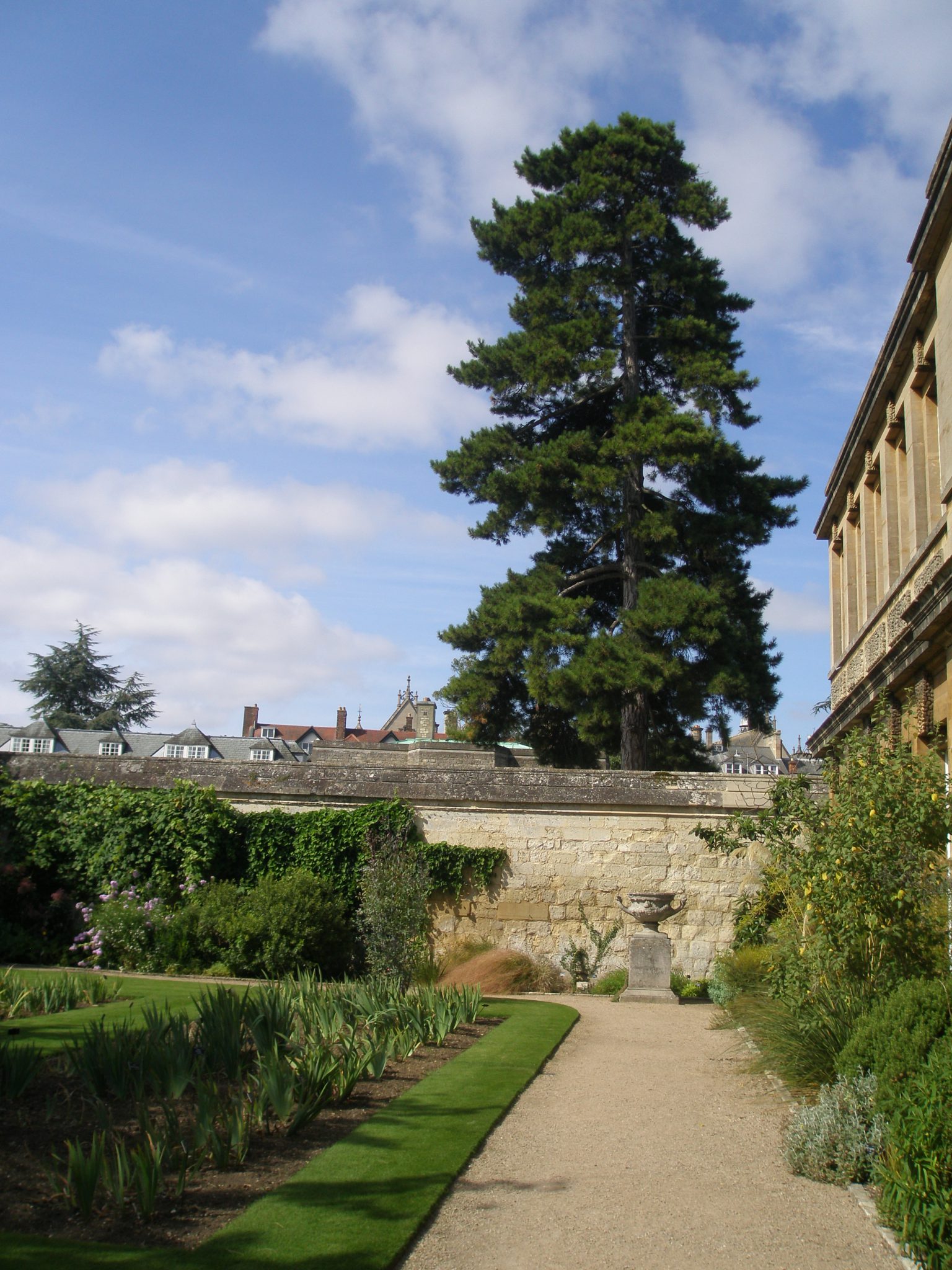
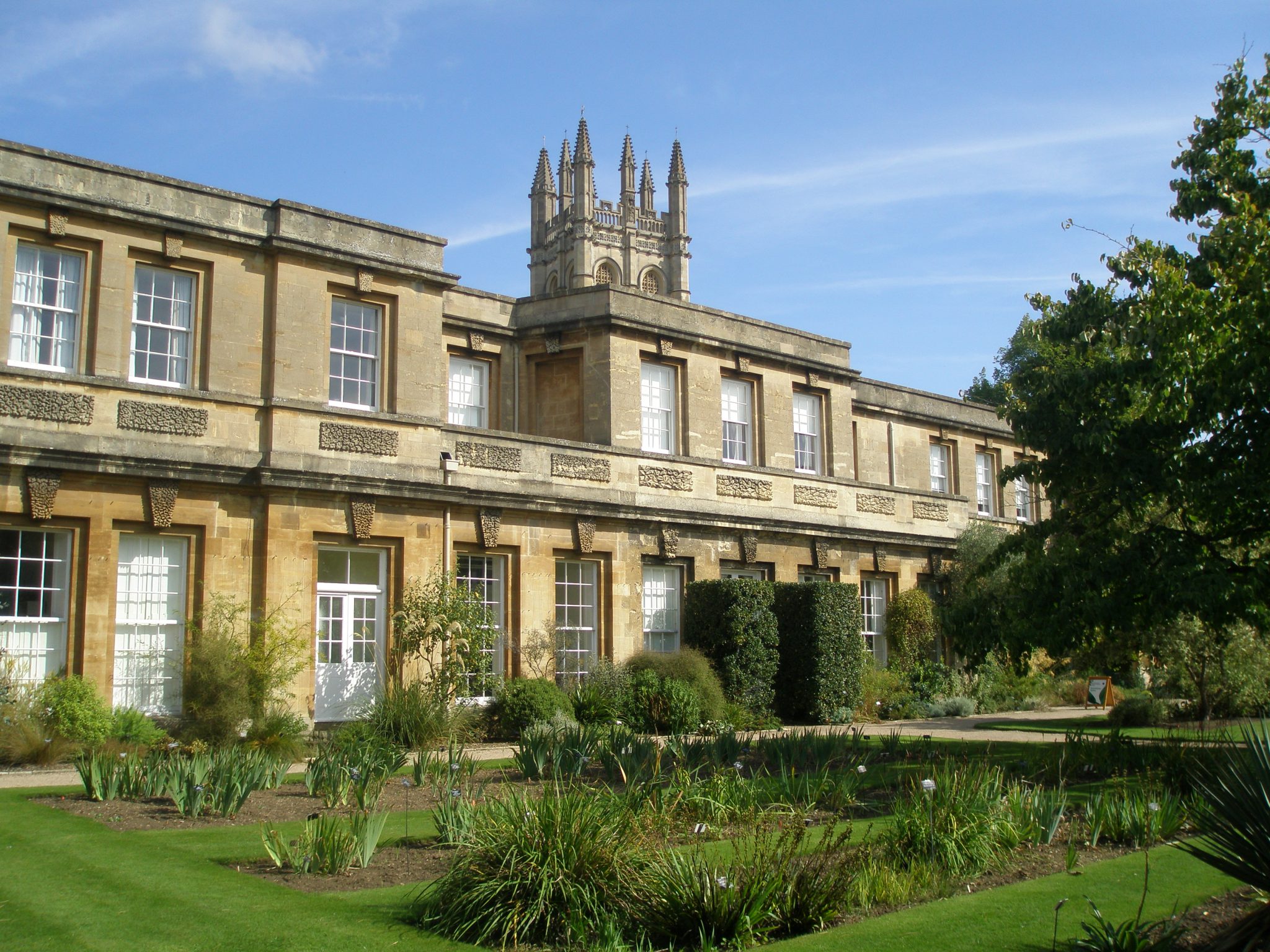

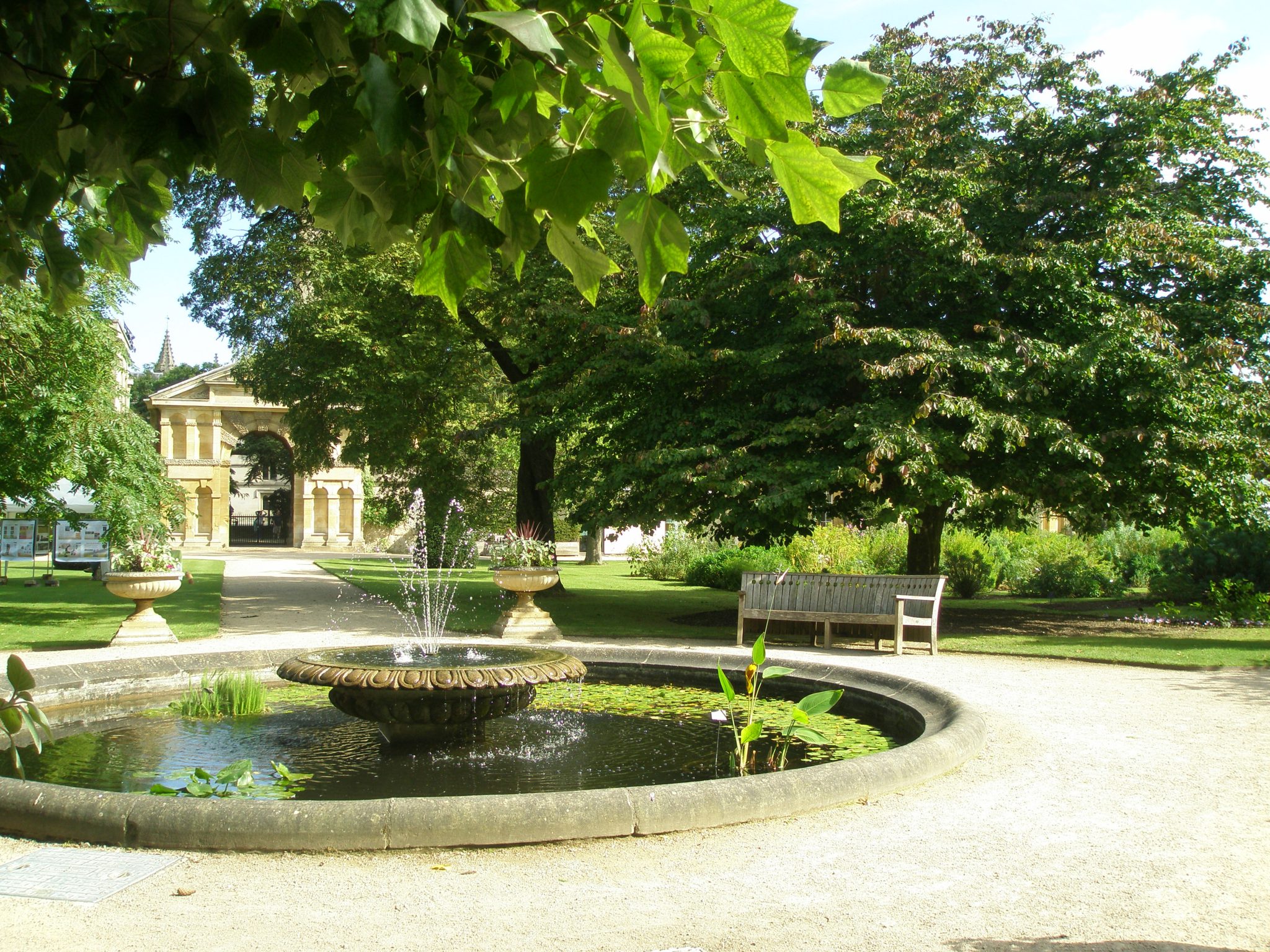
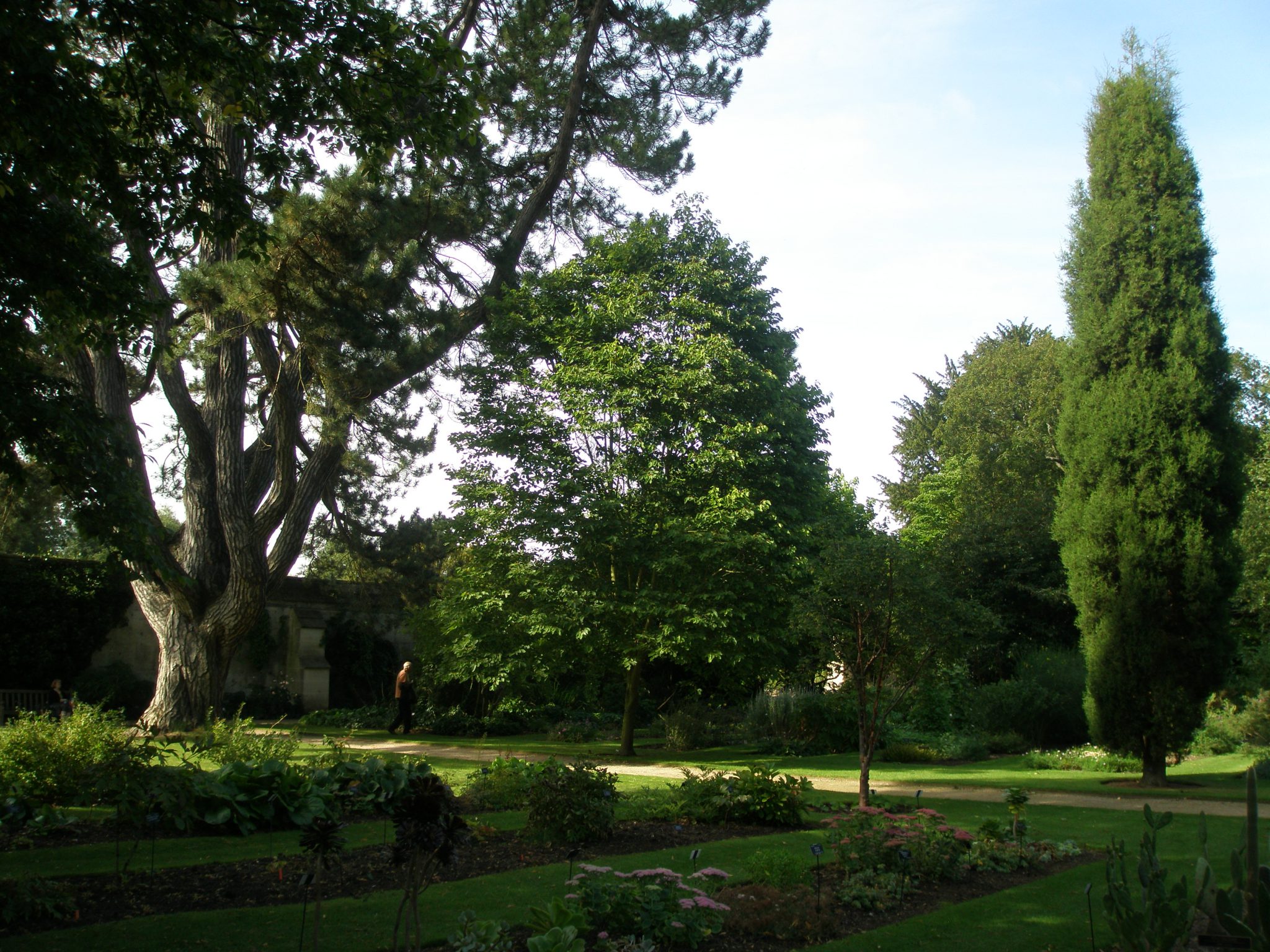

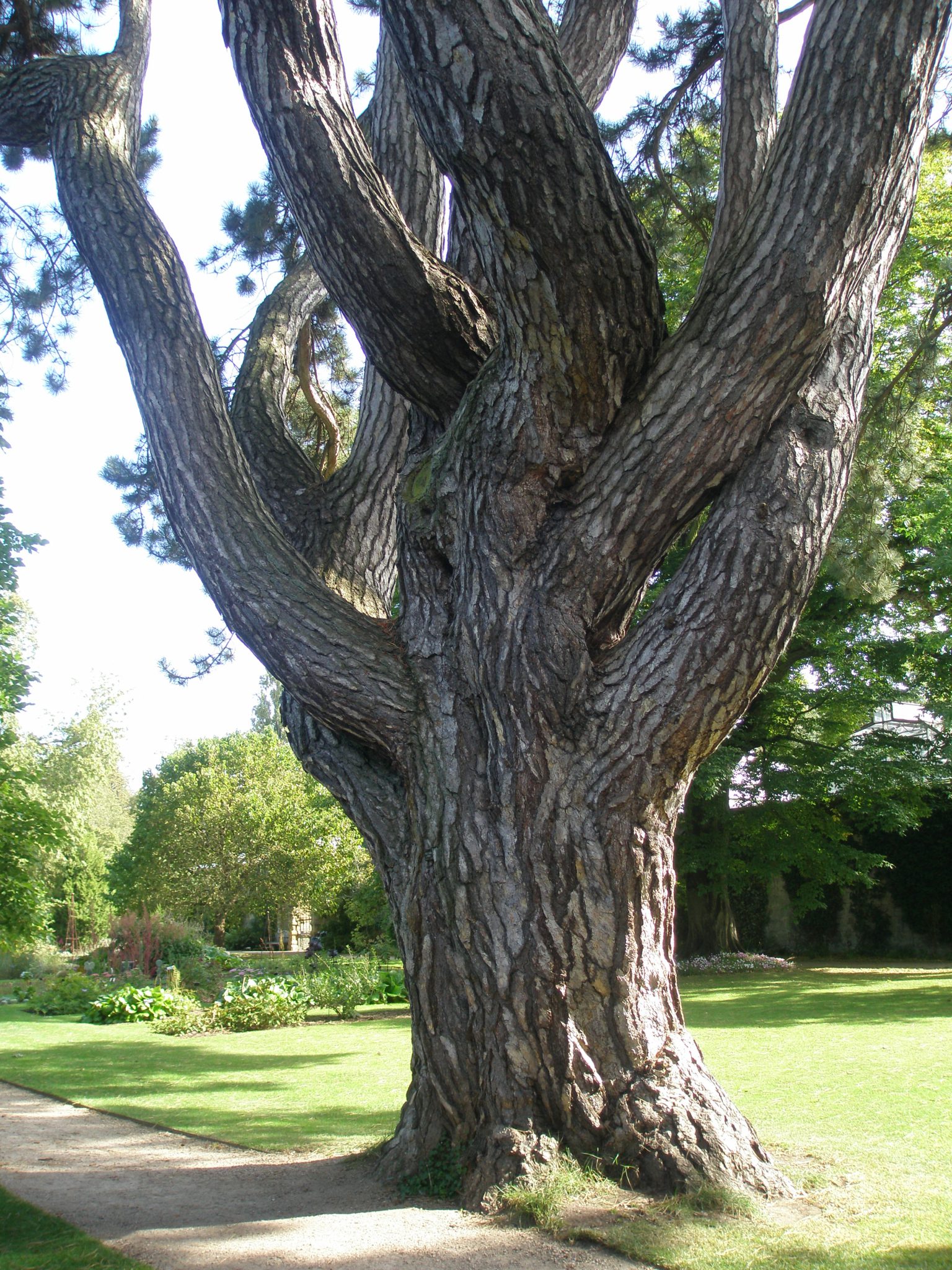
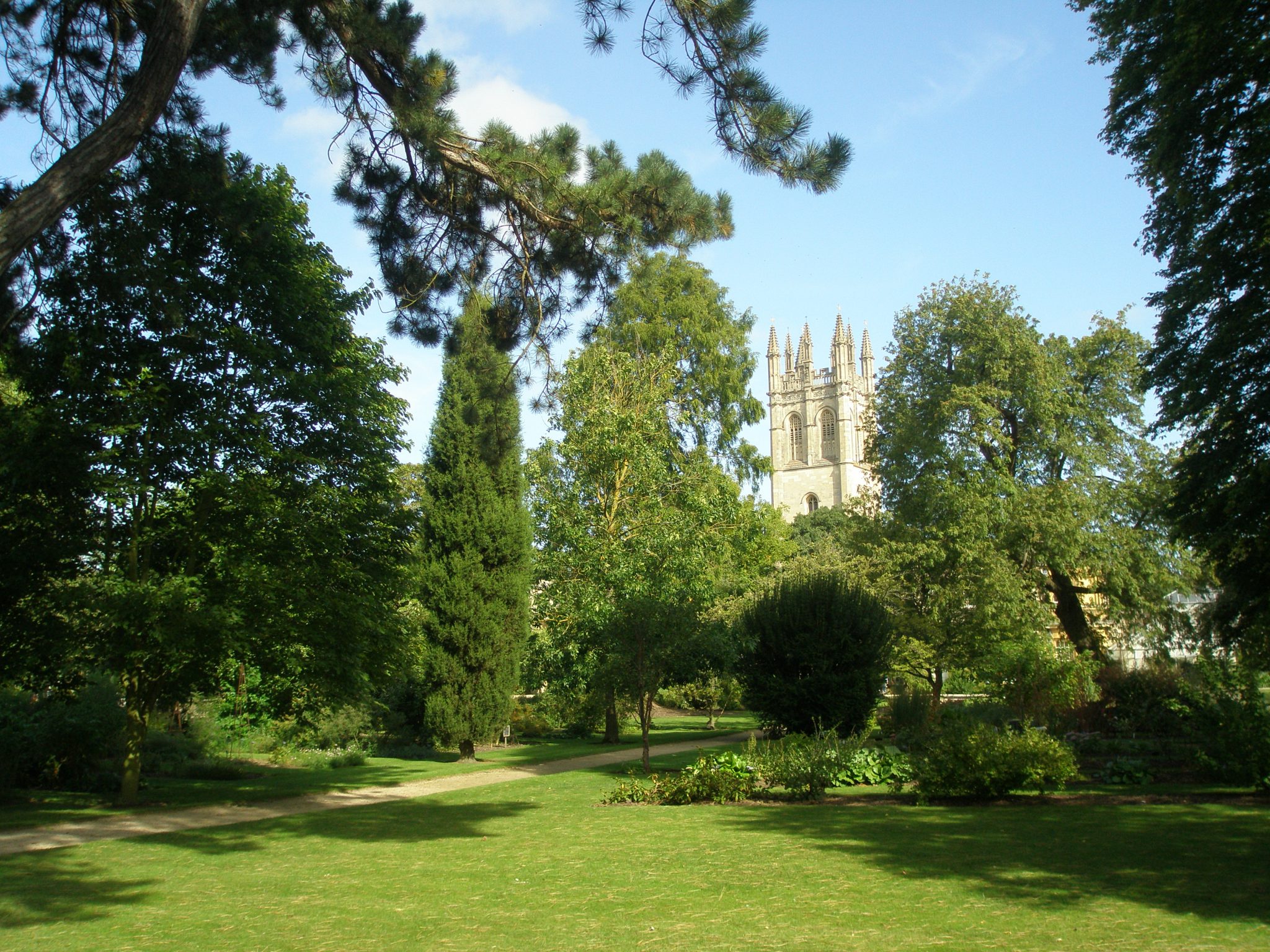
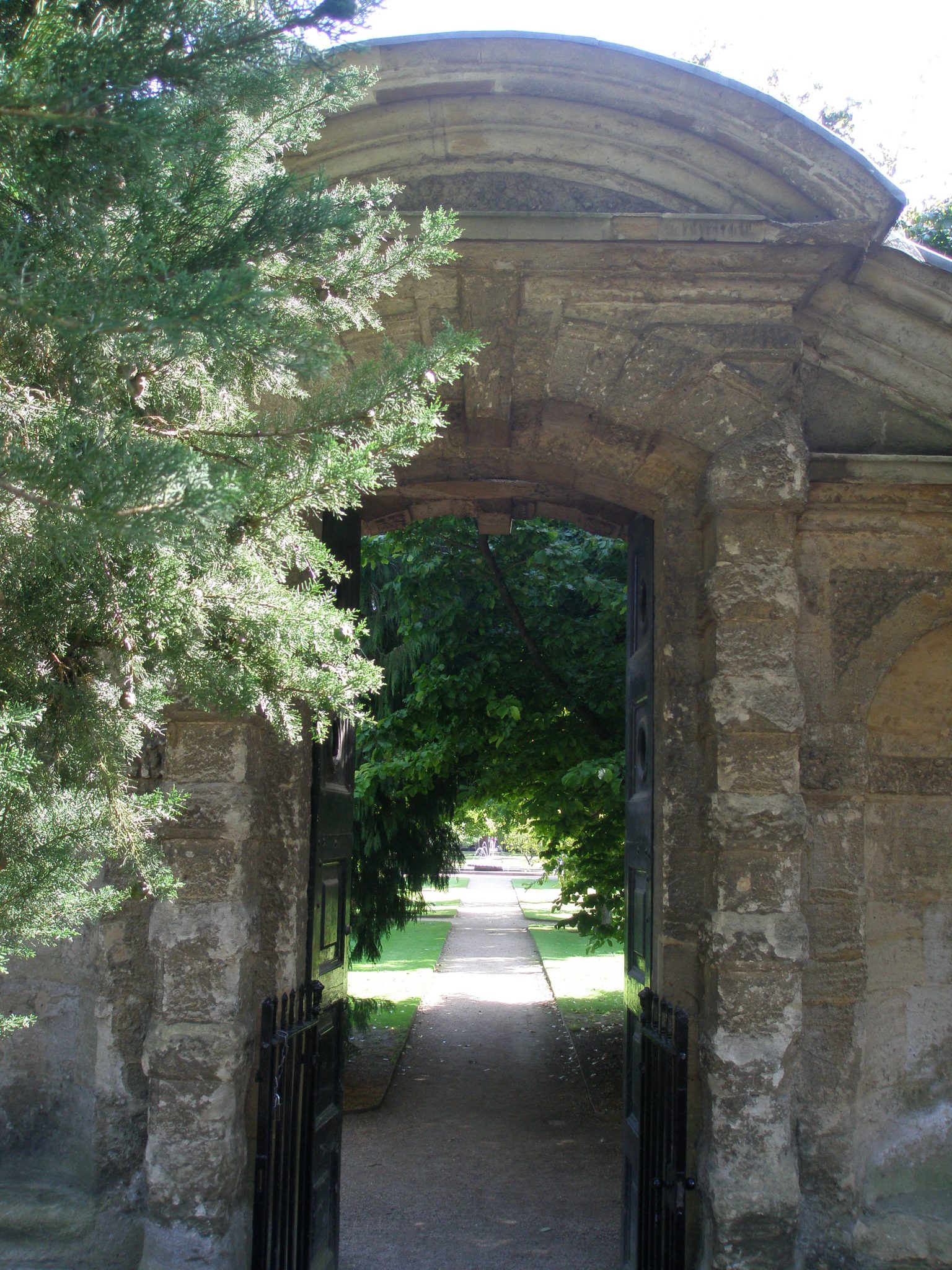
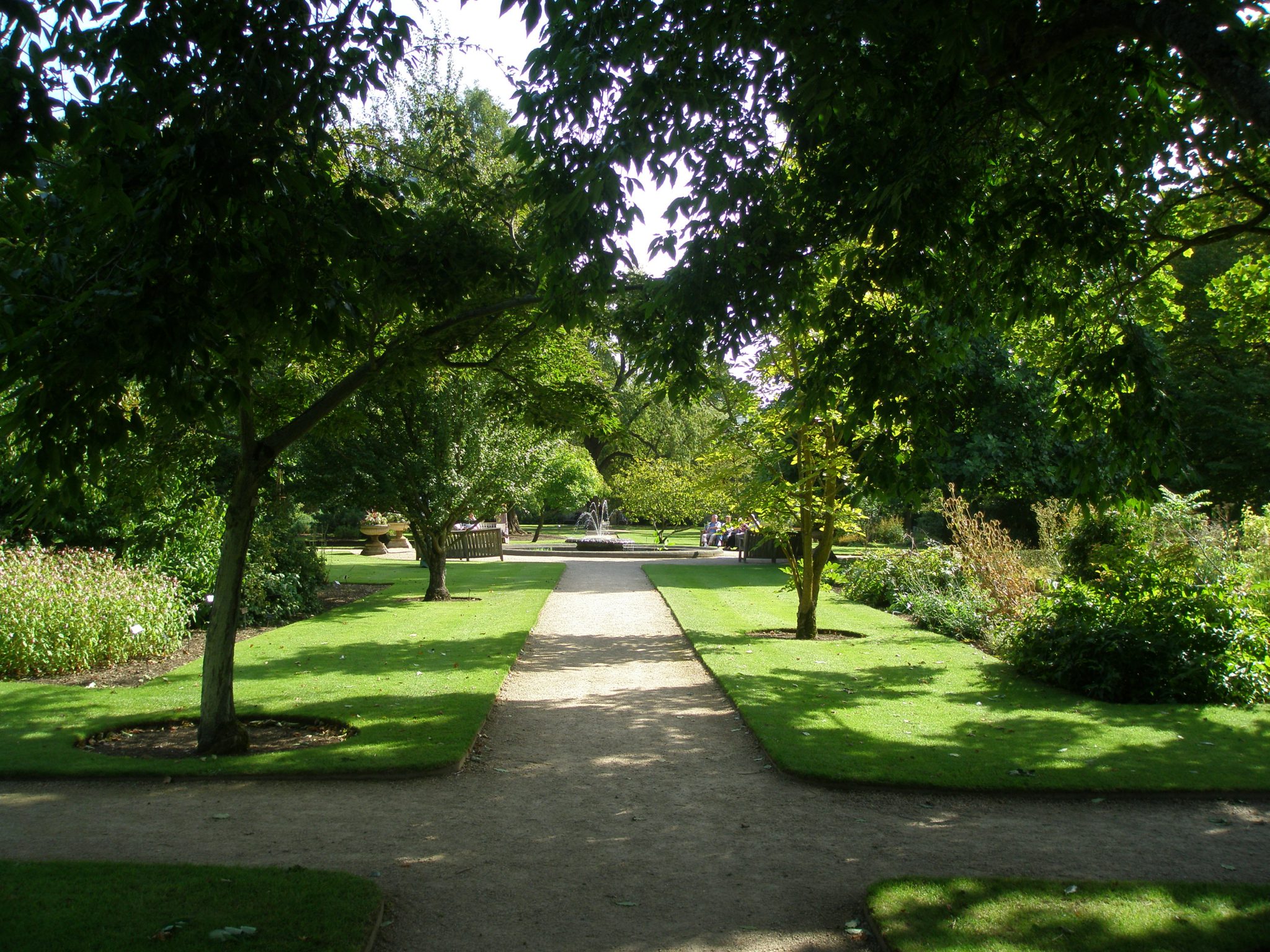
But those sunny hours in the Botanic Garden weakened my resolution to rest, and, instead of prudently heading back to the Hotel, I began studying my map of Oxford’s architecture, and set a course. Feeling as poorly as I did then, Deadman’s Walk from the Botanic Garden toward the College of Christ Church seemed a fitting route…
…and so I followed the Walk past the Cricket Fields…
… along Christ Church Meadow, and eventually found myself queuing for entrance to Christ Church itself (founded in 1546), along with hundreds of excited teenagers, who had apparently traveled there from Earth’s four corners. I’d forgotten…of course: Harry Potter Mania! All eight of the Potter movies had scenes filmed here: in the Cloister, on the Hall Stairs, and in the Great Hall. Where once Christ Church tourism was driven by modest numbers of Lewis Carroll enthusiasts, the College is now Stop One for legions of Potter Pilgrims. Once inside, getting clear, un-peopled photos was difficult, but I was patient:
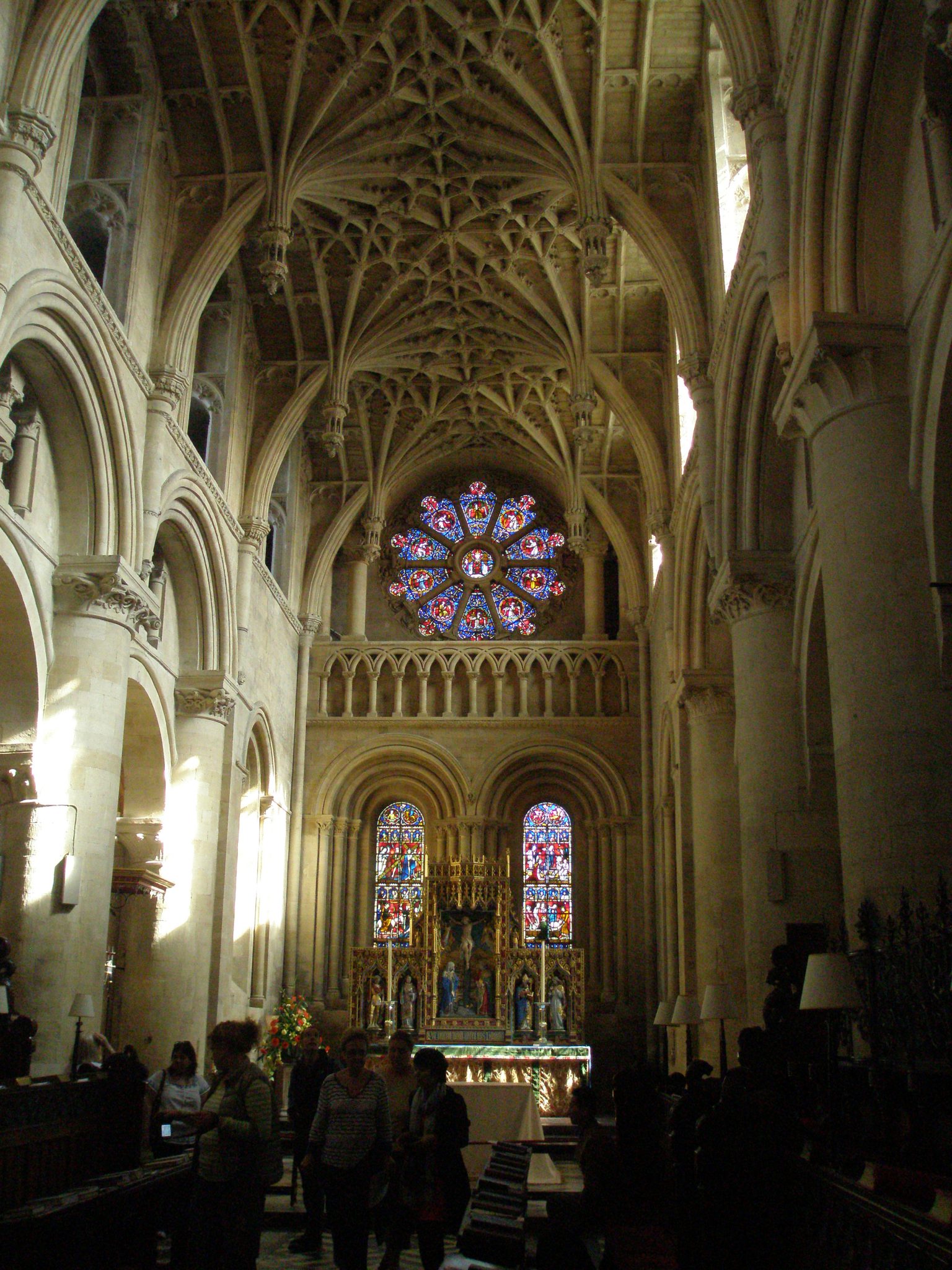
Christ Church Cathedral. The core of the building dates from 1210, and has been built upon ever since
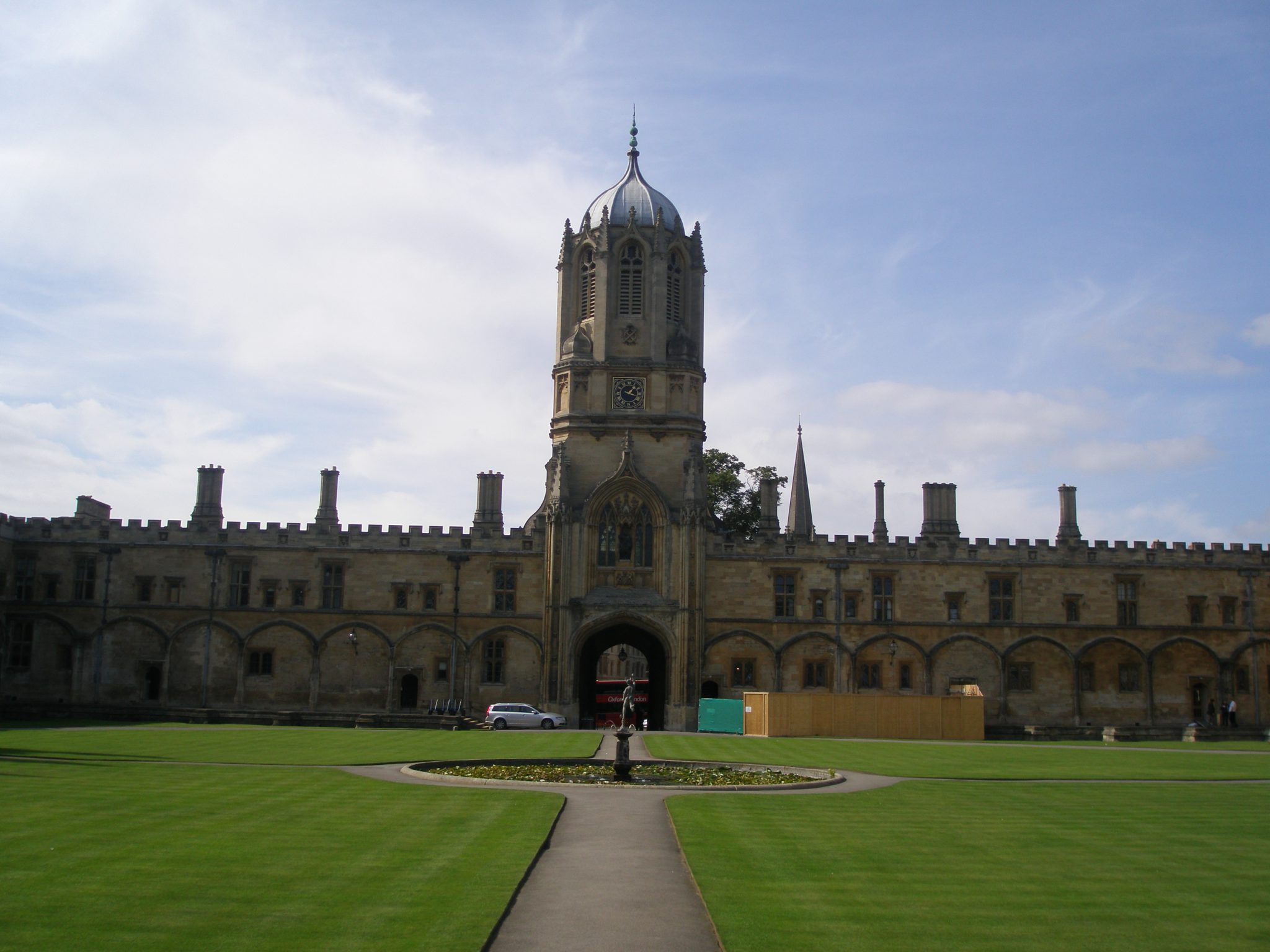
Christopher Wren’s Tom Tower, which was built in 1682 to support the great, six-ton Tom Bell. Tom Quad is the largest quadrangle in Oxford, at 264 by 261 feet
Exiting the College at the Merton Street Gate, I doubled back to the Meadow’s Memorial Gardens:
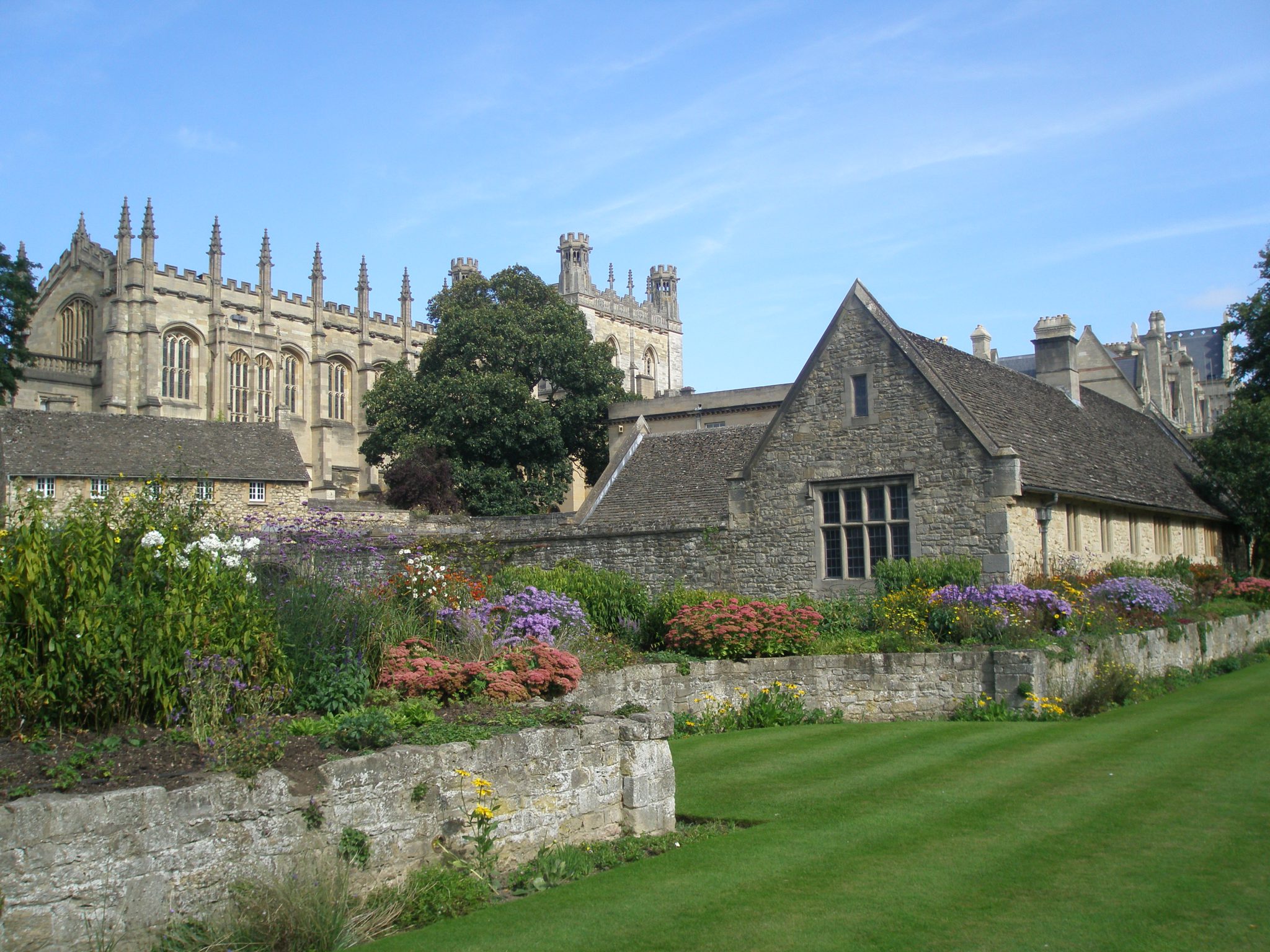

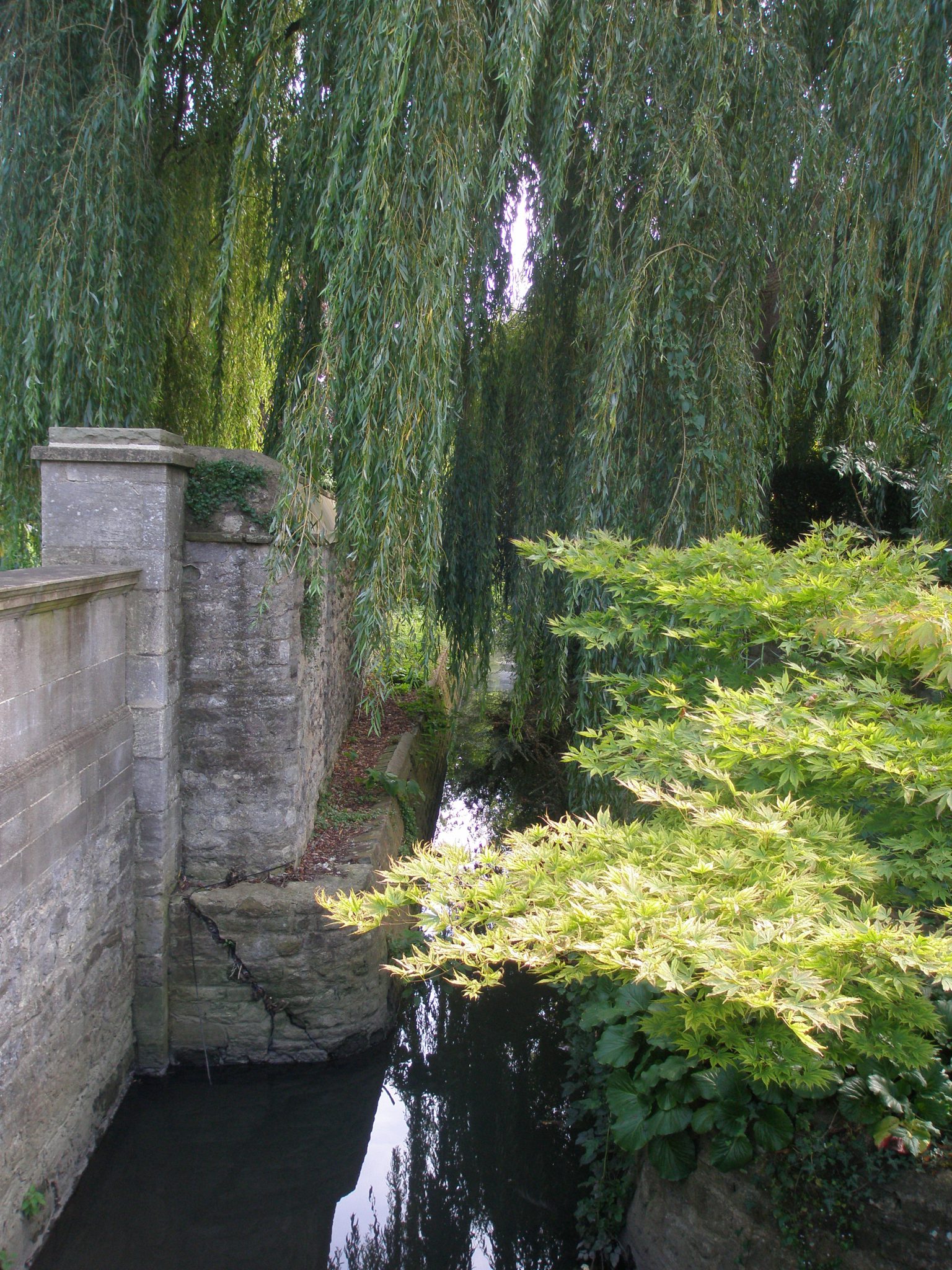
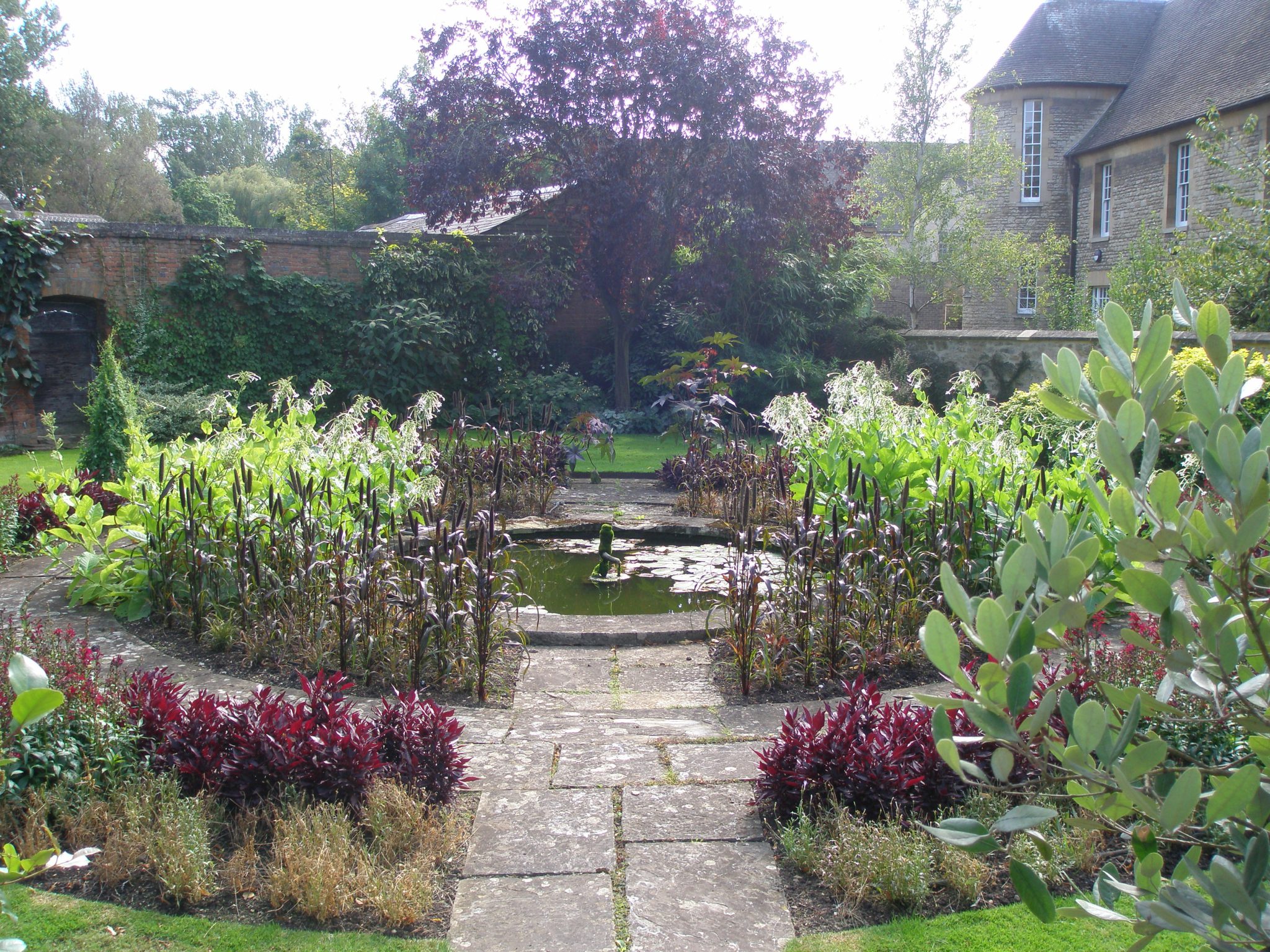
I then wandered along Oxford’s streets…
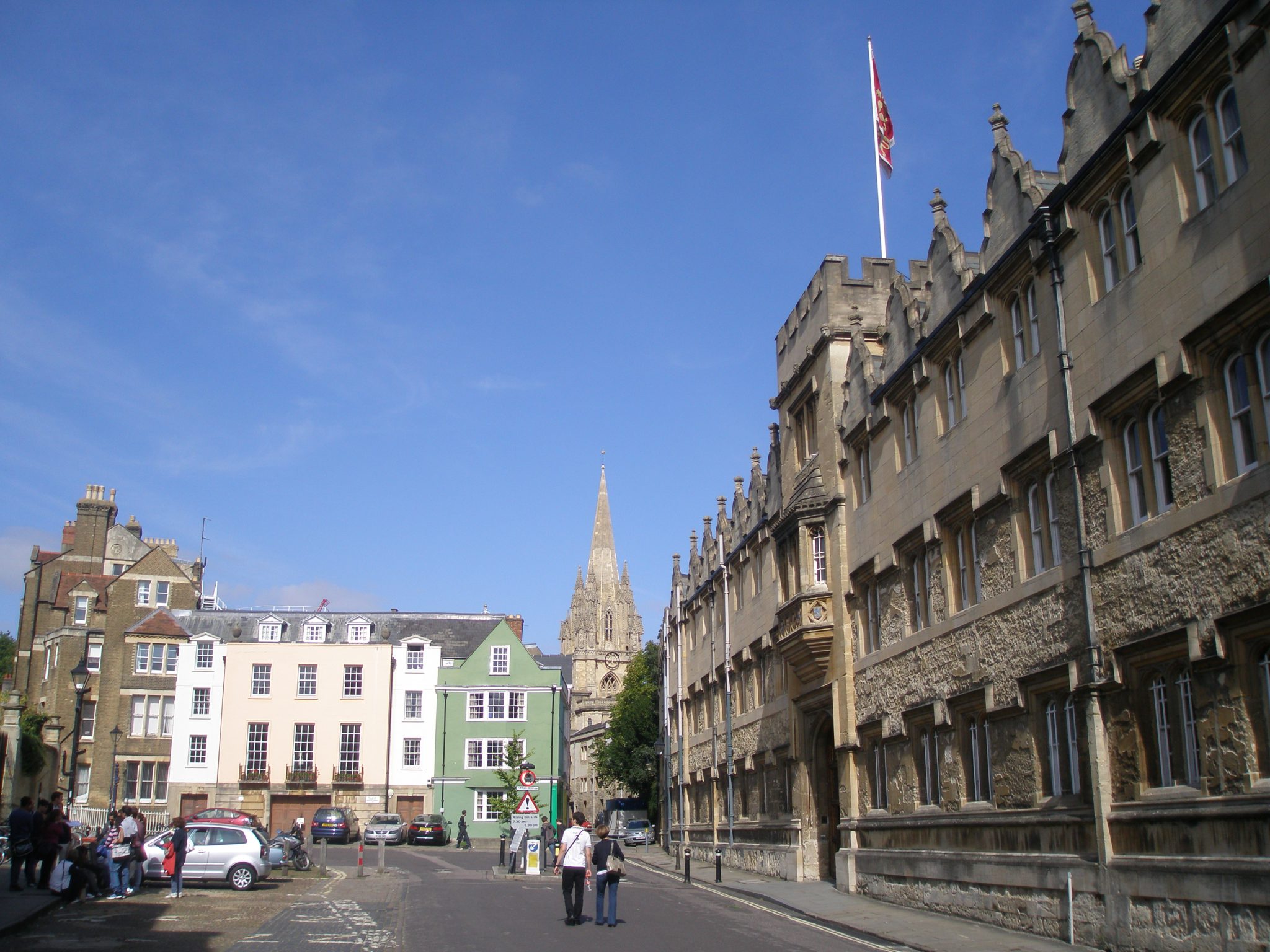
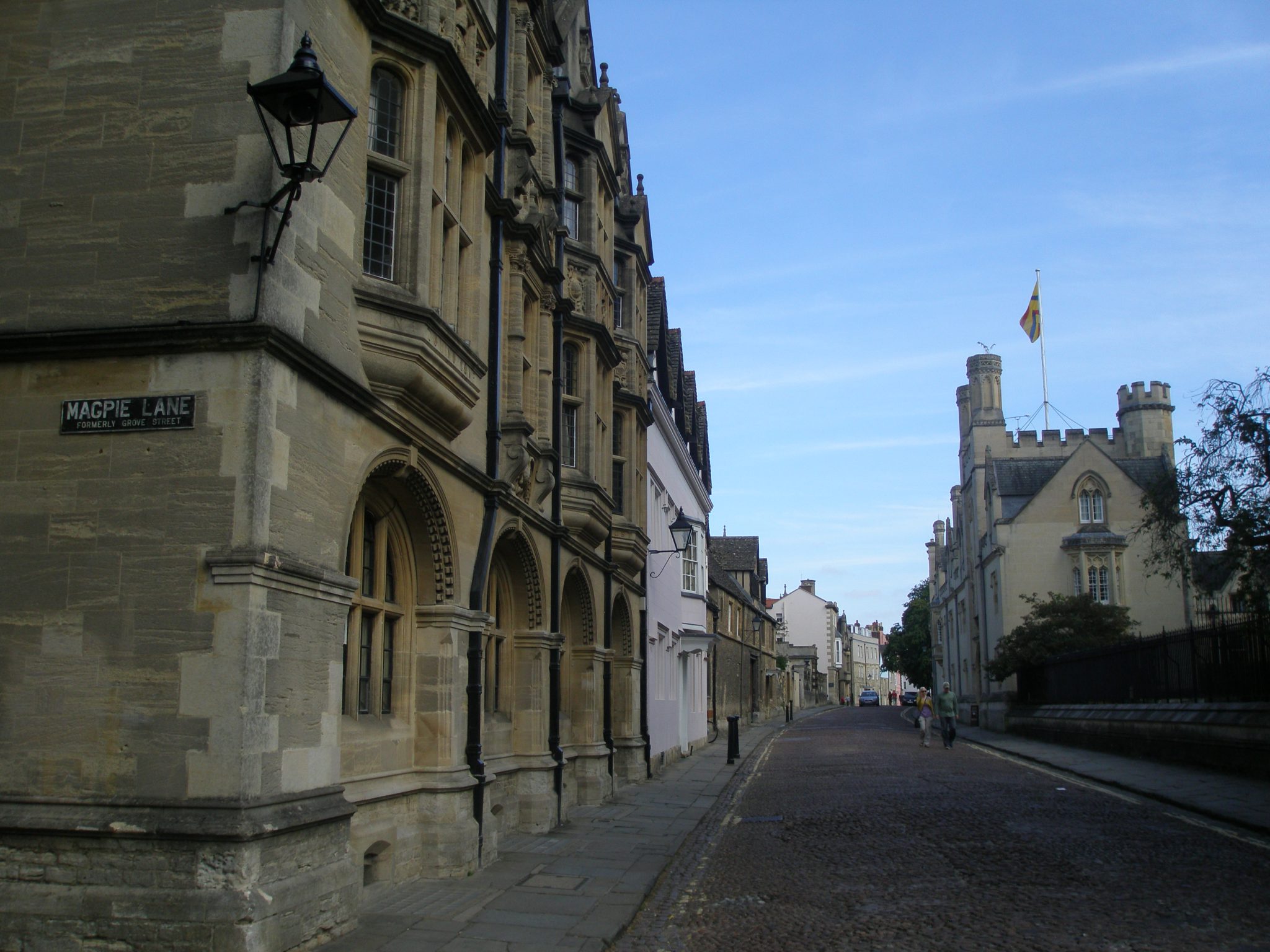
…past Merton College…
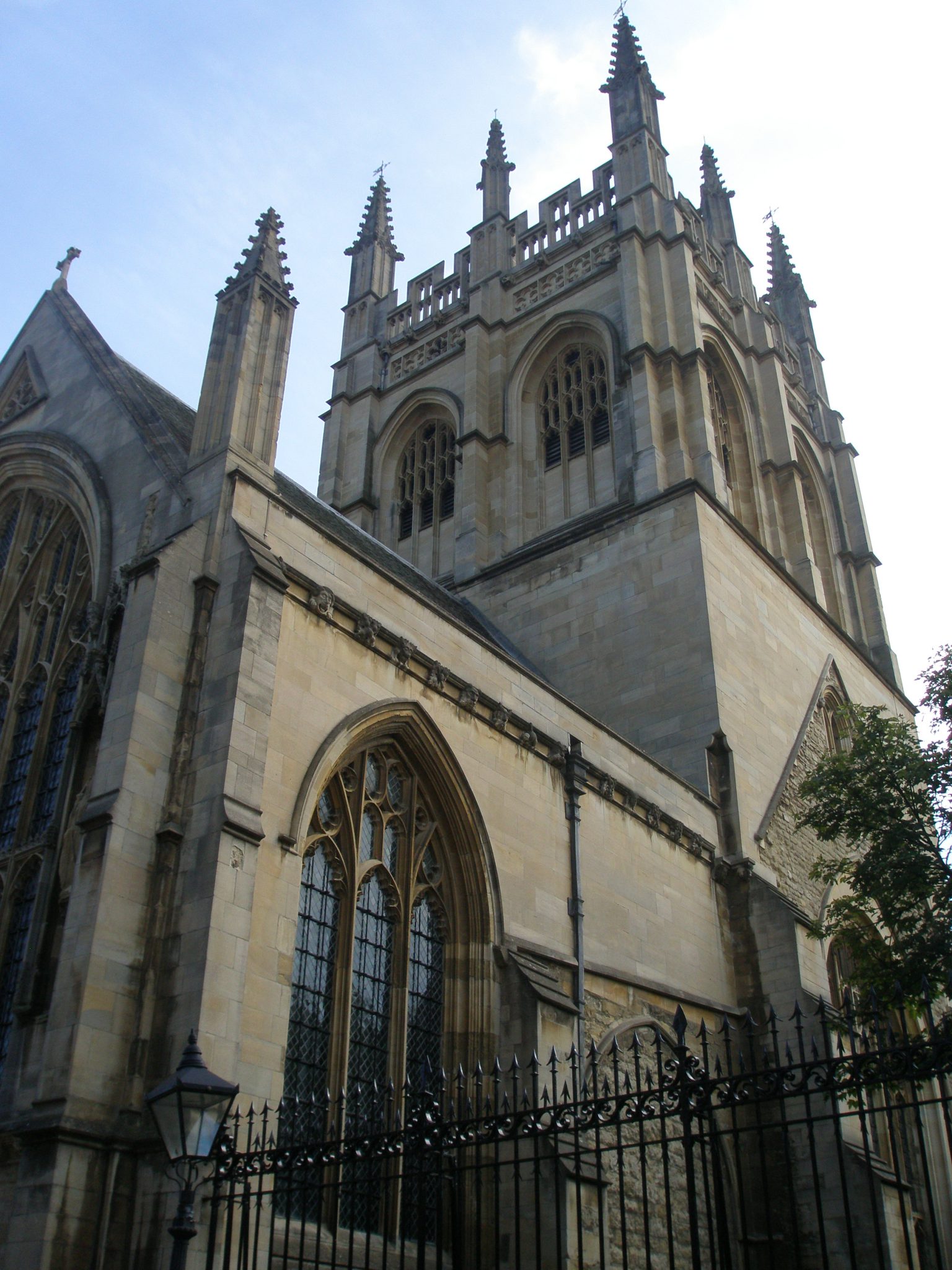 …fully intending to call it a day, but the thought that I might miss seeing the splendid Victorian Gothic Oxford University Museum of Natural History, with its soaring glass ceiling, and its dinosaur skeletons and rocks and minerals, propelled me to the northern limits of the University. The hour I spent in the Museum gave me just a taste of their collections, which include more than 5 million curiosities from the natural world. I especially liked the columns on the second floor; each made of a different marble from the United Kingdom.
…fully intending to call it a day, but the thought that I might miss seeing the splendid Victorian Gothic Oxford University Museum of Natural History, with its soaring glass ceiling, and its dinosaur skeletons and rocks and minerals, propelled me to the northern limits of the University. The hour I spent in the Museum gave me just a taste of their collections, which include more than 5 million curiosities from the natural world. I especially liked the columns on the second floor; each made of a different marble from the United Kingdom.
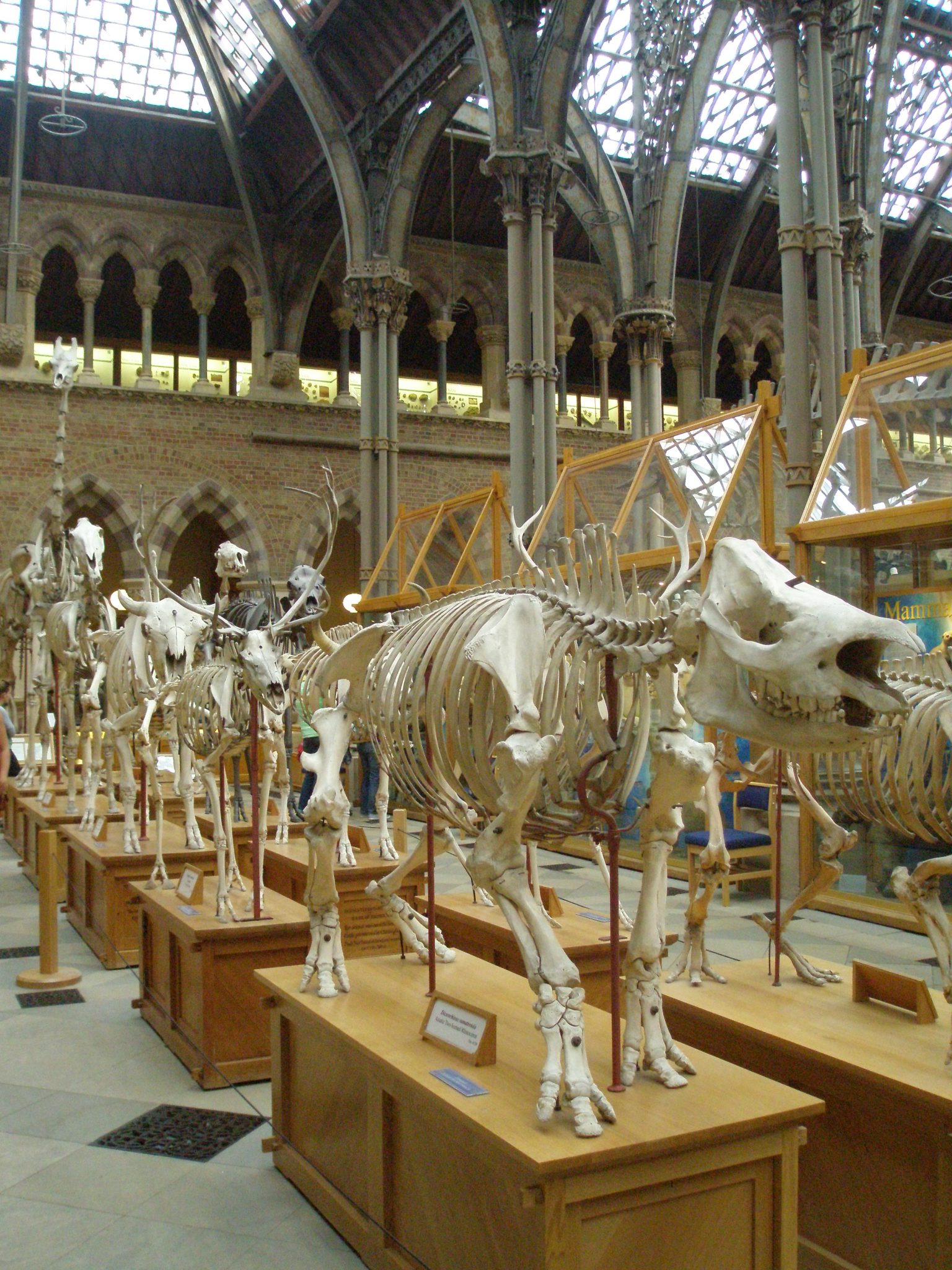
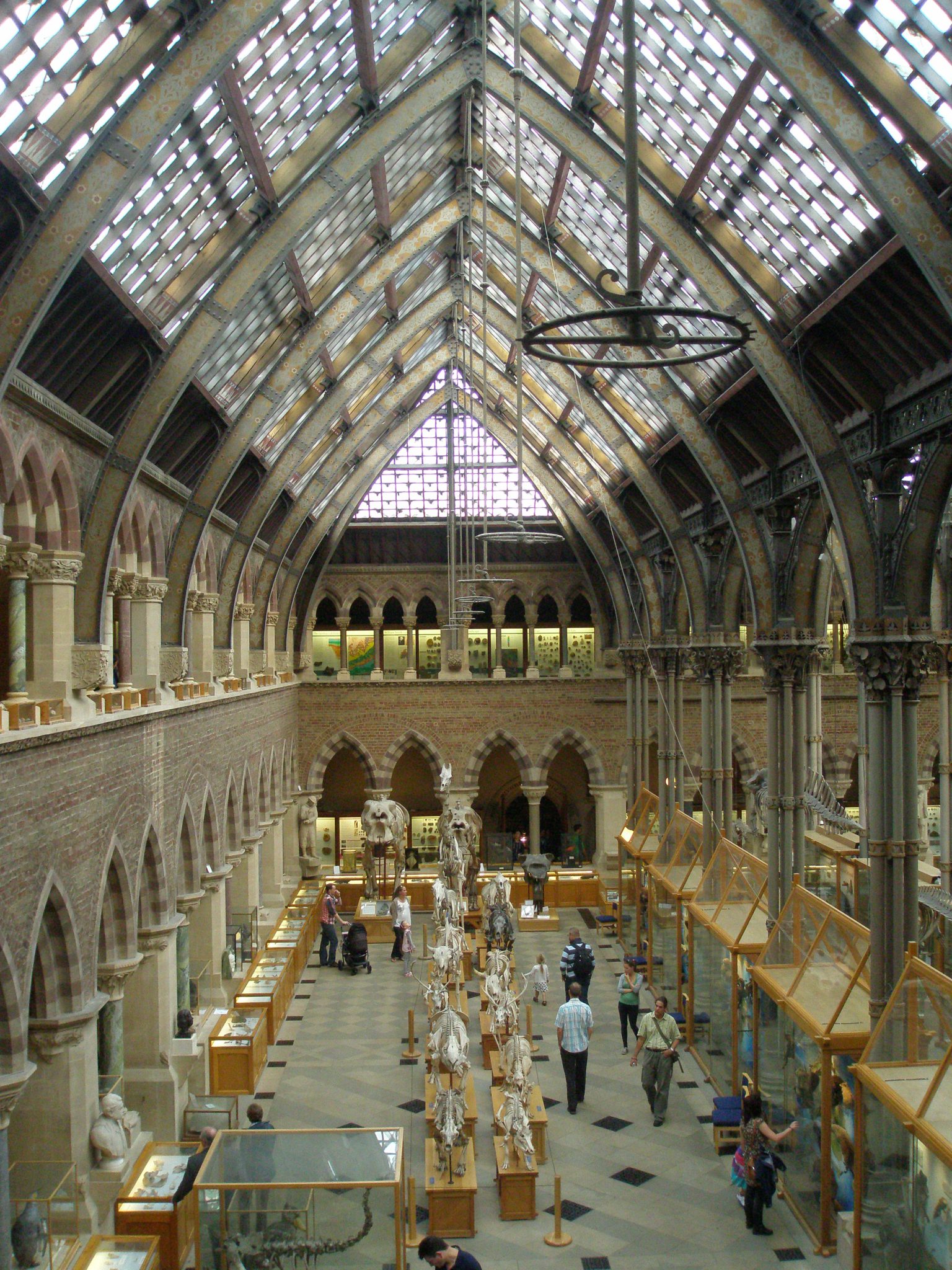
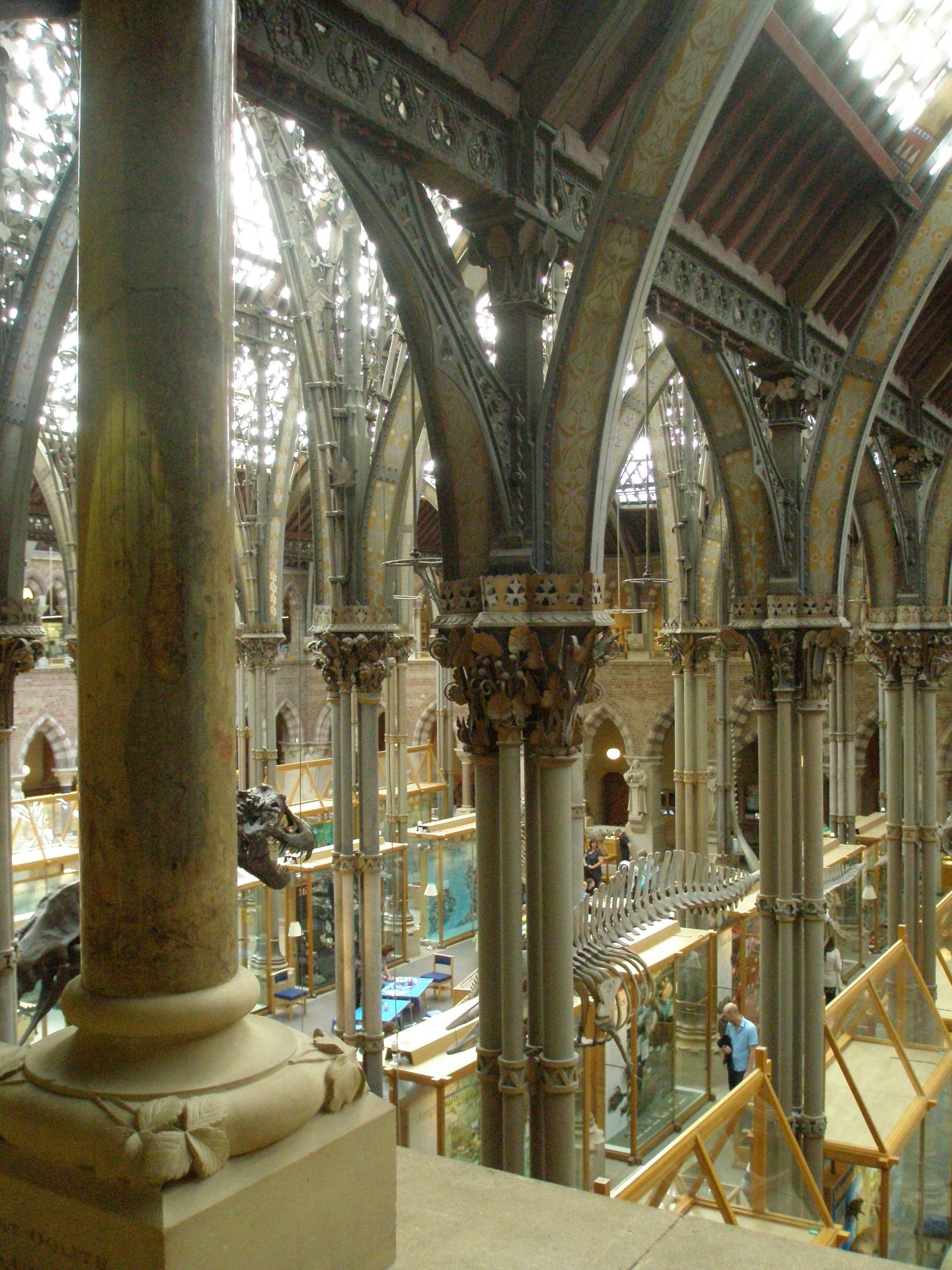
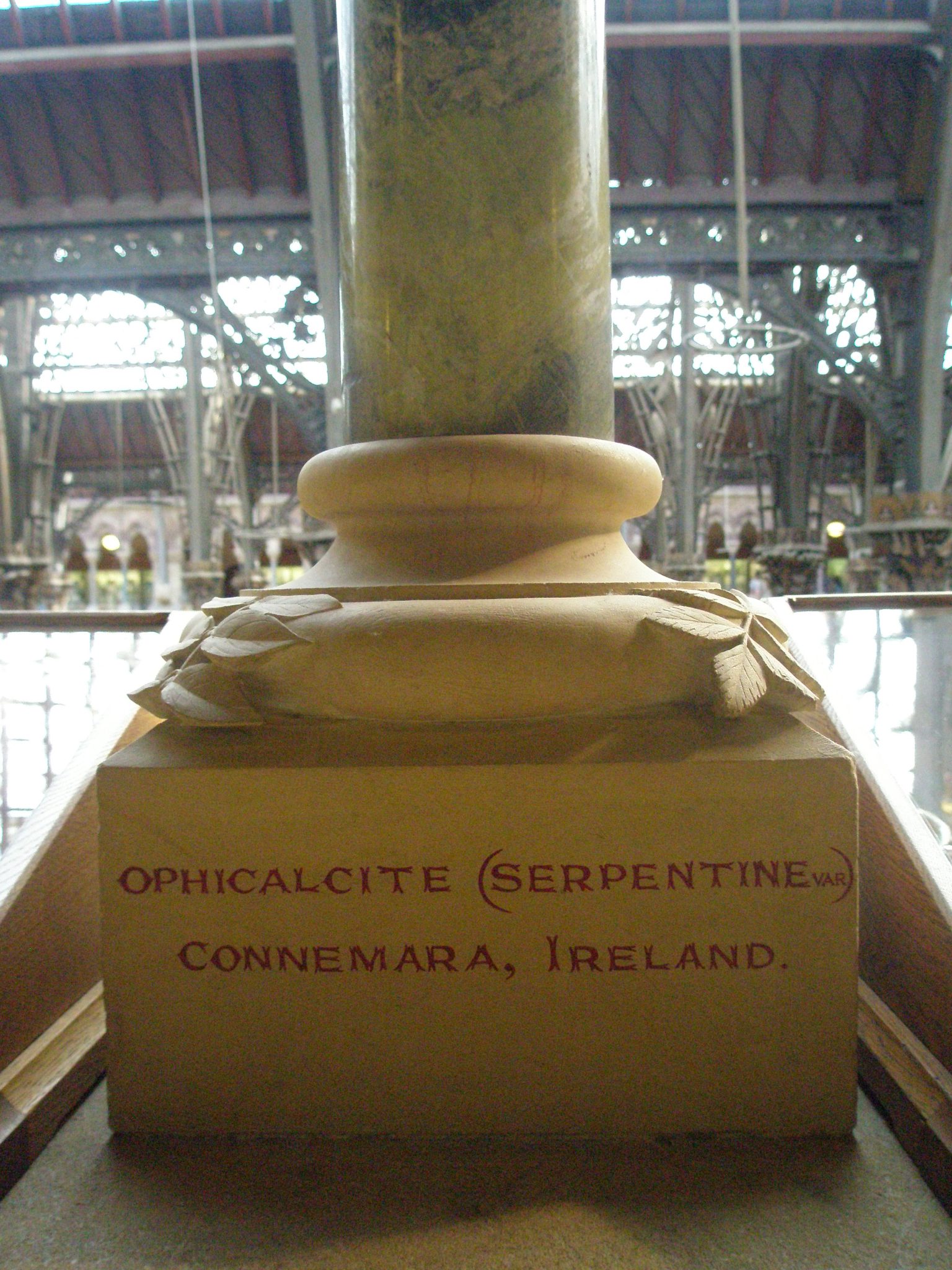
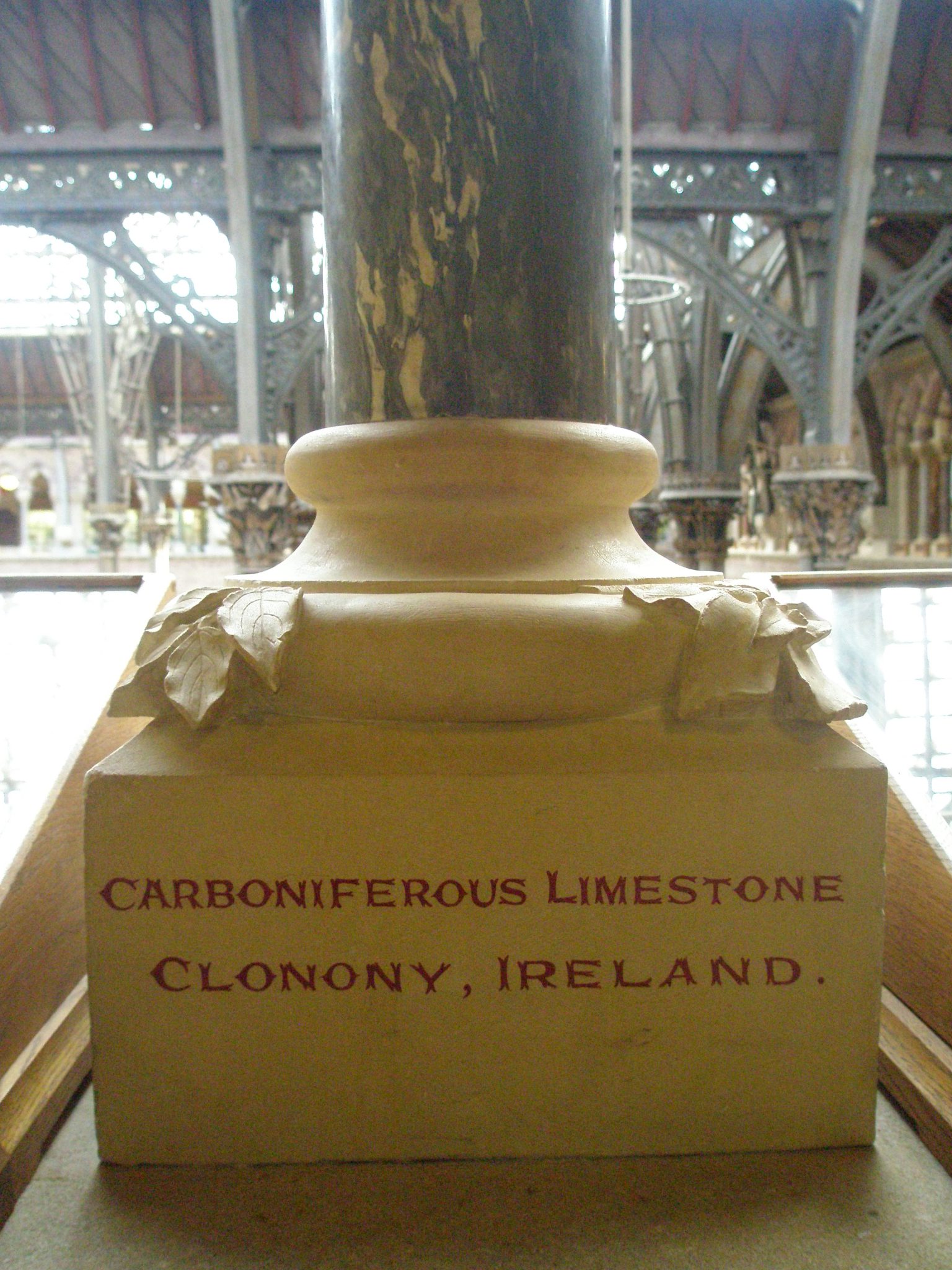 September 16th, Sunday. Clouds and chilly weather had returned.
September 16th, Sunday. Clouds and chilly weather had returned.
At 11 AM I made the 3 minute walk from the Old Bank Hotel, past the Radcliffe Camera, to the Bodleian Library, where I’d pre-booked a ticket for their 90 minute extended tour: “Explore the Reading Rooms.” Each of these tours allows only 14 guests, so advance planning is essential.
In the 90 minutes of that morning’s tour, our charming guide did his best to help us make sense of the history of Oxford University, and of the Bodleian. And, just to be sure that we’d read a few books in our lives, before we progressed from one area of the building to the next, he quizzed us. What do you suppose was the first book in English that the Library bought? What was Becket’s first name? What do you suppose the Library’s Convocation House might have been used for? Who is the only woman poet represented on the 3rd floor reading room frescoes? Between the 14 visitors, at least one of us was able to cough up each reply, and so the tour continued. 1–The Canterbury Tales, 2–Thomas, 3–Parliament met there during the Civil War, 4–Sappho….PHEW!
At the end of the tour, as our little group dispersed in Bodleian’s courtyard, a mob of bellering tourists surged around us, oblivious to the many signs that command: “Silence, Please!”
The noisemakers were immediately approached by a uniformed gentleman who “Shusshed” them. Apparently, the Library employs several Full-Time-Shusshers…often a thankless job, I’d expect.
My brain revved-up and Library-ified, I toddled down High Street in the direction of Magdalen College, but I was waylaid for a bit by some dense chocolate cake and cappuccino at The Grand Café (the first coffee house in England: established in 1650).
Still feeling physically creaky, I’d decided to spend my afternoon exploring Magdalen College, mostly because it’s several stone’s
throws from the Old Bank Hotel. I knew that Magdalen was founded in 1458, and is one of the richest and most famous of the University’s 38 colleges, but was otherwise unaware of what I was about to discover. The buildings abutting High Street give no clues about the peaceful cloister within, and no hints about the waterways that snake through College’s vast expanse of parklands. When I passed through the Porter’s Lodge and into St. John’s Quadrangle, I began to realize I’d happened upon another of Earth’s lovely little corners.
Looking back, Oscar Wilde said that the two great turning points in his life were when his father sent him to Oxford, and when society sent him to prison. Although he’d shone academically at Magdalen College and wanted nothing more than to become a don and grow old there, his predilection for young men had become well known, and the College wouldn’t have him. So Wilde, who’d grown to love his Magdalen (who wouldn’t?) was nudged from his carefully-decorated rooms overlooking the Cherwell, and out into the wider world, which eventually crushed him. But the same institution that cast Wilde out has finally given him the permanent berth he dreamed of. In the Hall leading to the Chapel, the busts of two distinguished old boys are centrally mounted: those of Lord Denning (The Master of the Rolls & Records of the Chancery of England–the 2nd most senior judge in England and Wales), and Oscar Wilde (who the British legal system destroyed). I hope Wilde’s ghost is lurking, smiling a bit at the irony of it all.
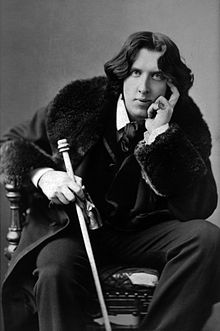
September 17th, Monday—Oxford, 10 AM.
With an hour to spare until my British friends Anne and David Guy arrived to collect me, I decided I had time for a fast climb to the Cupola at the top of the Sheldonian Theatre. As I paid my 2.50 Pound admission fee, the nice lady who’d taken my coins cautioned, “There are 144 steps …but you’re young!” Taking a deep breath, I literally ran up the winding stairway, counting as I went. At 114, I skidded to a stop: there was no further to go. I realized that my ear infection had affected my hearing. Pleased to have 30 fewer steps to climb than I’d expected, I gave thanks for every single one of life’s small blessings, and then feasted my eyes upon the quiet City that lay before me.
Views over Oxford from the Cupola of the Sheldonian Theatre:
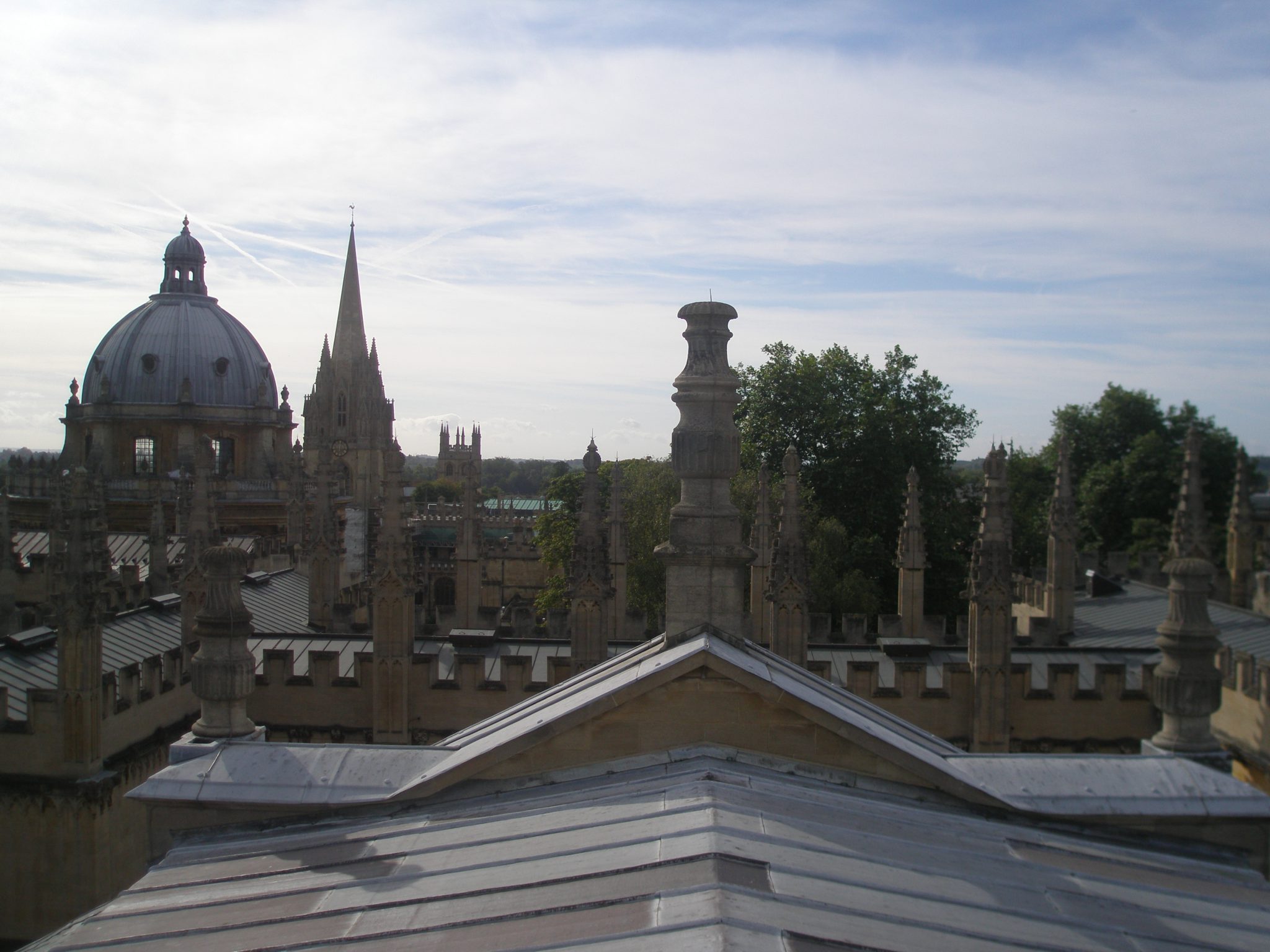
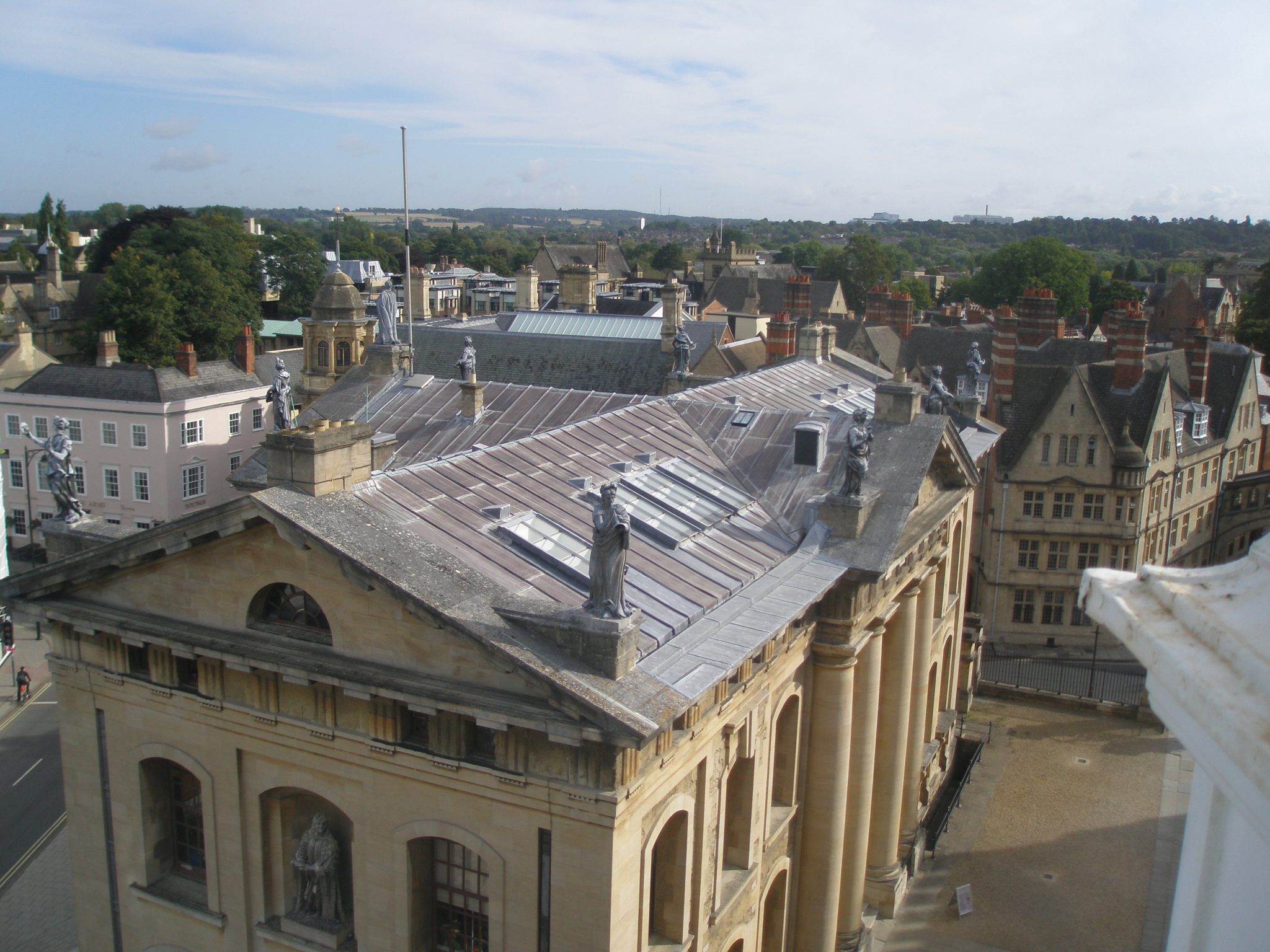
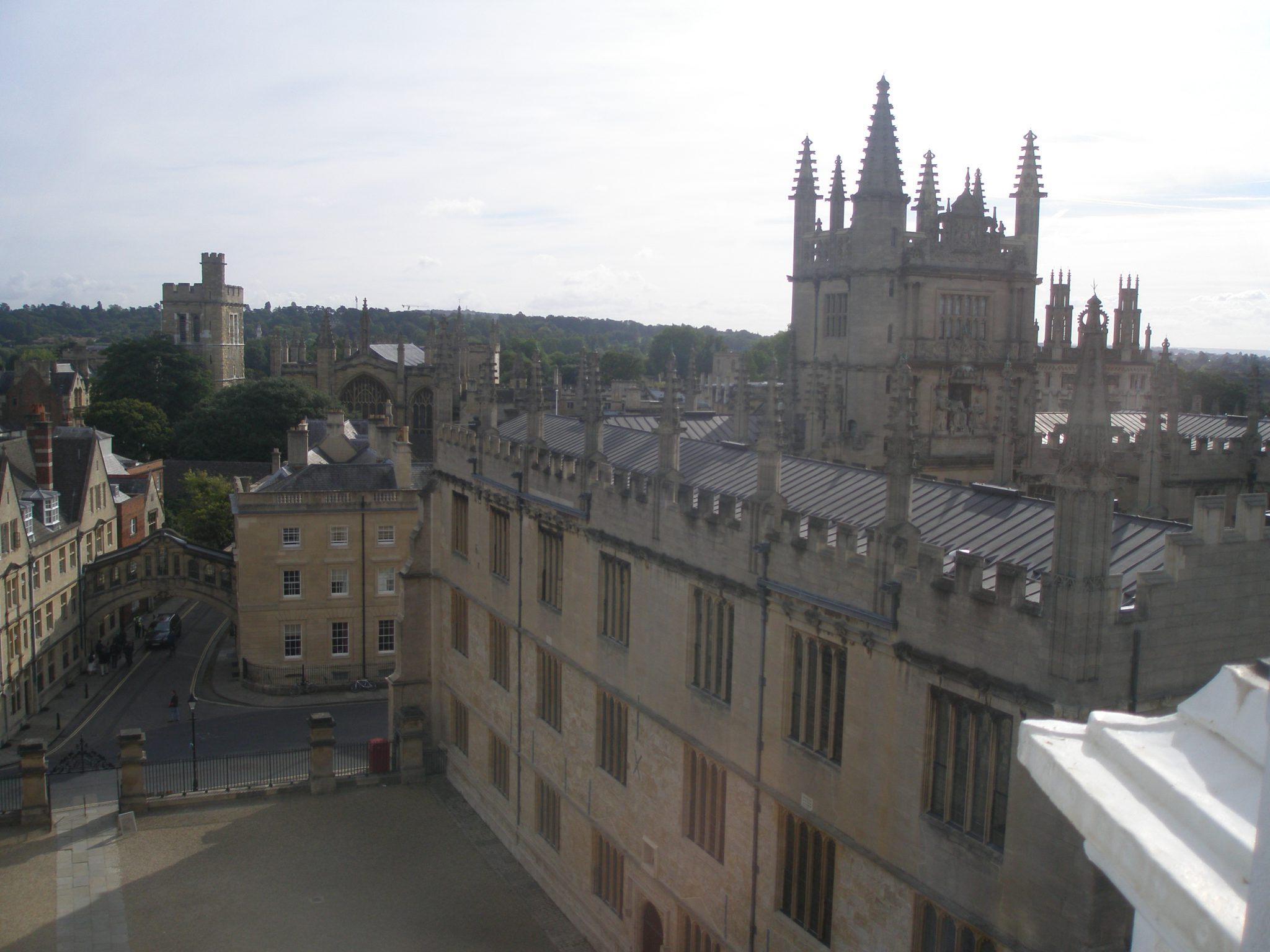
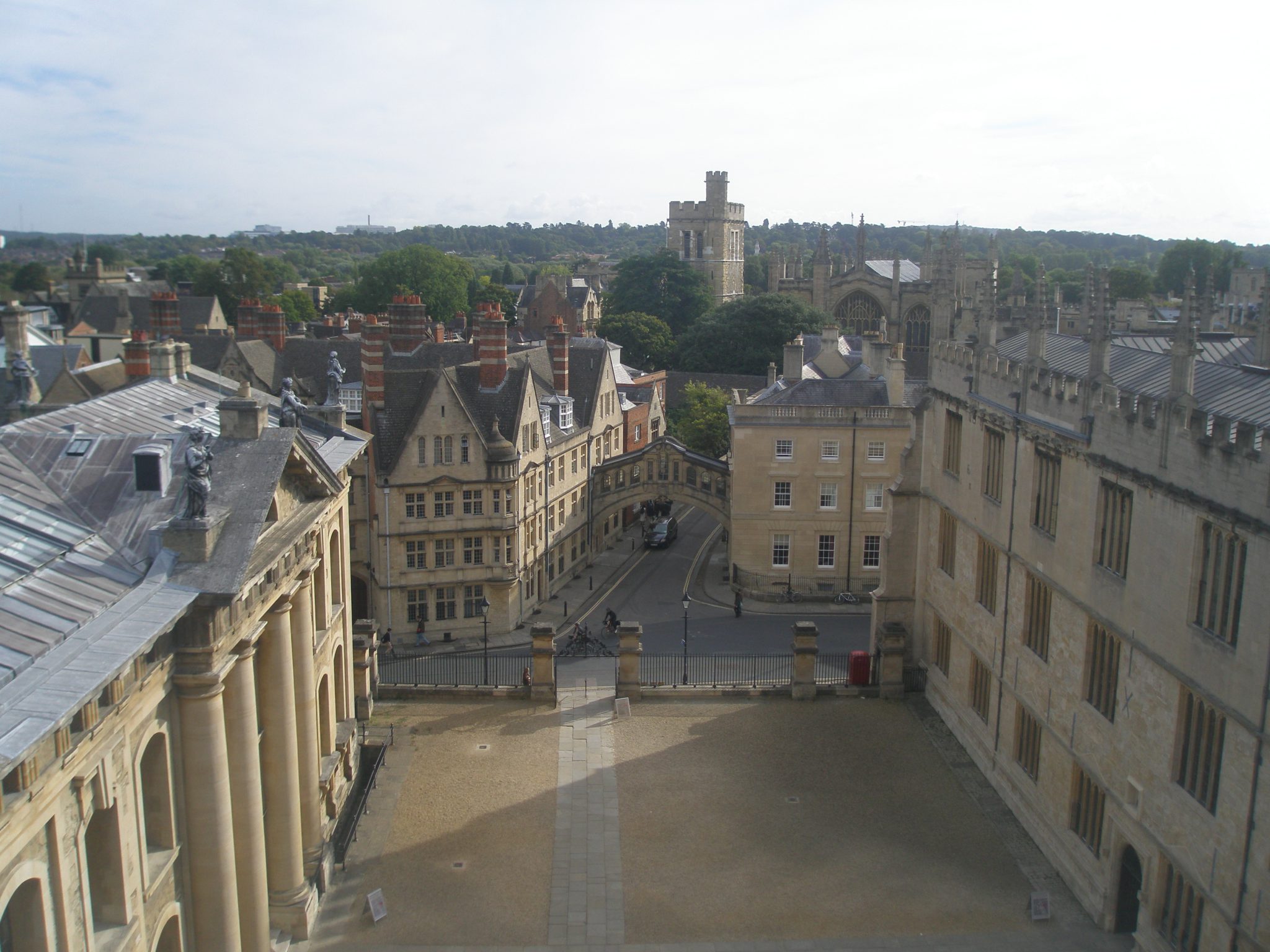
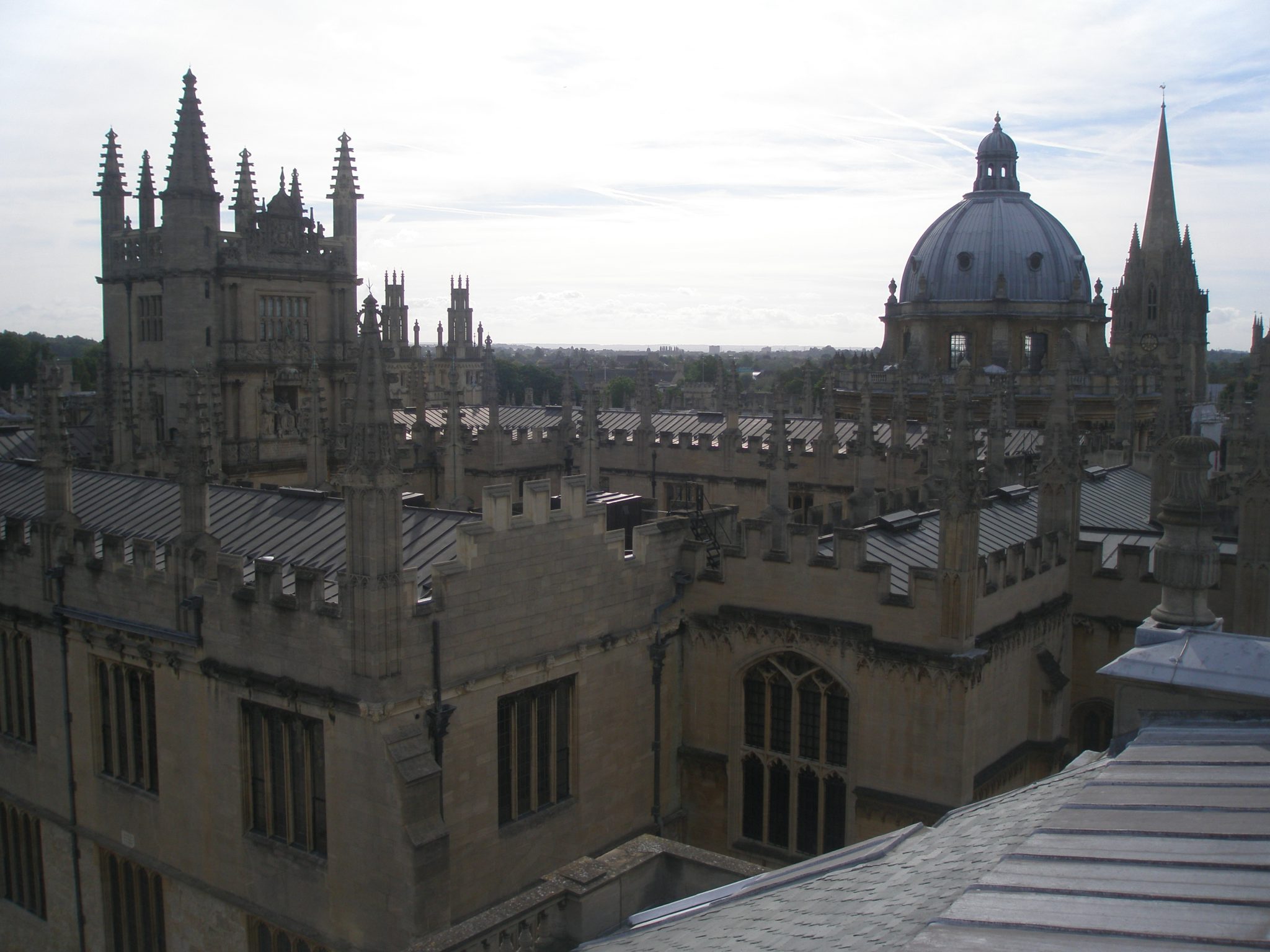
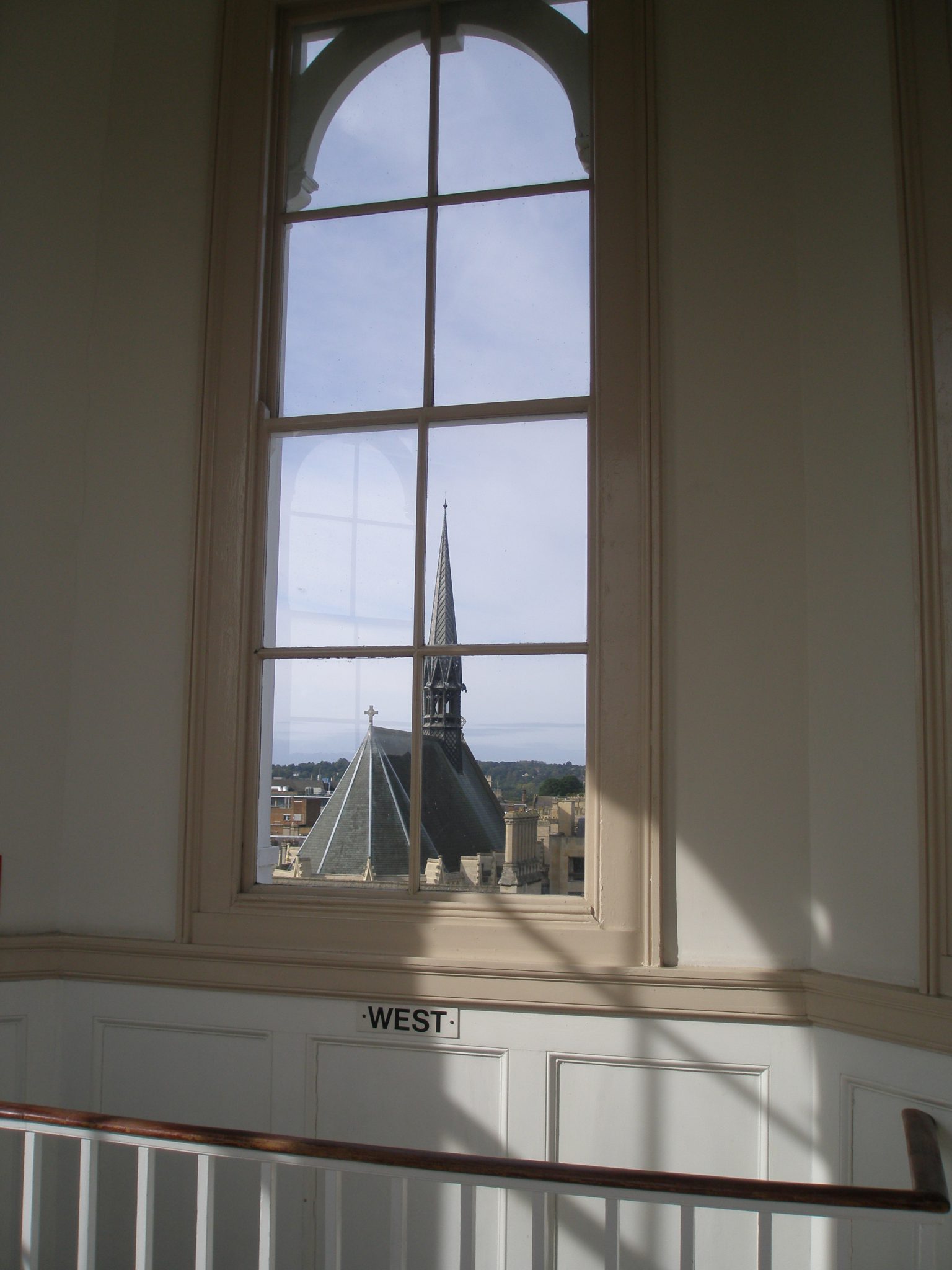
Next, Chapter 5—I begin Serious Ramblings in the English Countryside:
Stowe Landscape Park; Hidcote Gardens; Severn Valley Railway.
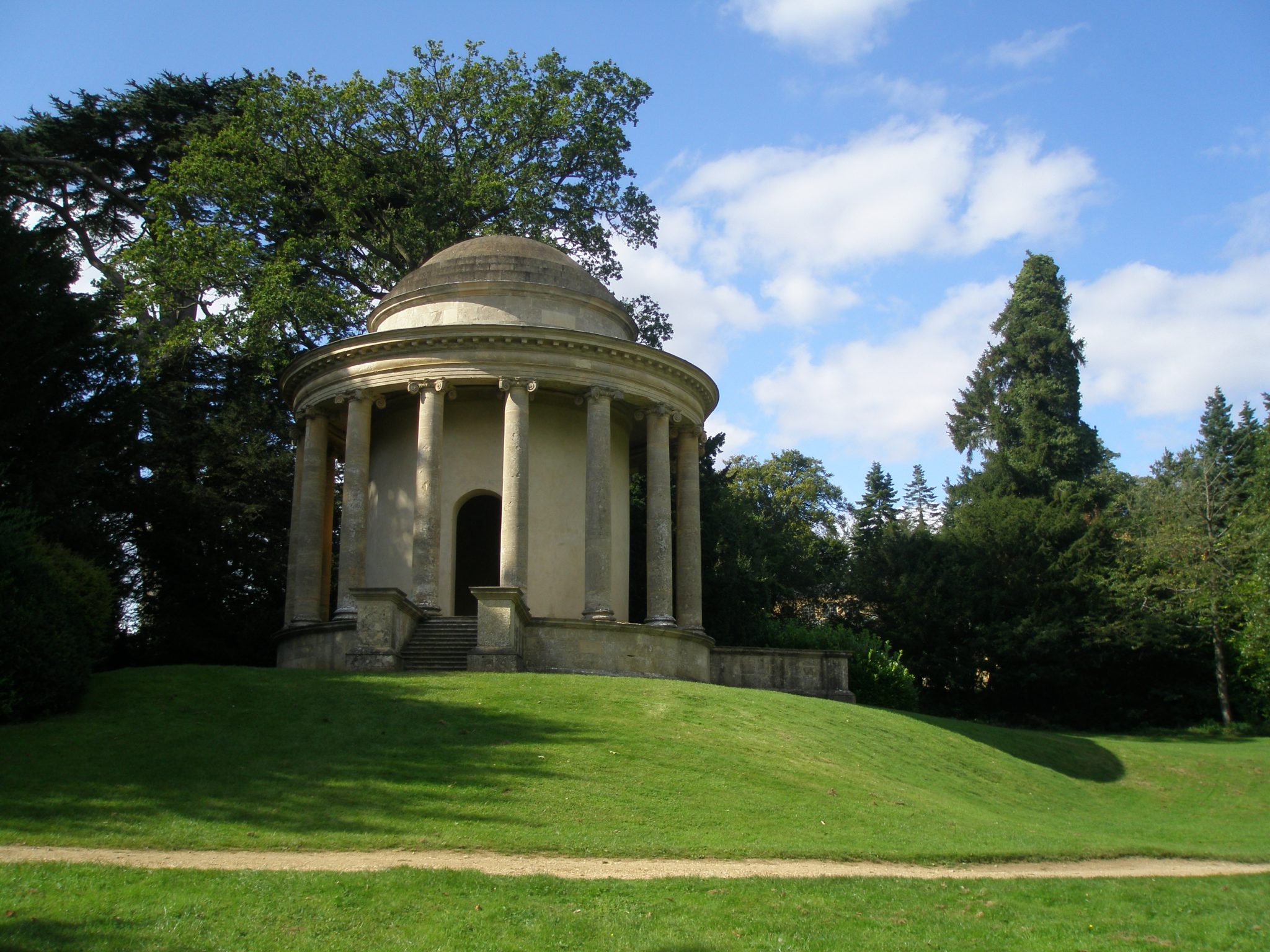
The Temple of Ancient Virtue, at Stowe Landscape Park (formerly the gardens of the Marquis of Buckingham)
Copyright 2012. Nan Quick–Nan Quick’s Diaries for Armchair Travelers.
Unauthorized use and/or duplication of this material without express &
written permission from Nan Quick is strictly prohibited.

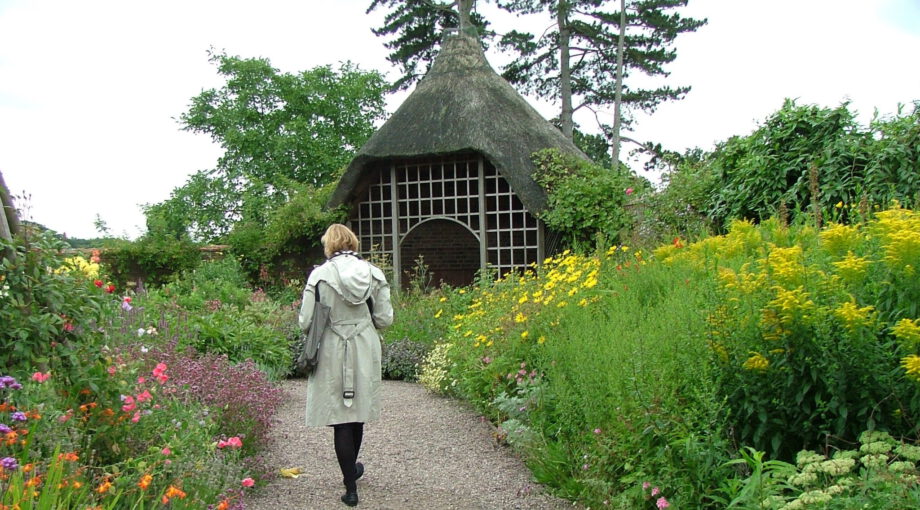

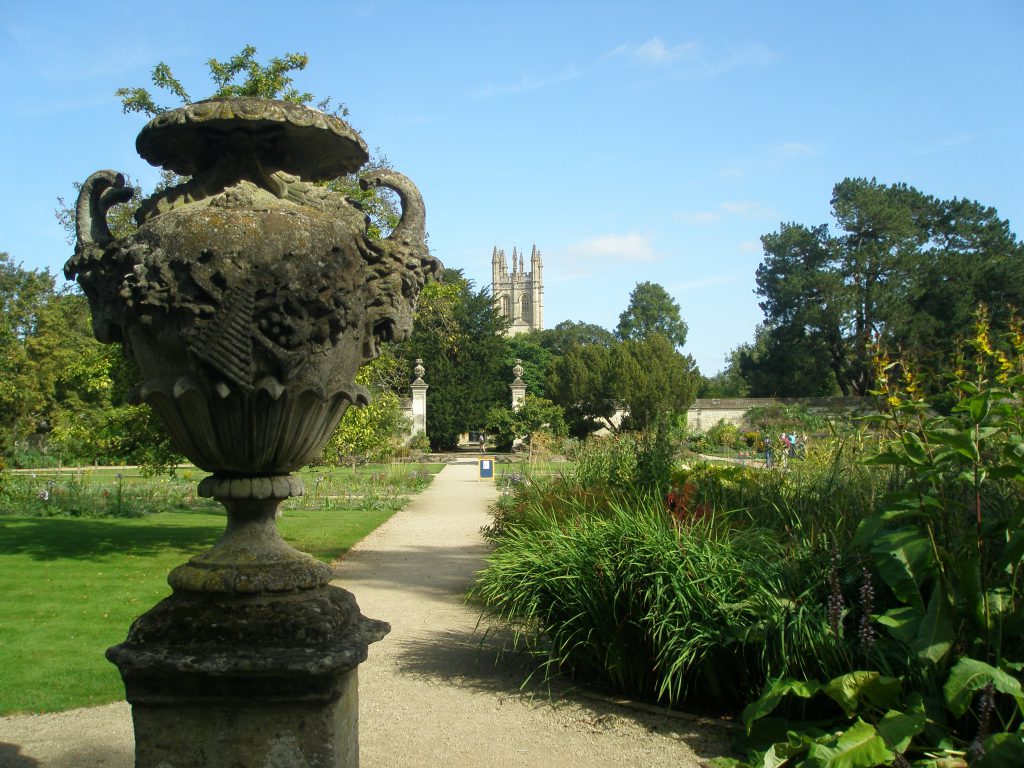
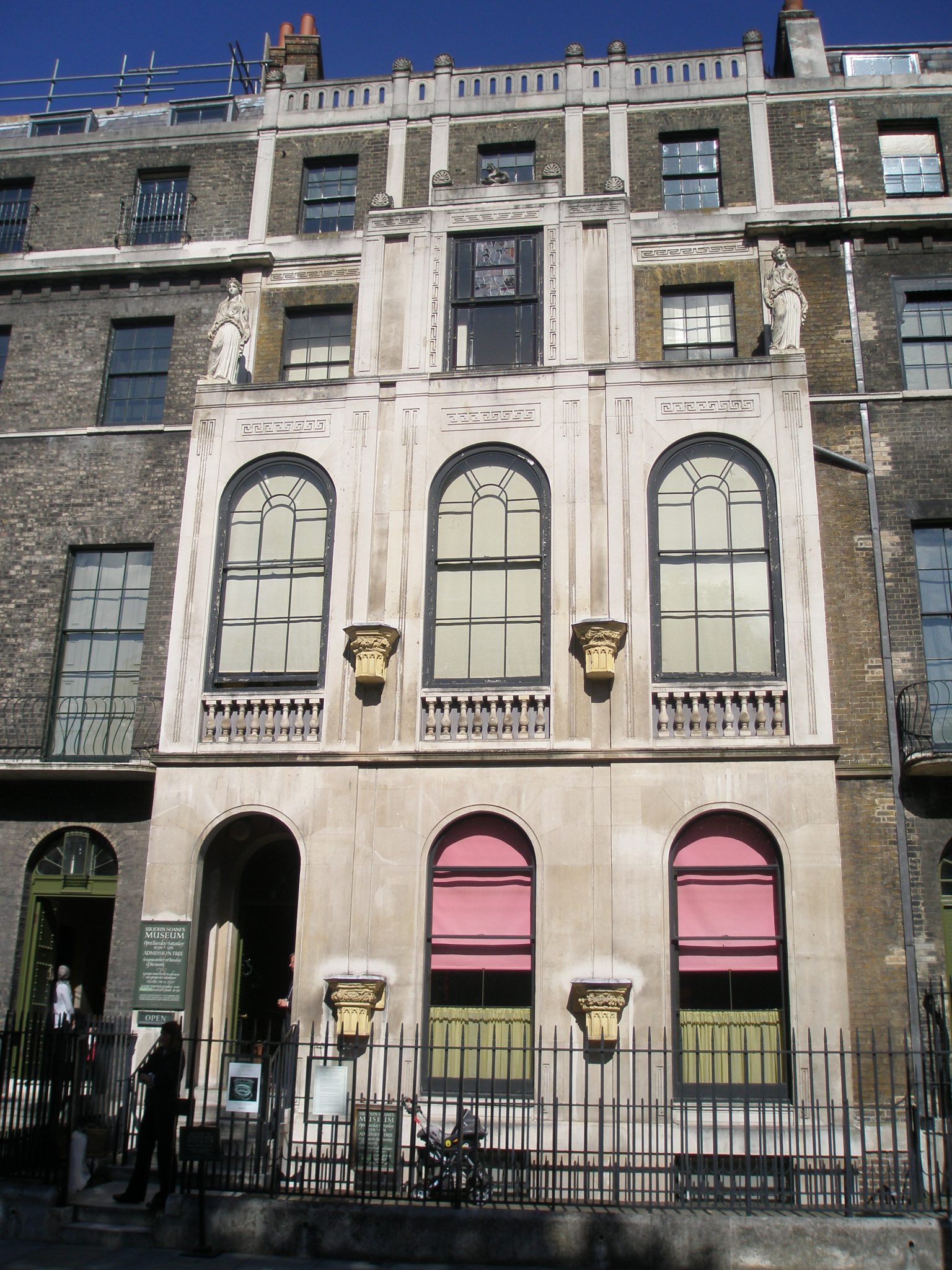
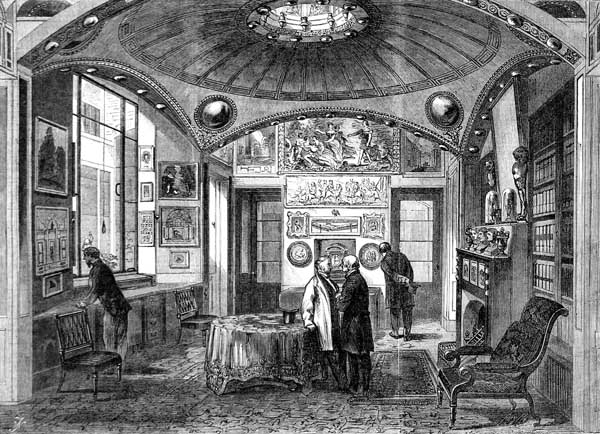
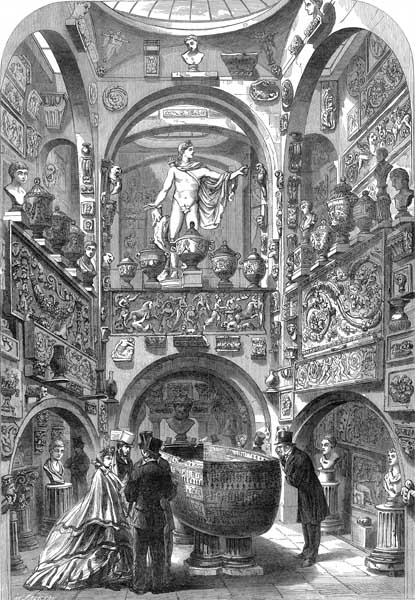
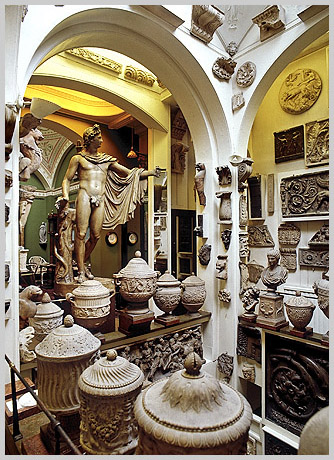

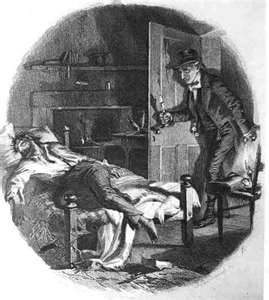

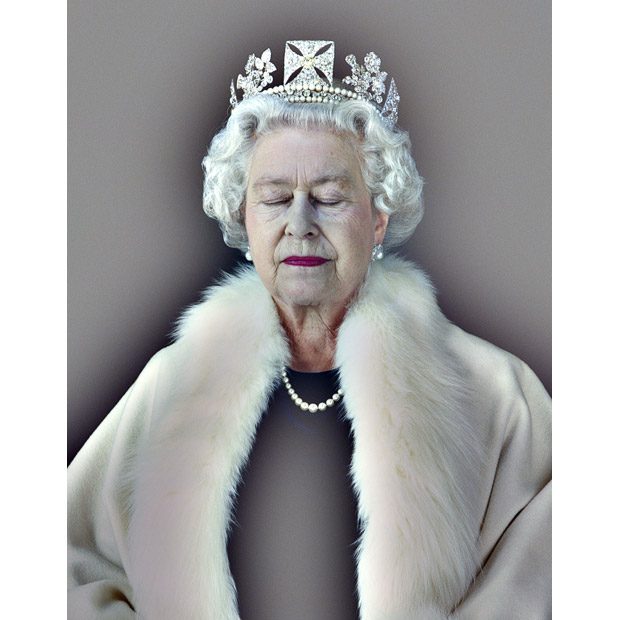

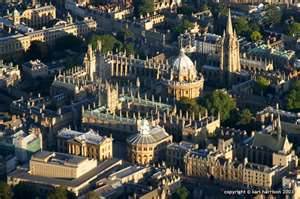
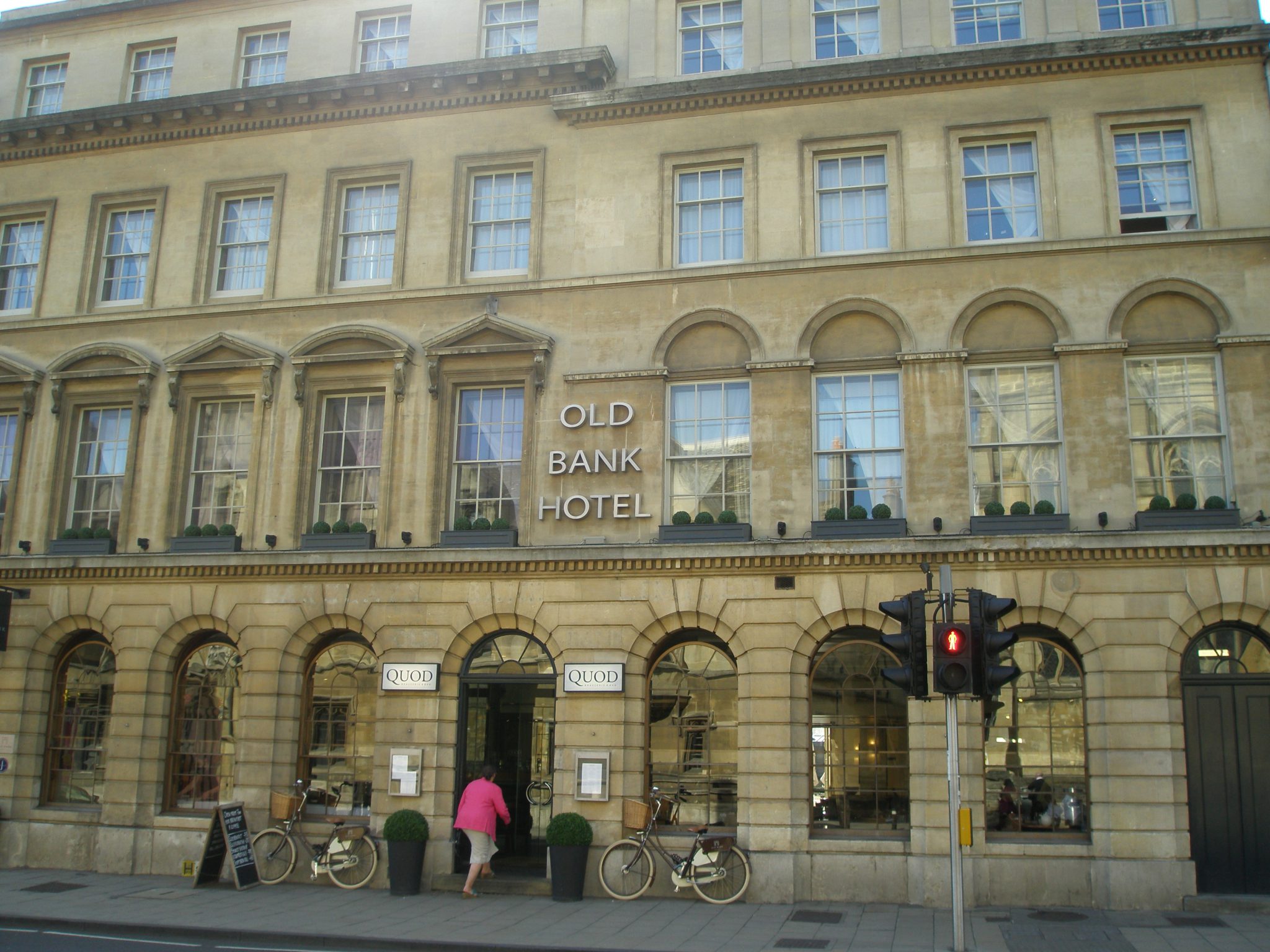
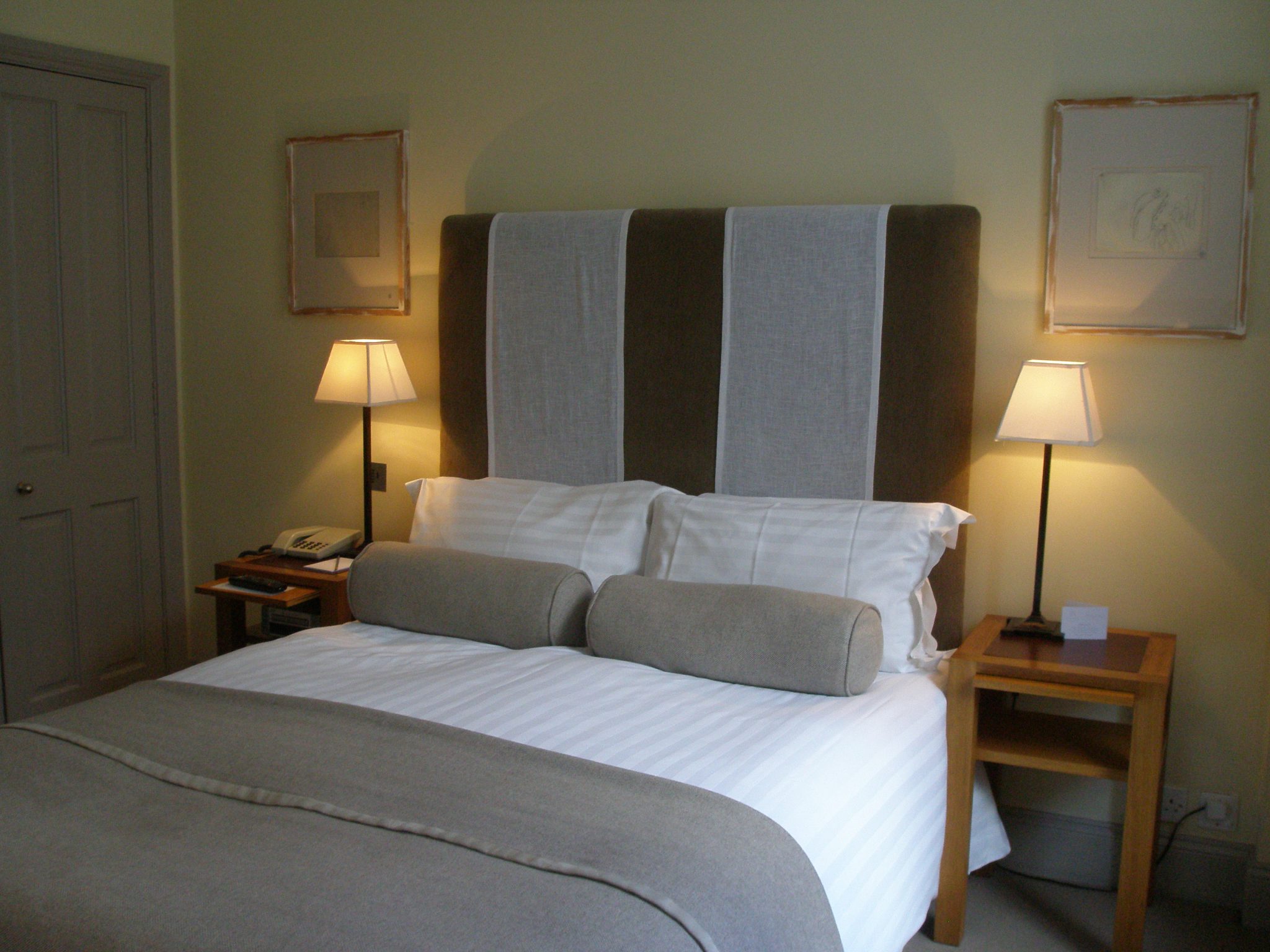
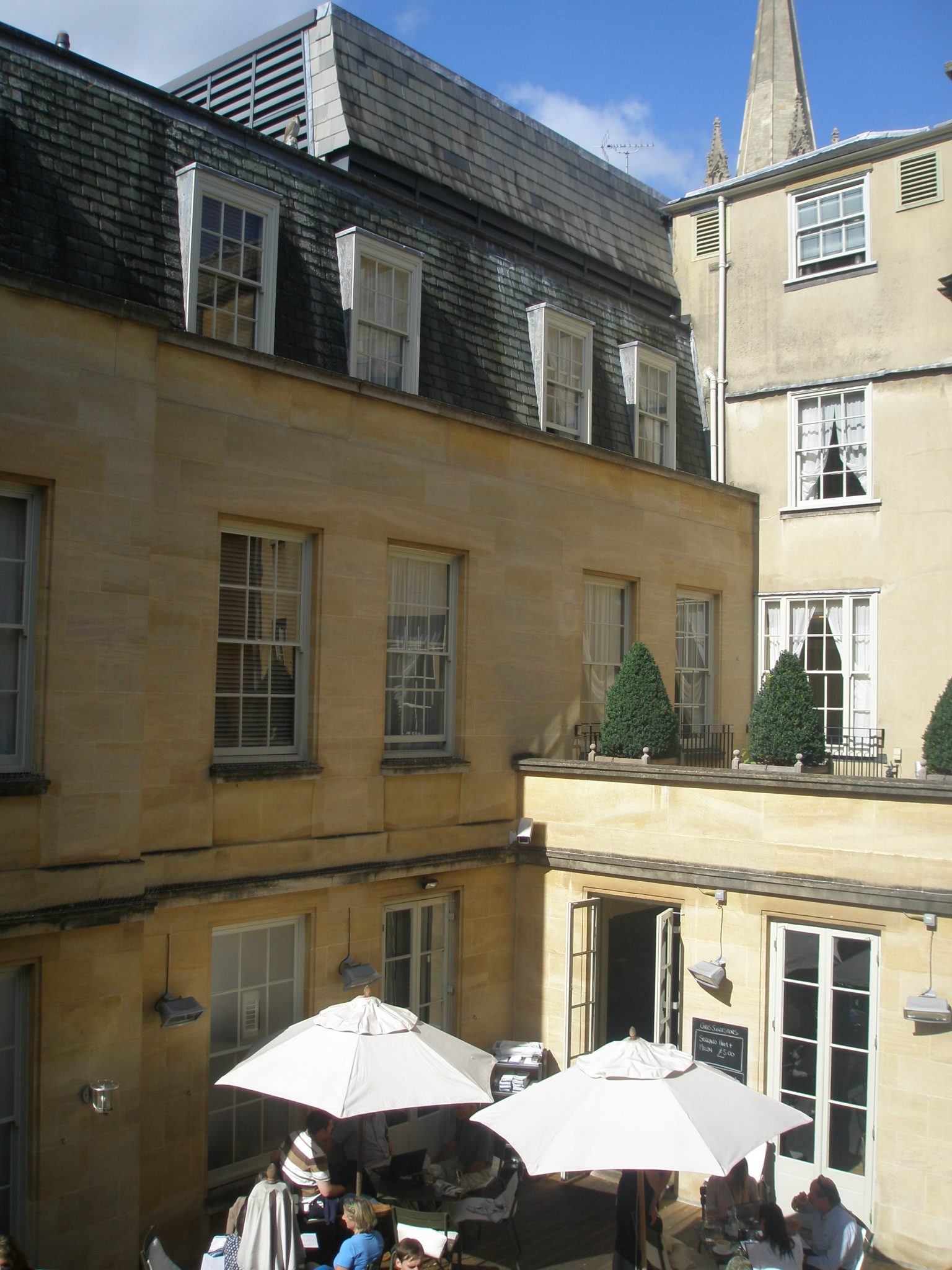
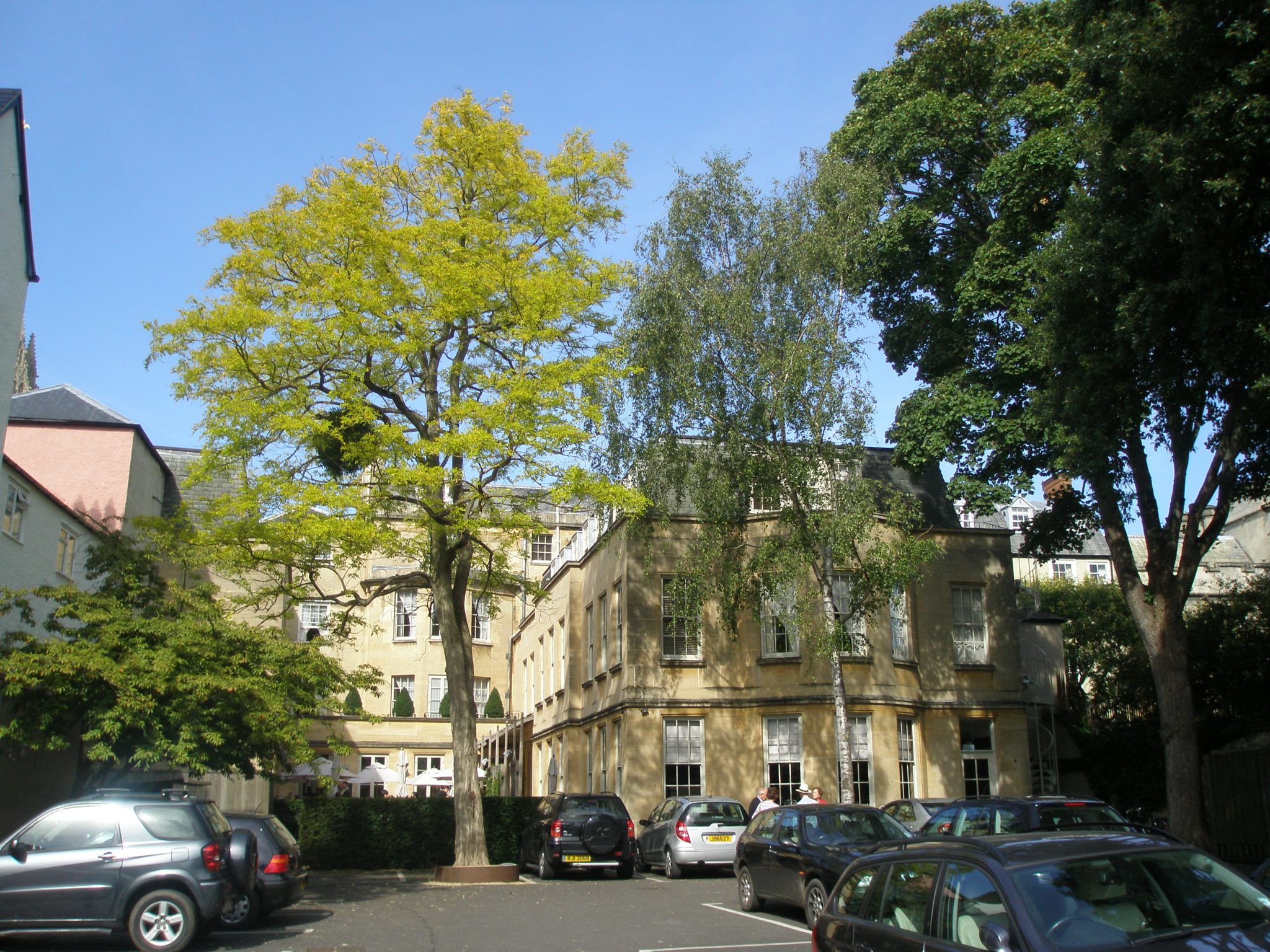

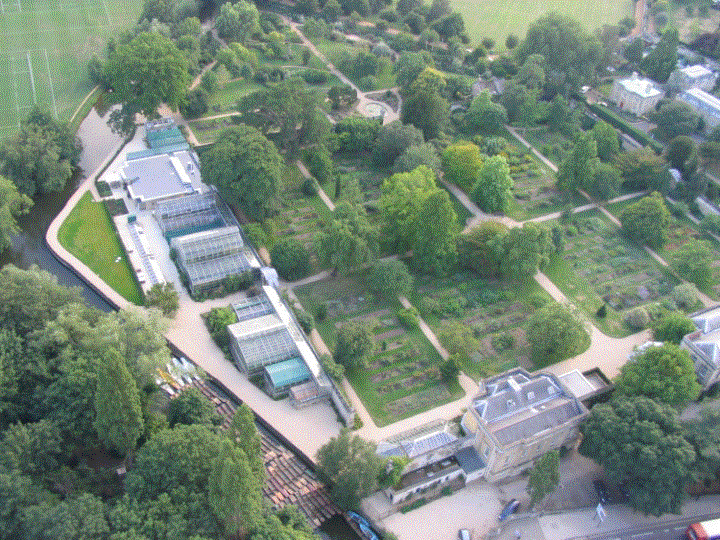
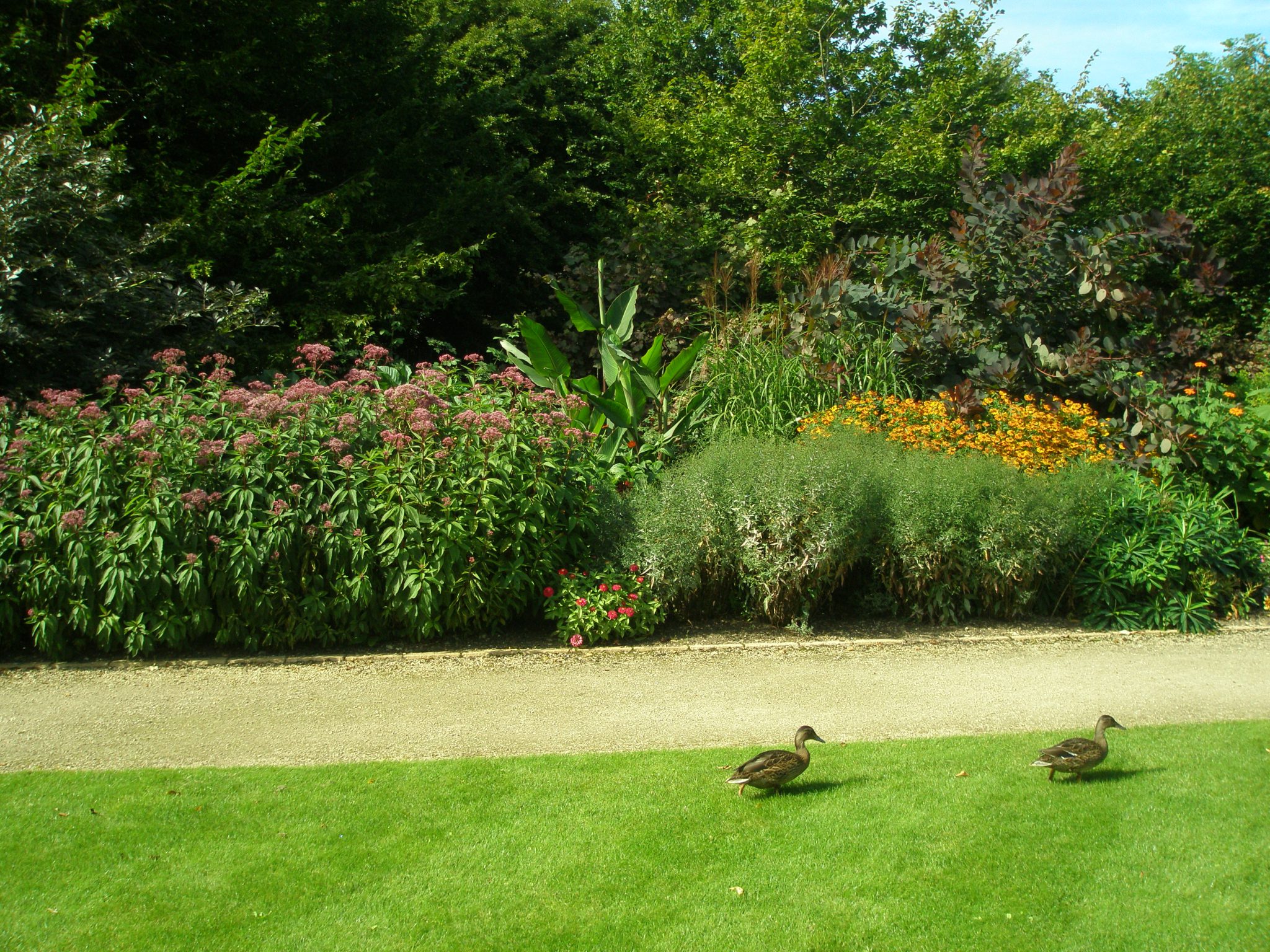
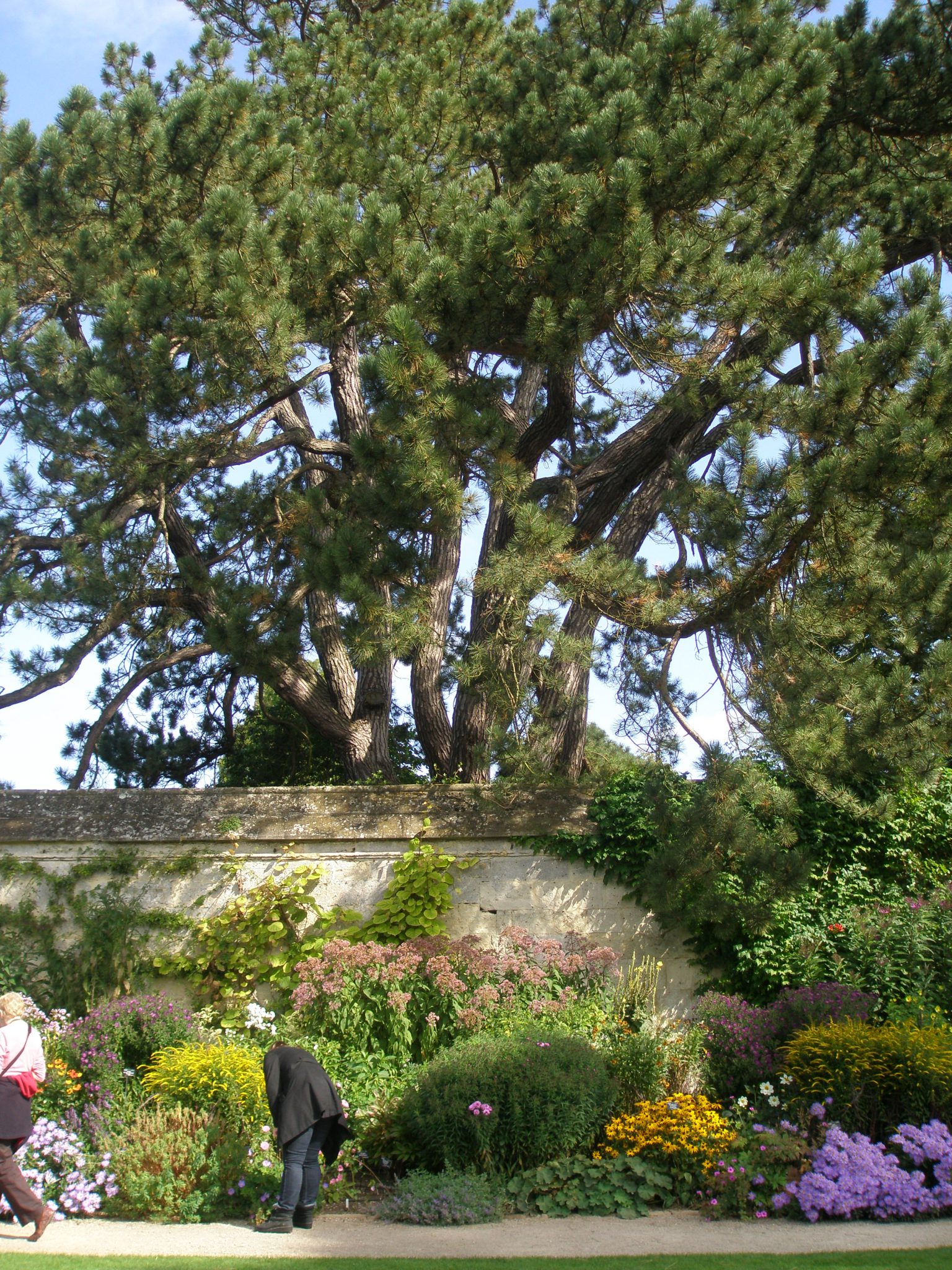
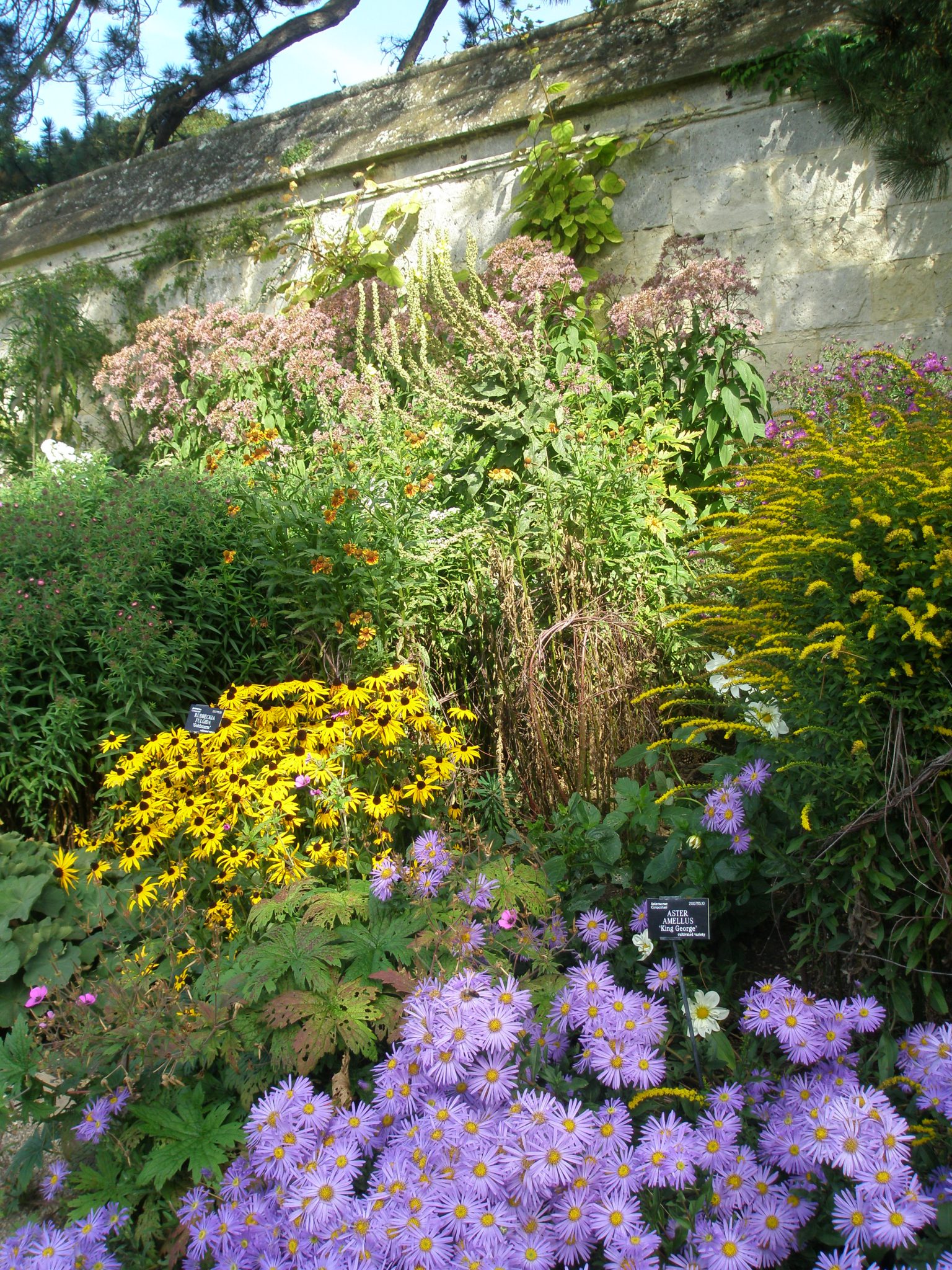
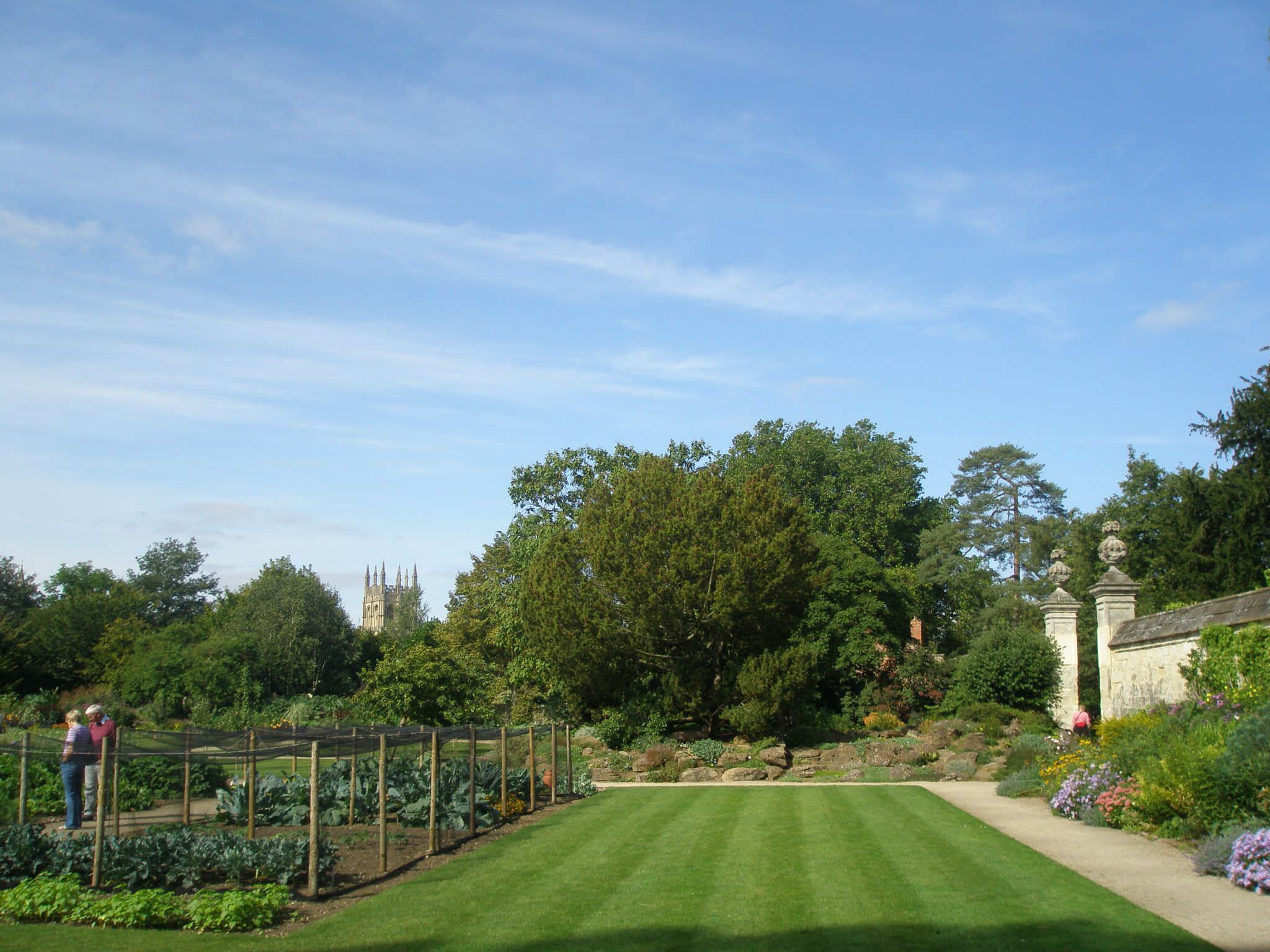

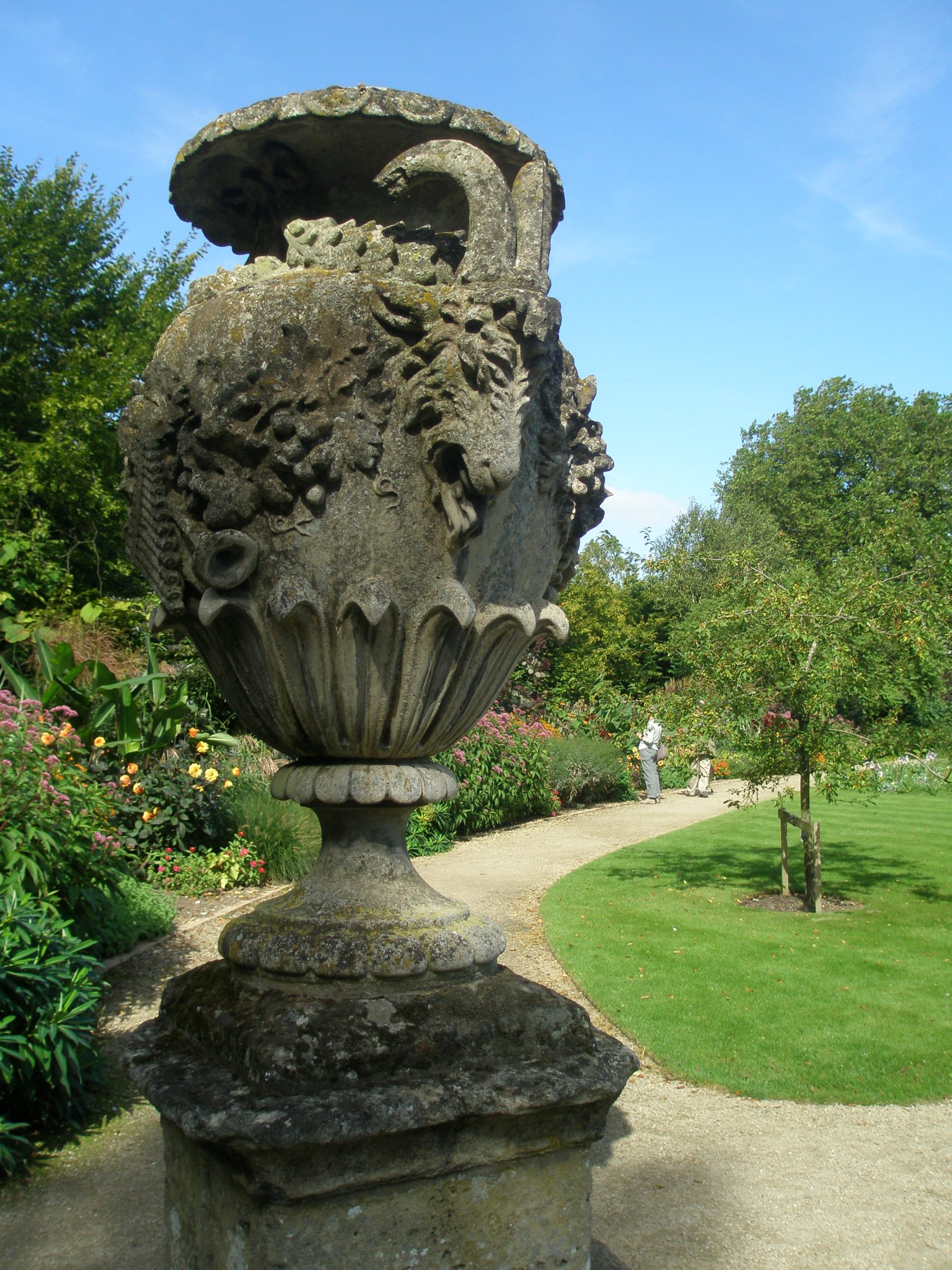


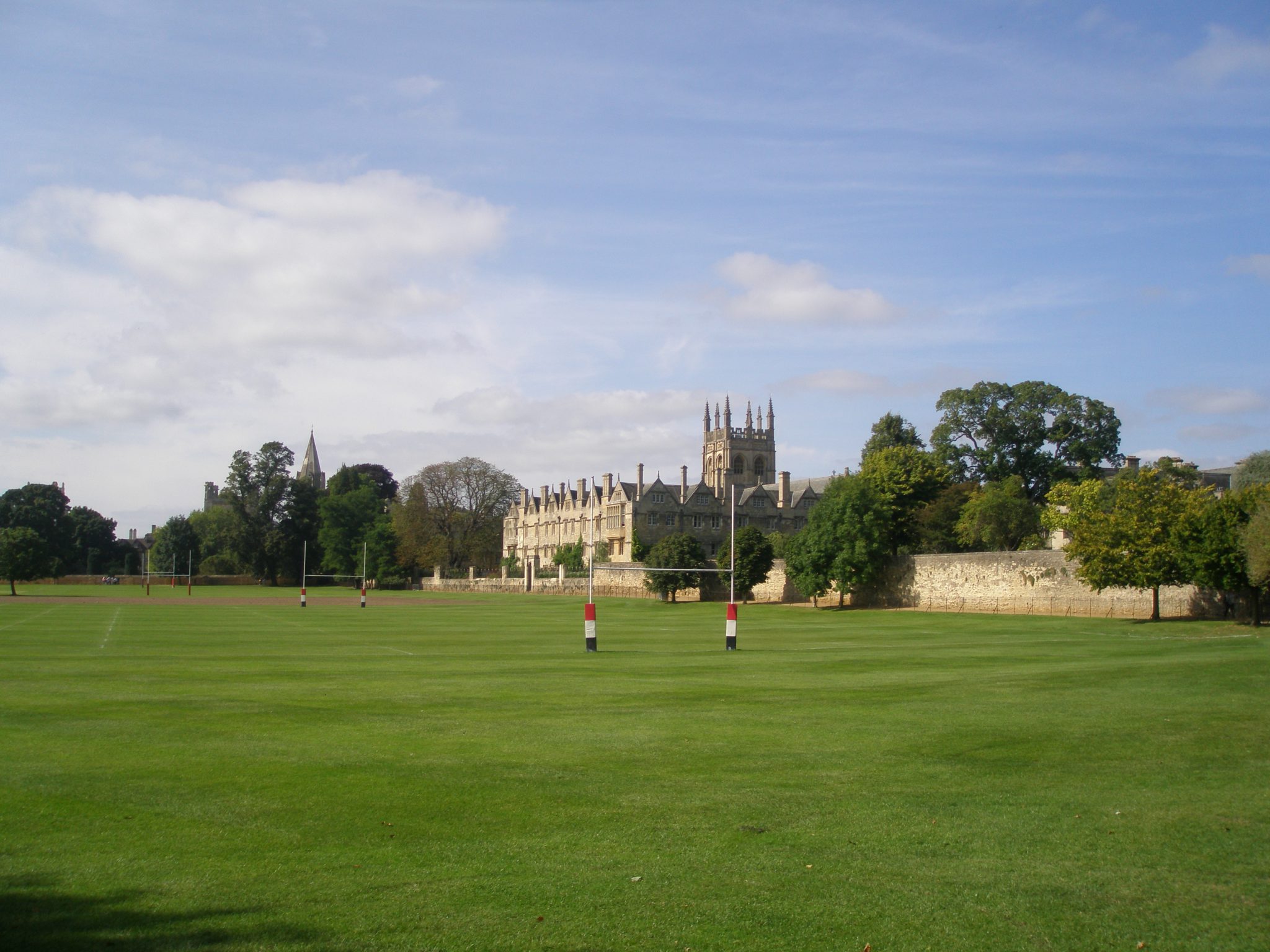
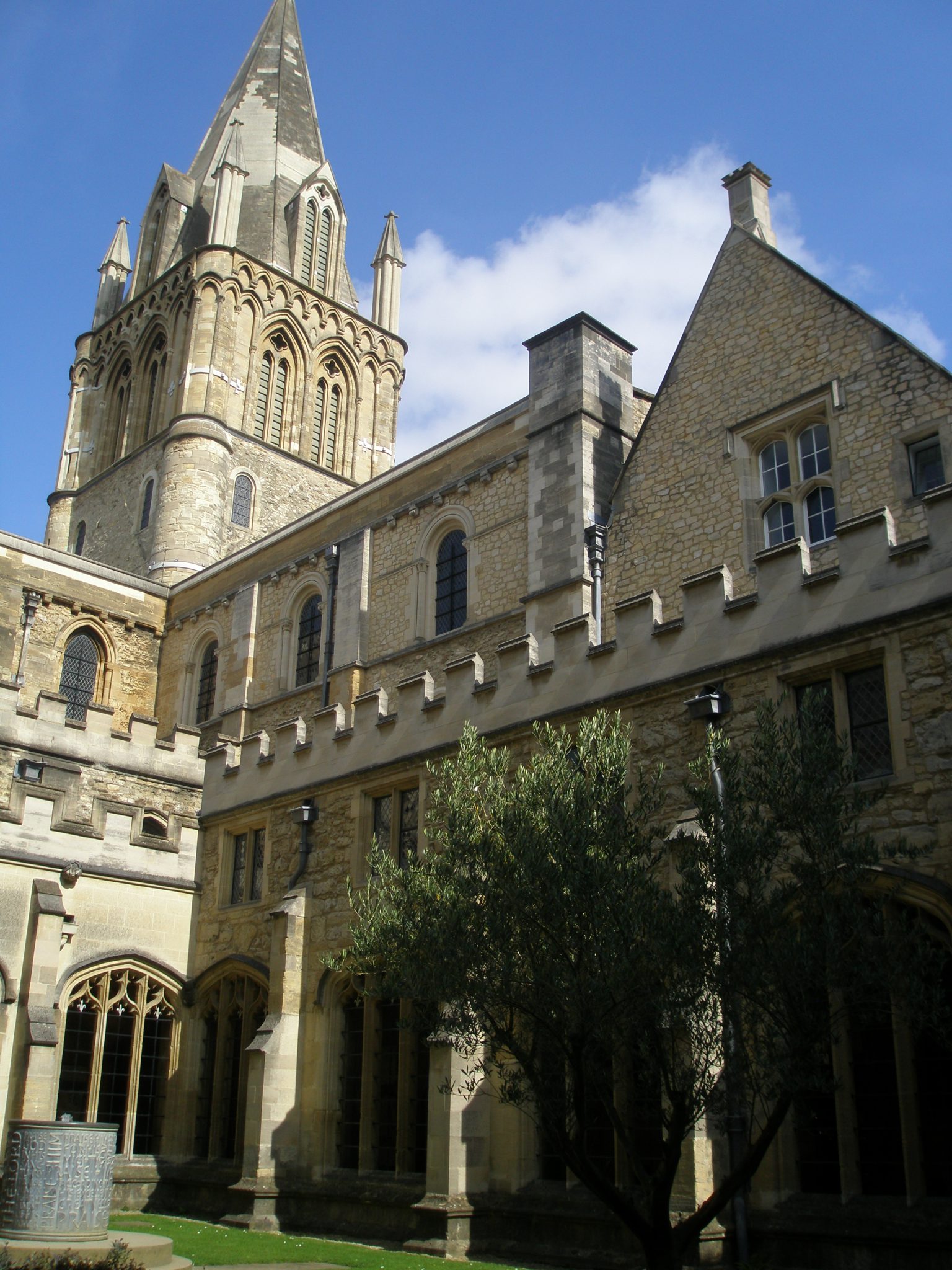
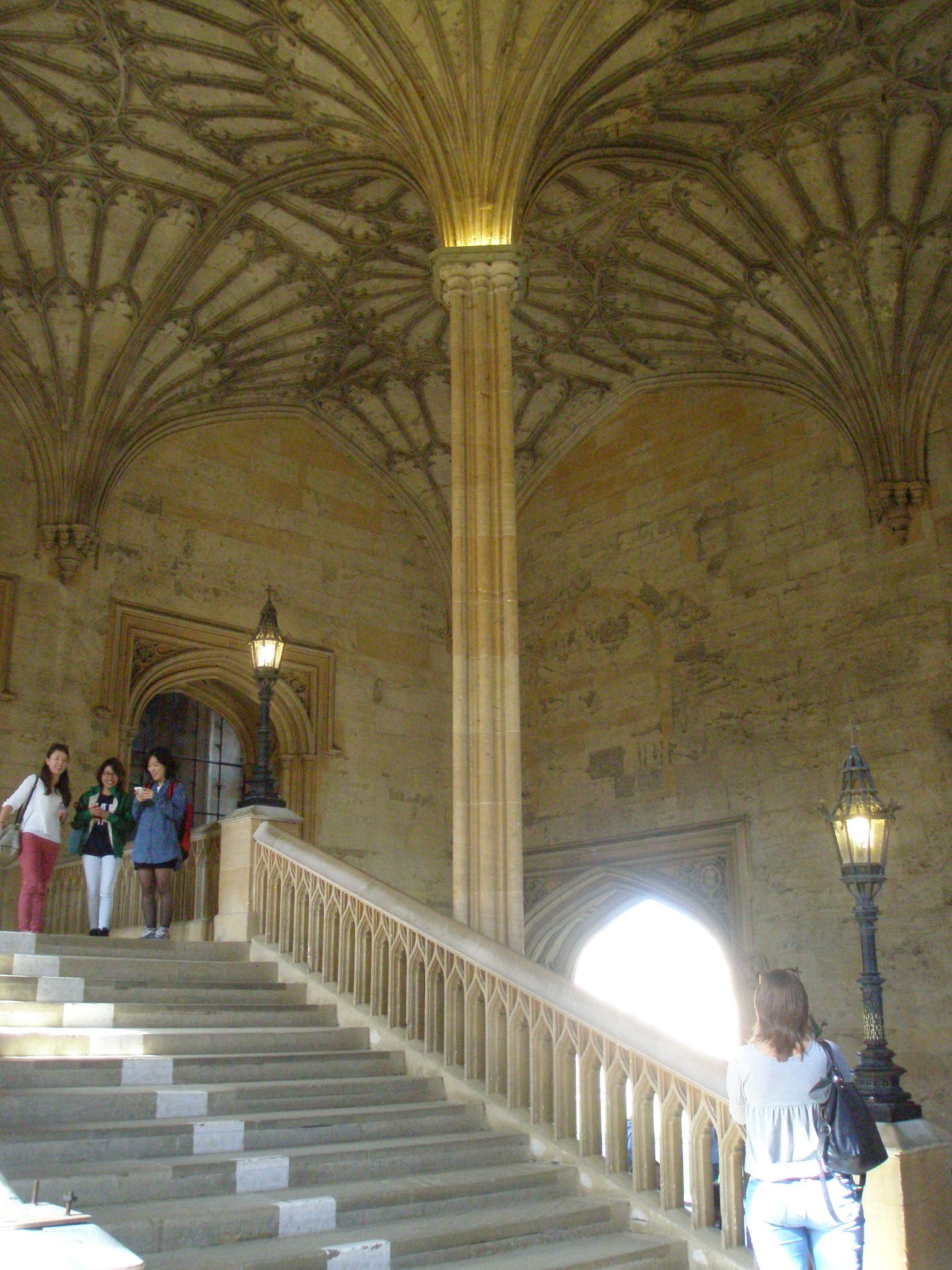
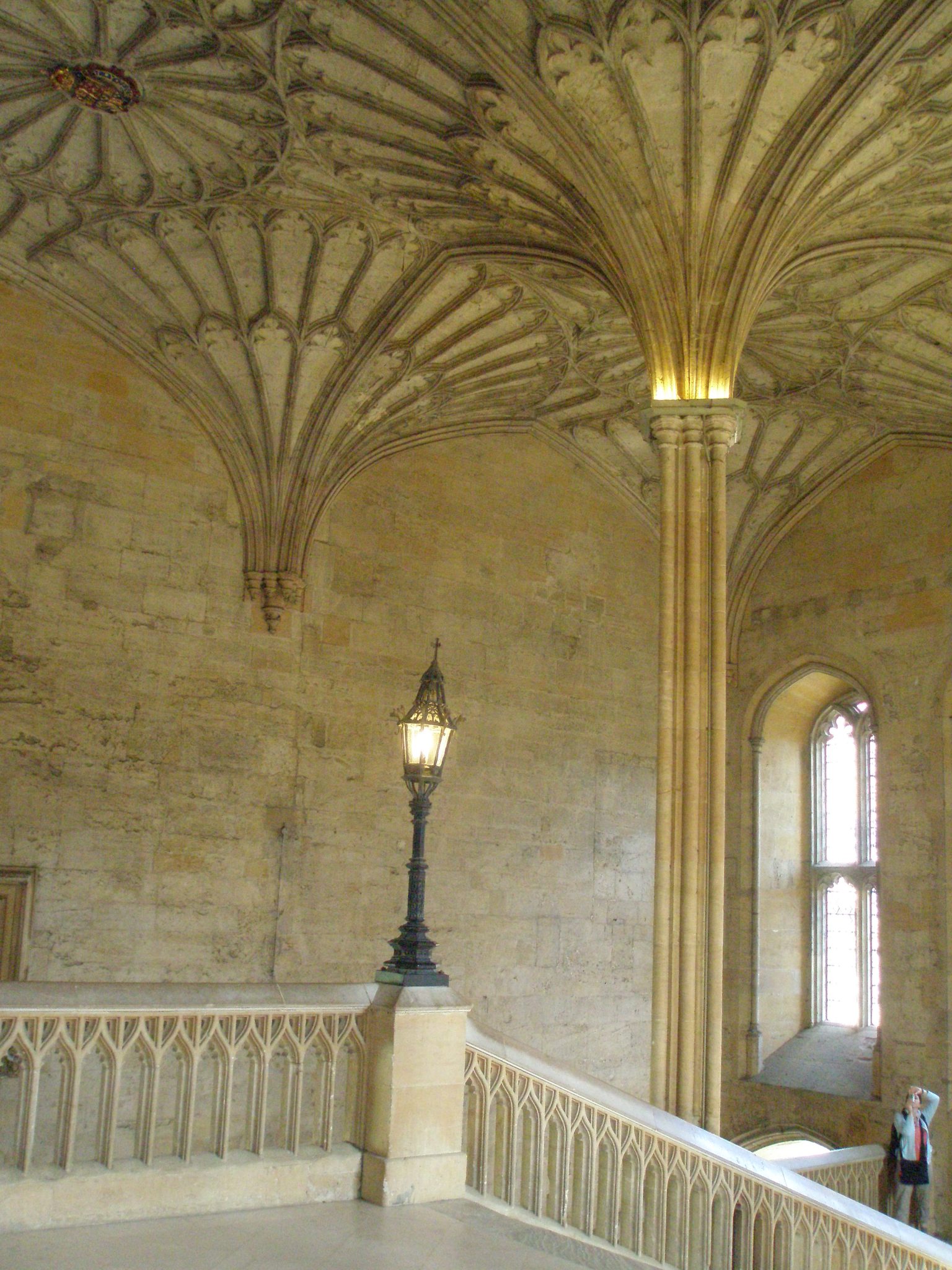
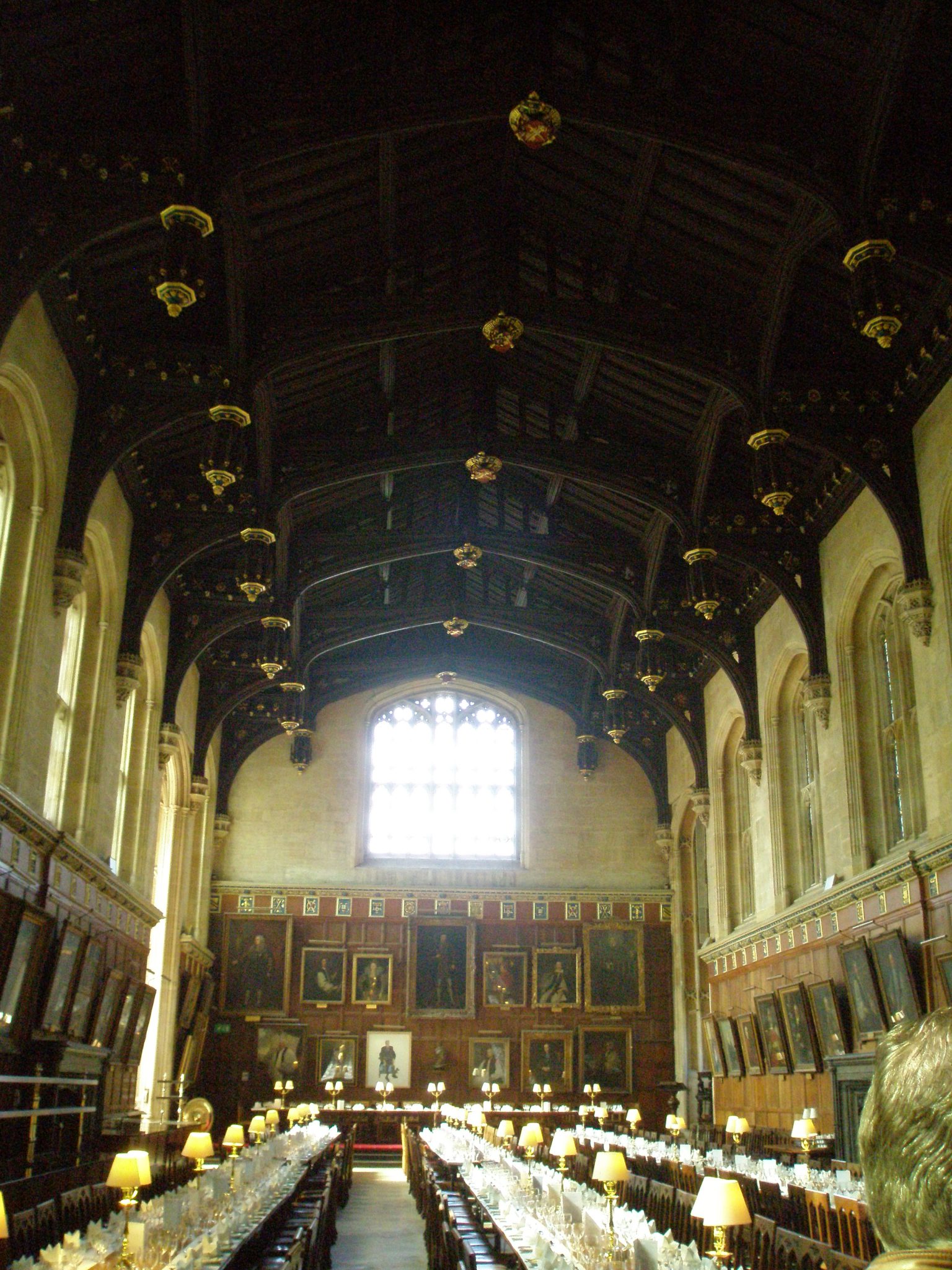
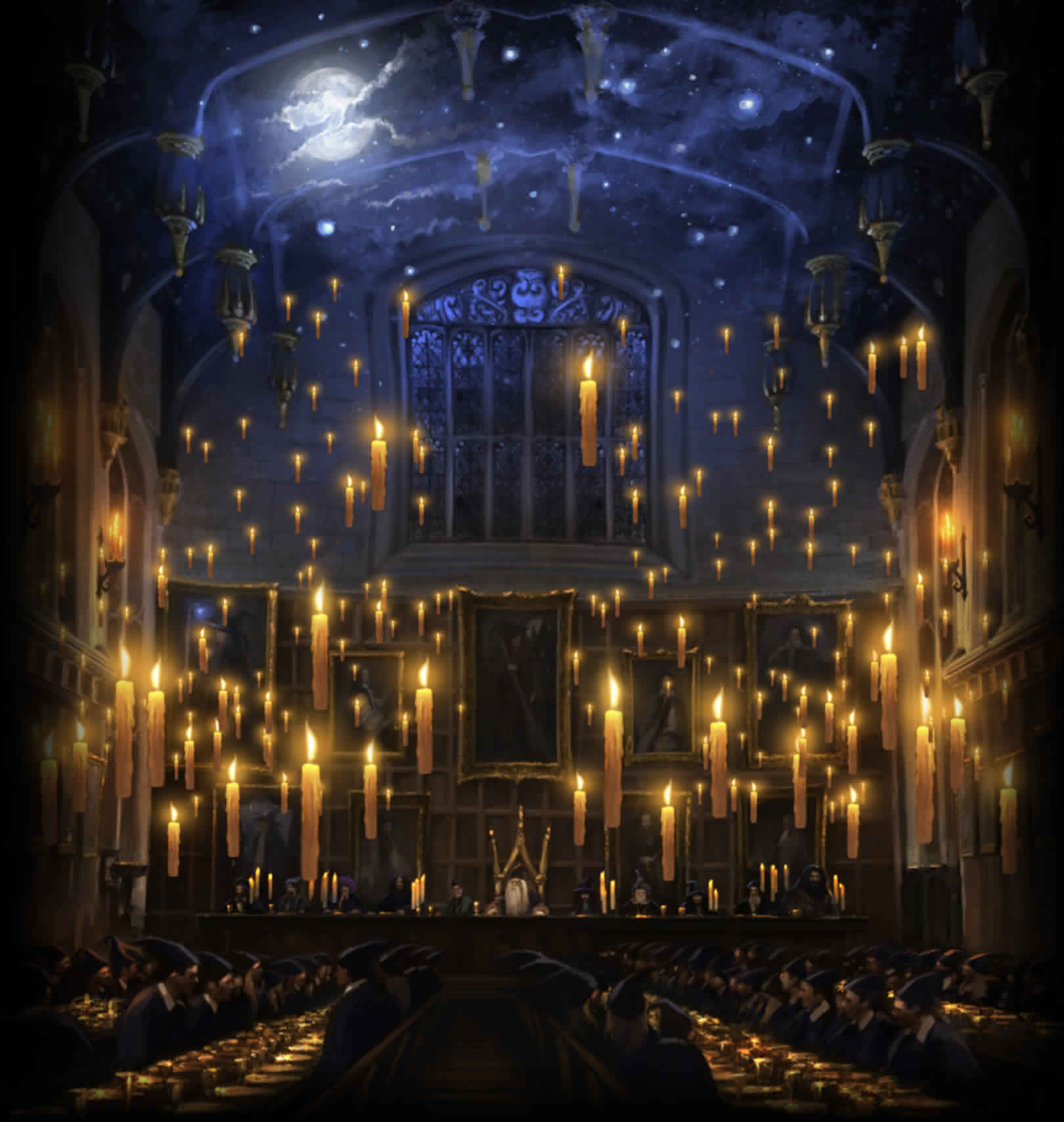
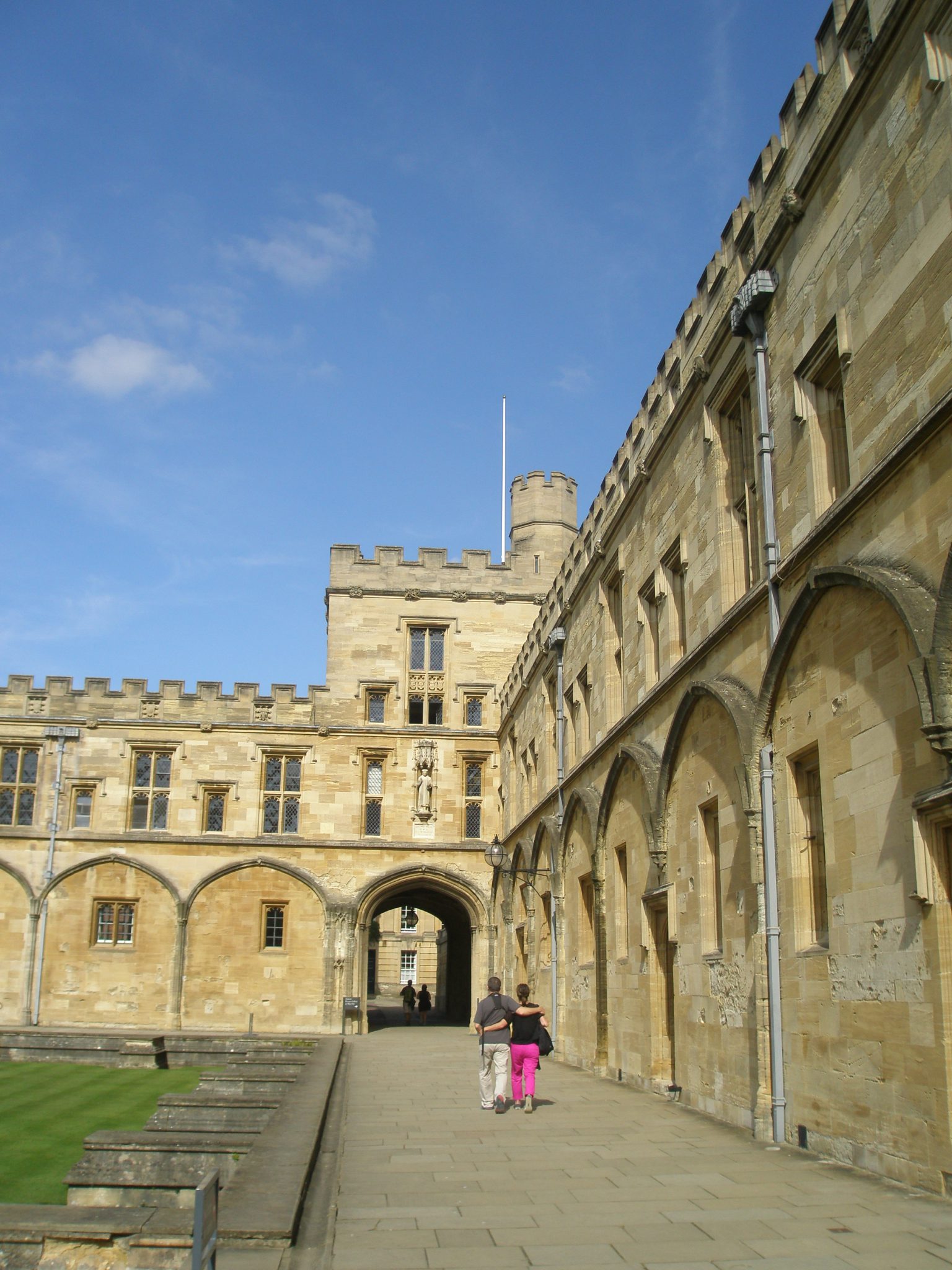
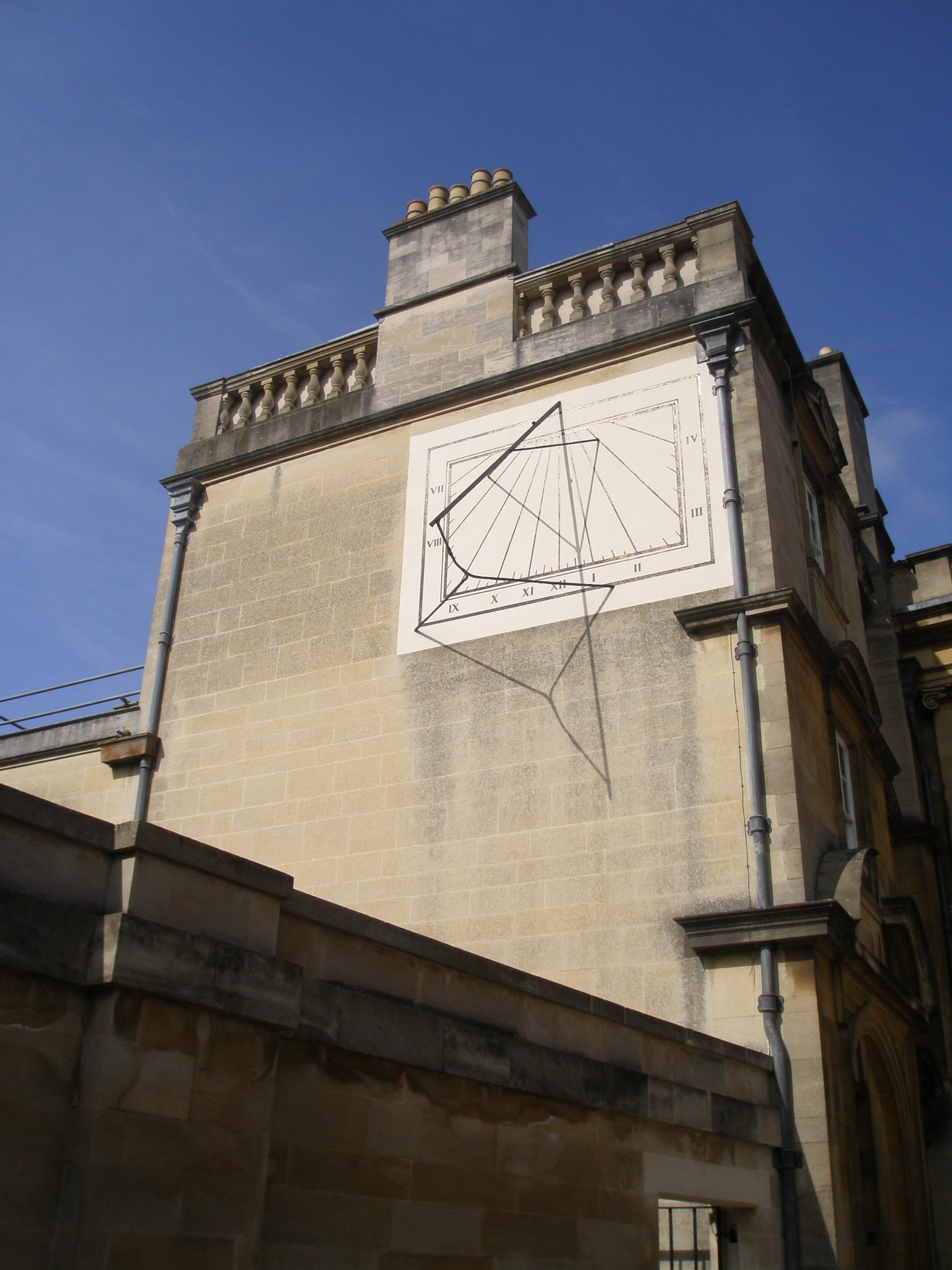
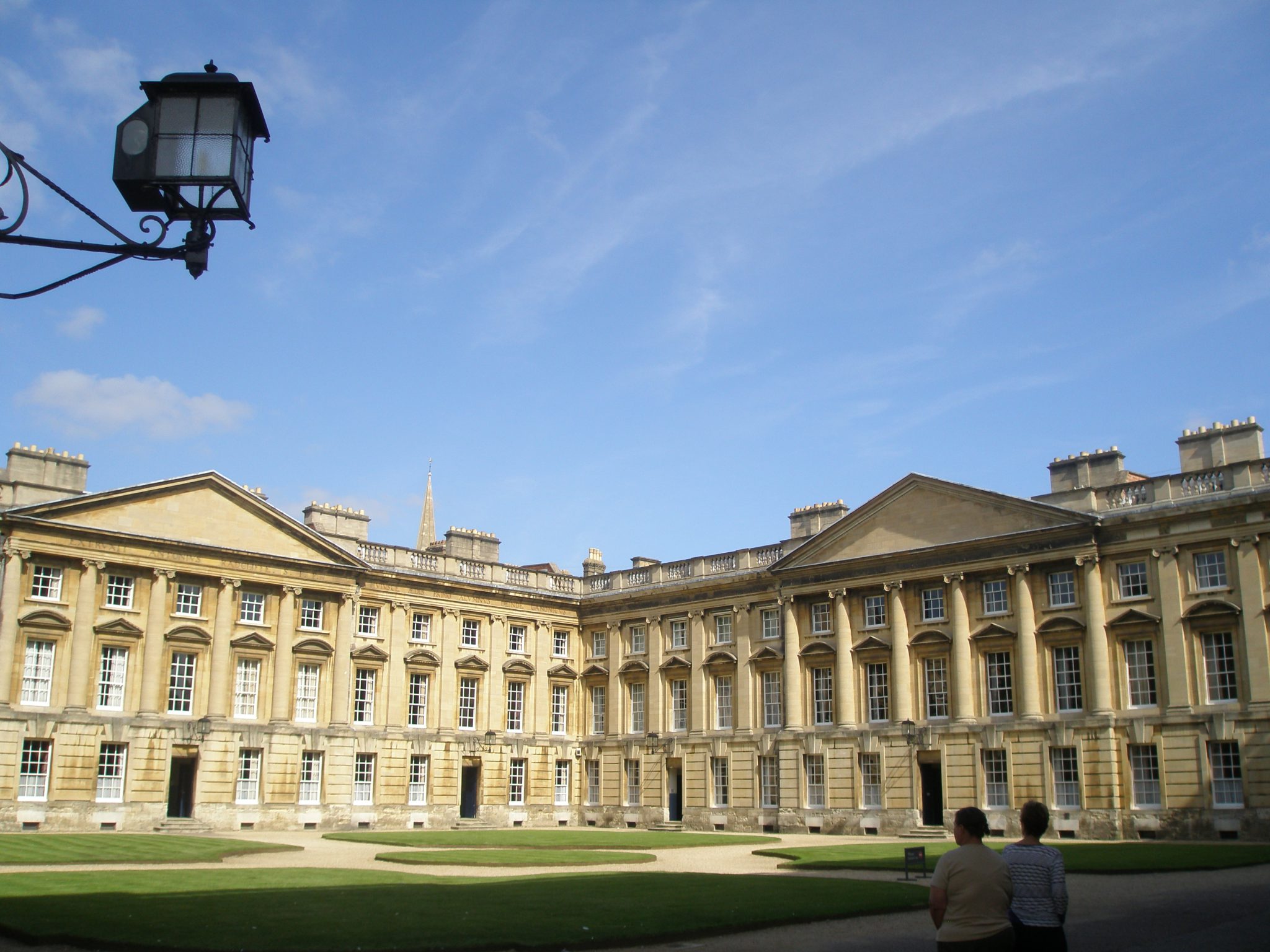
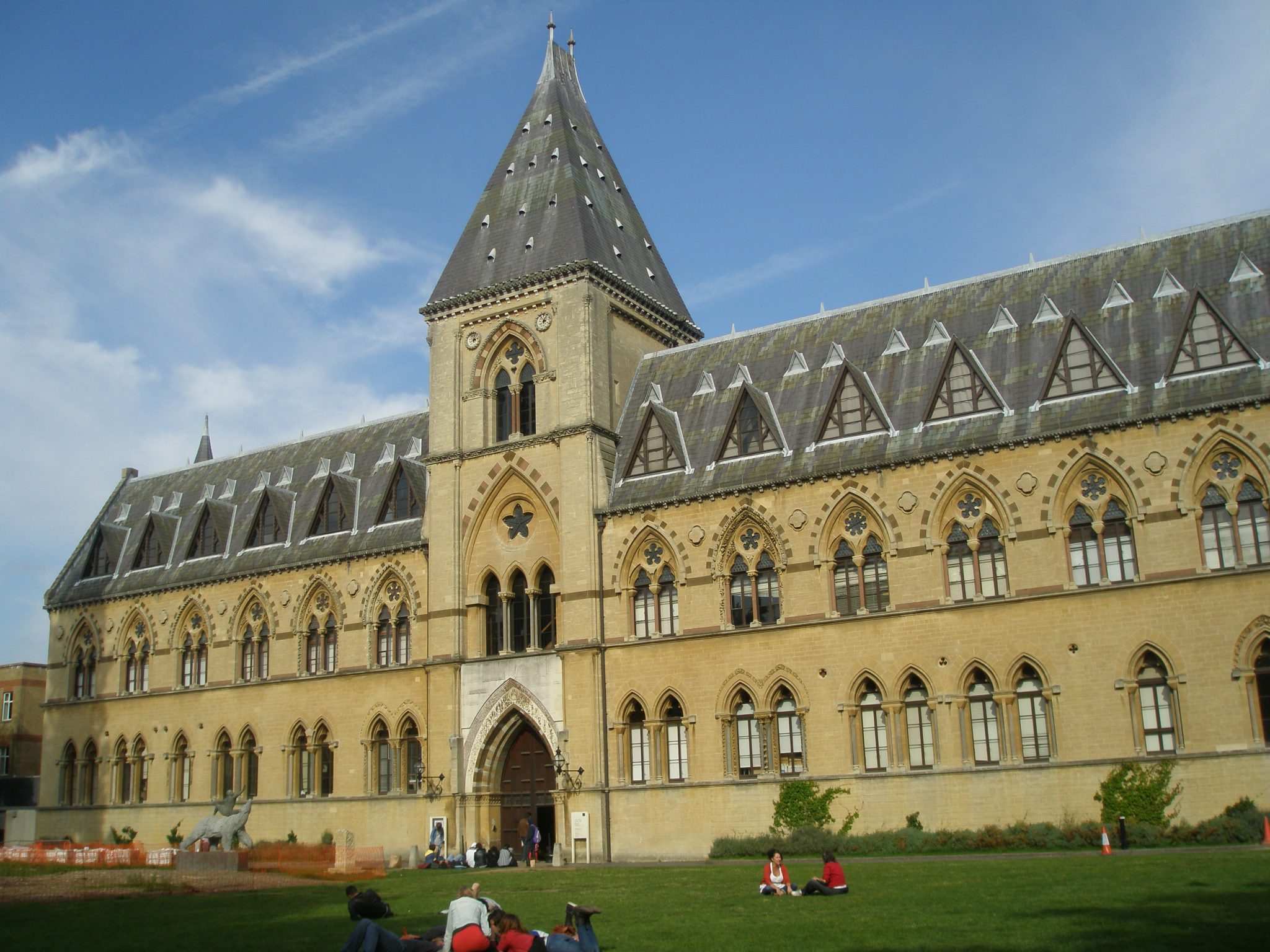
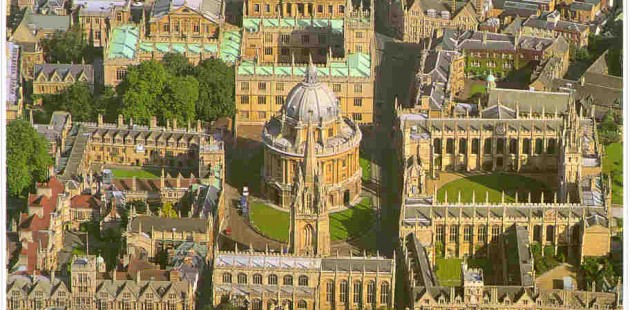
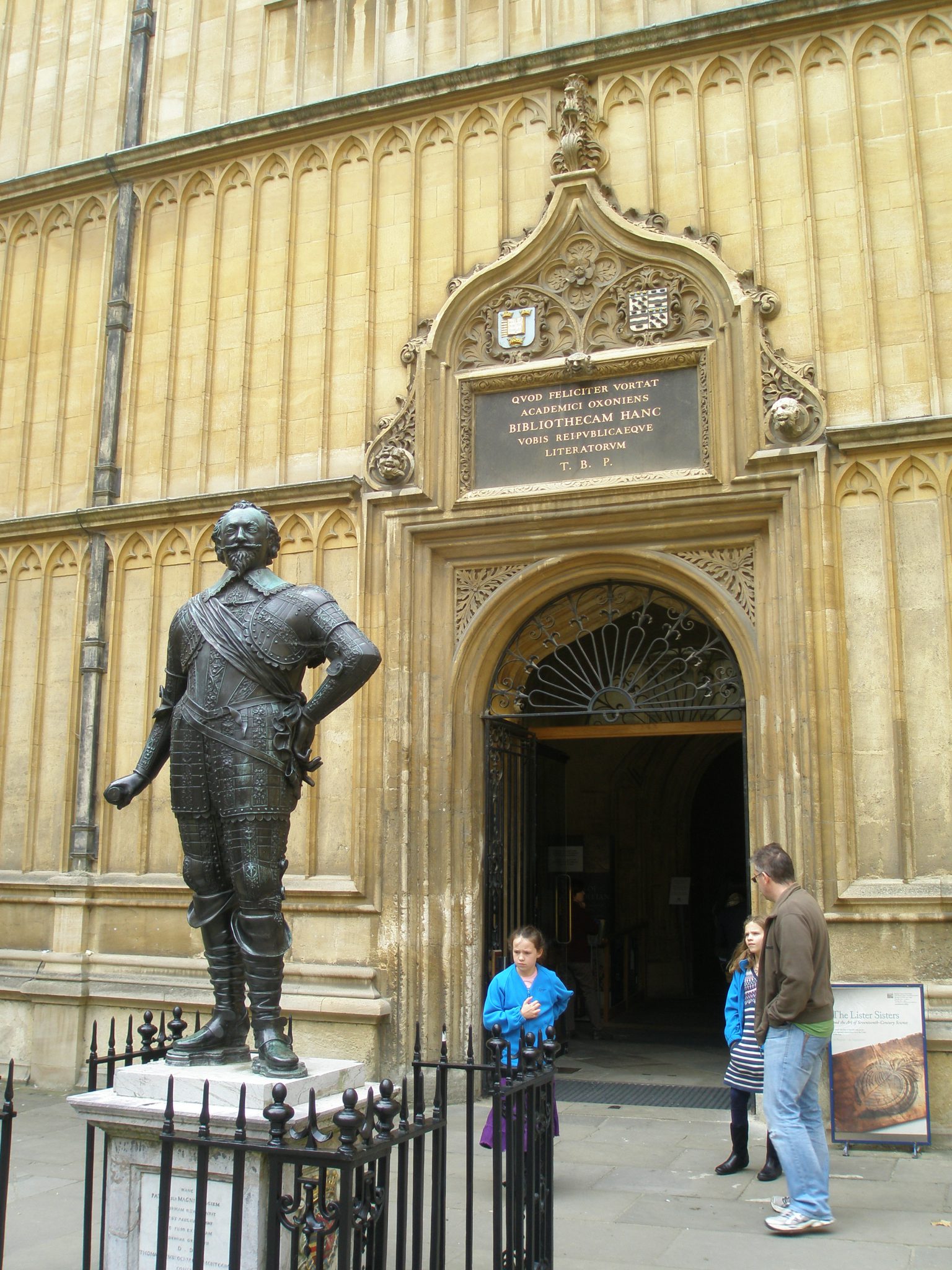
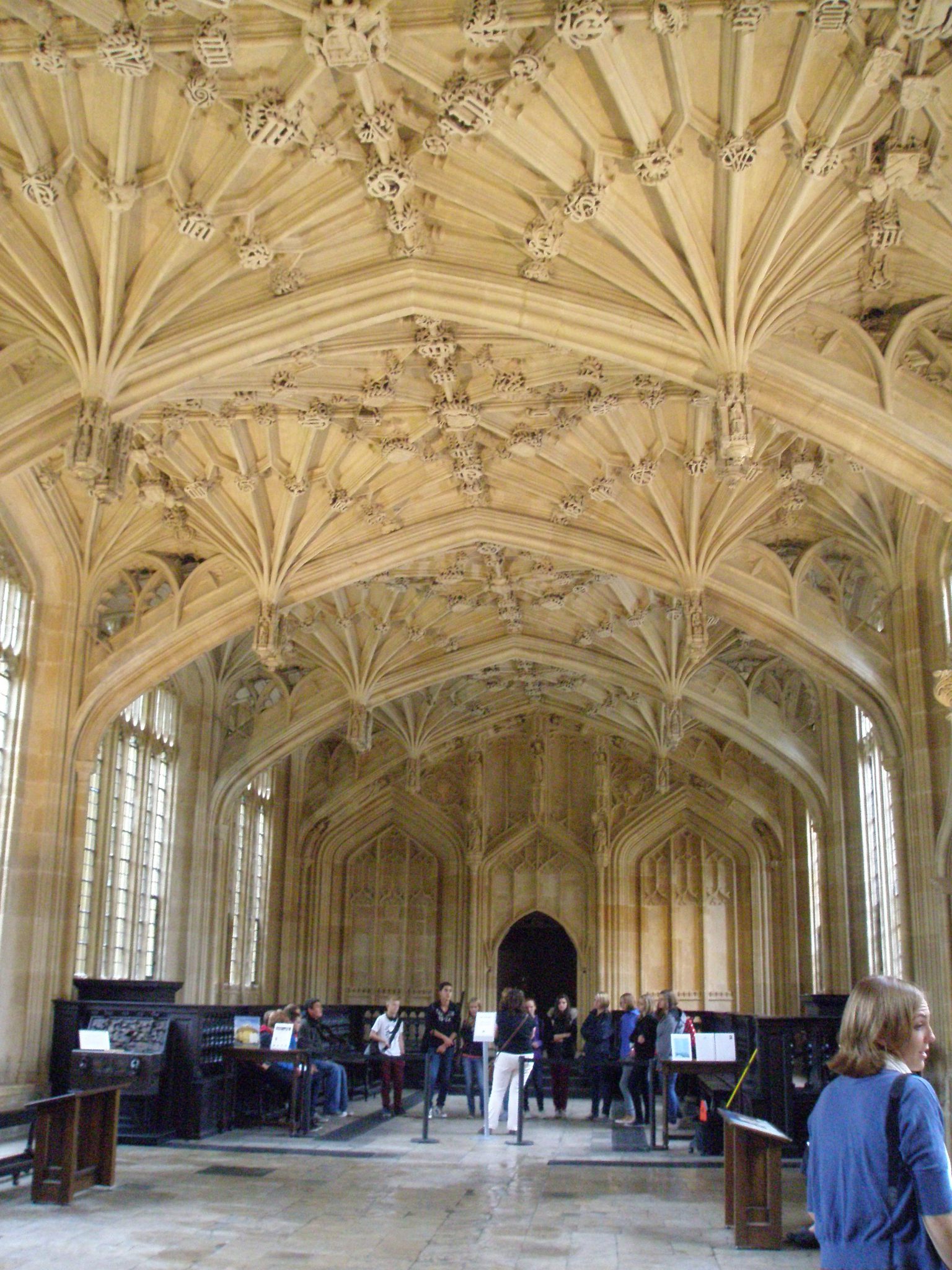



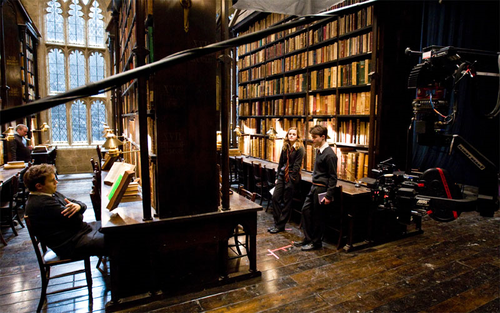
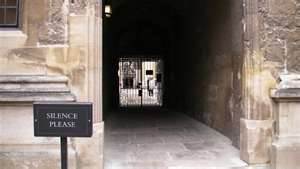


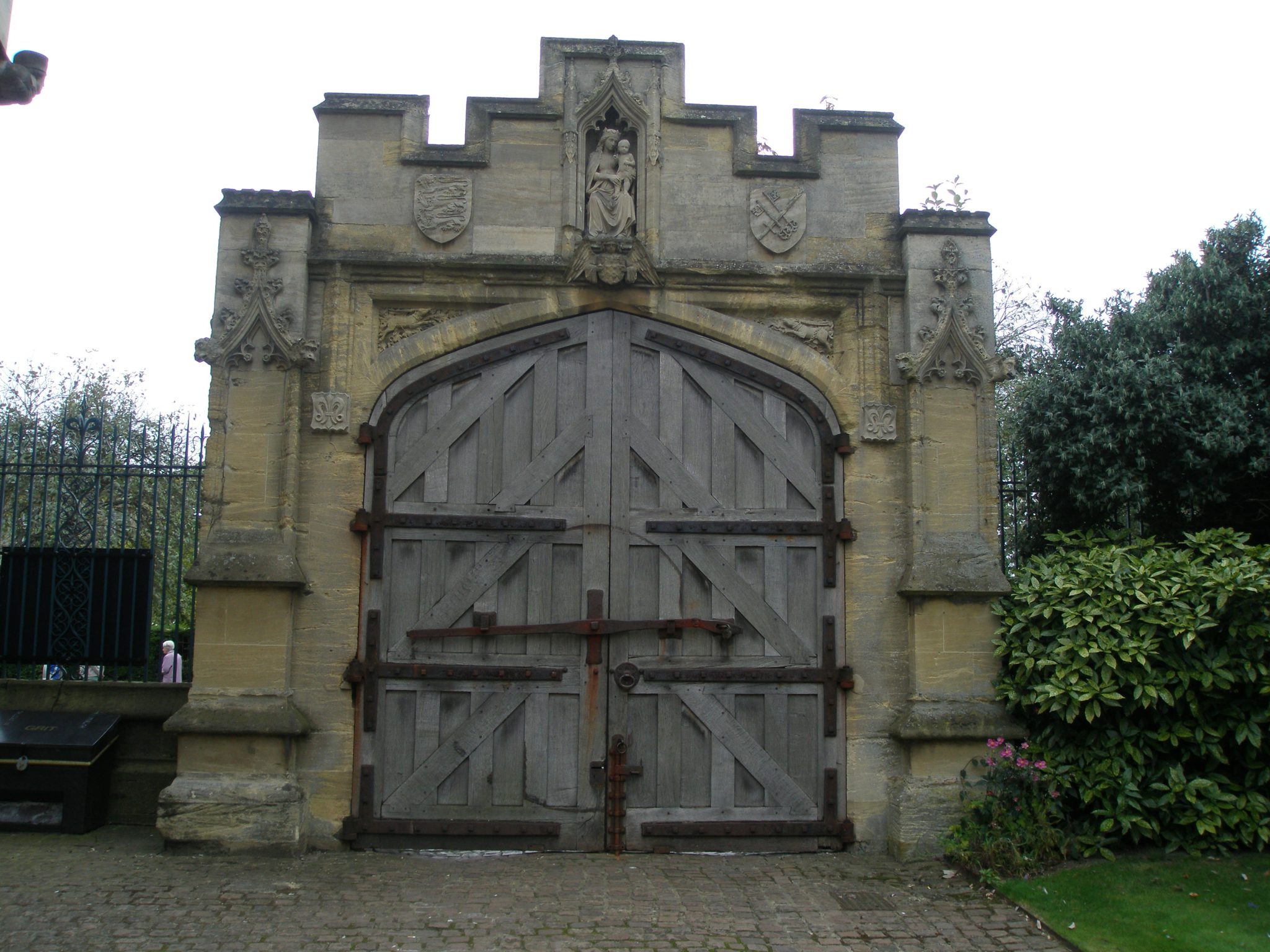

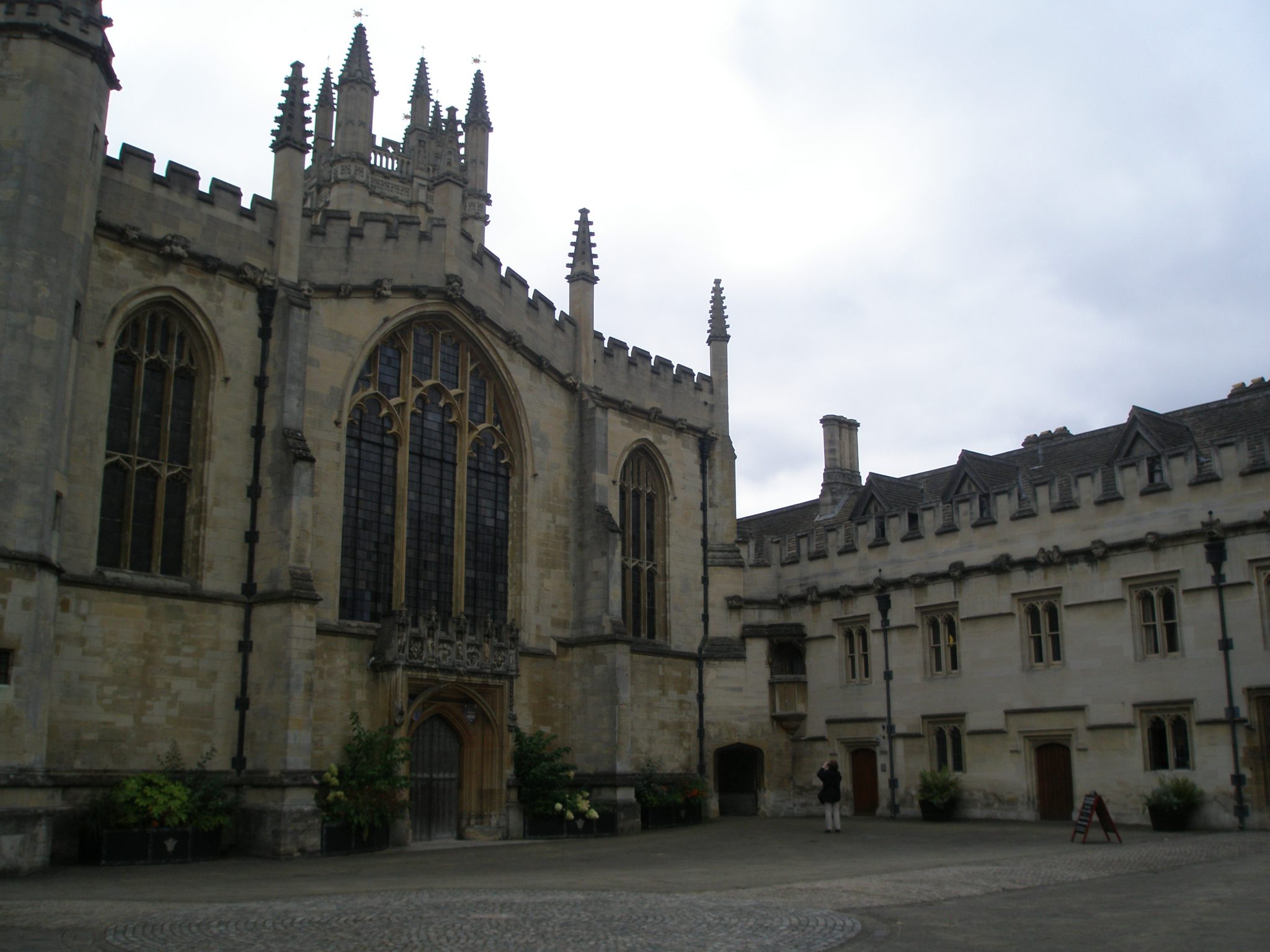
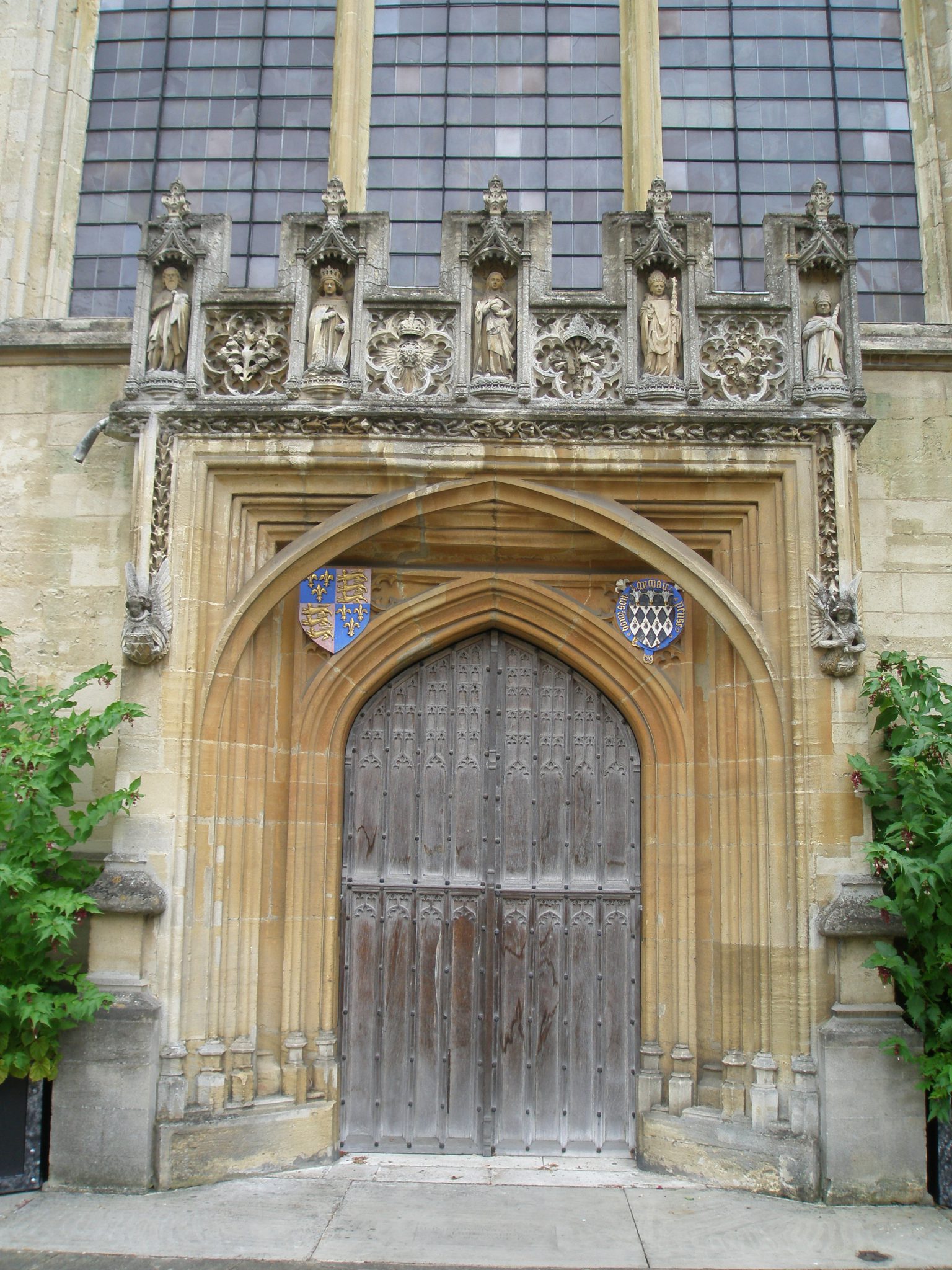
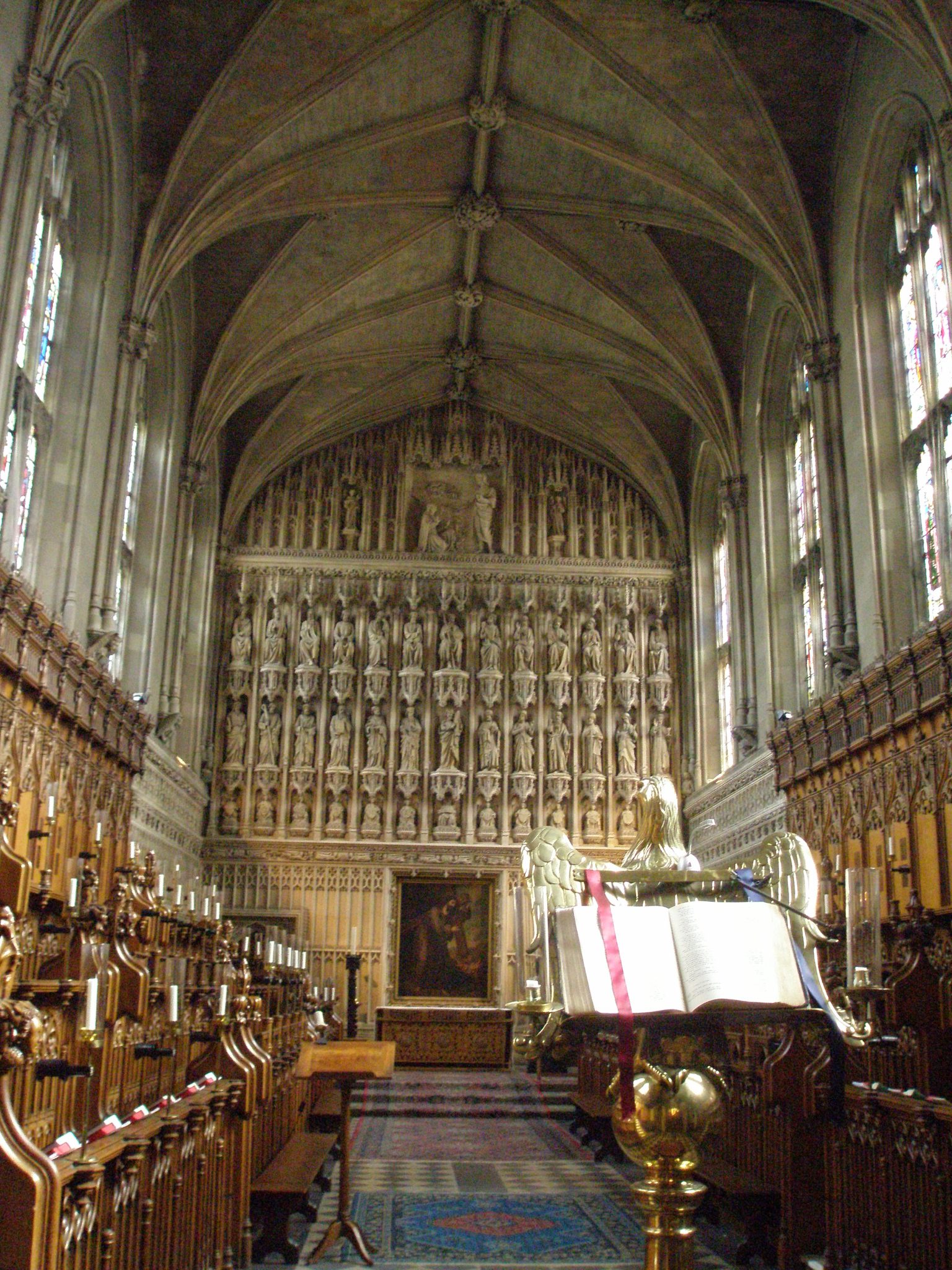
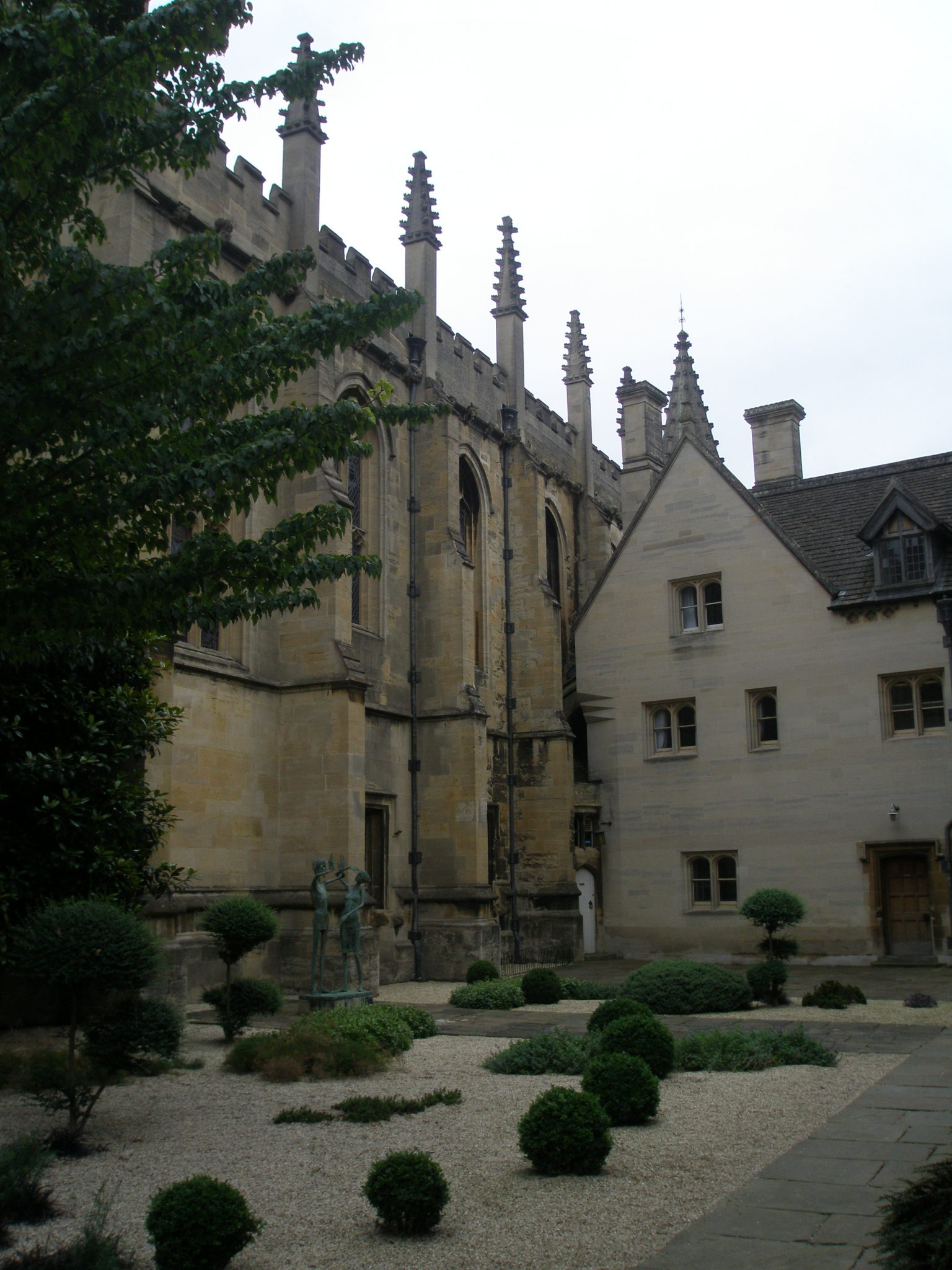
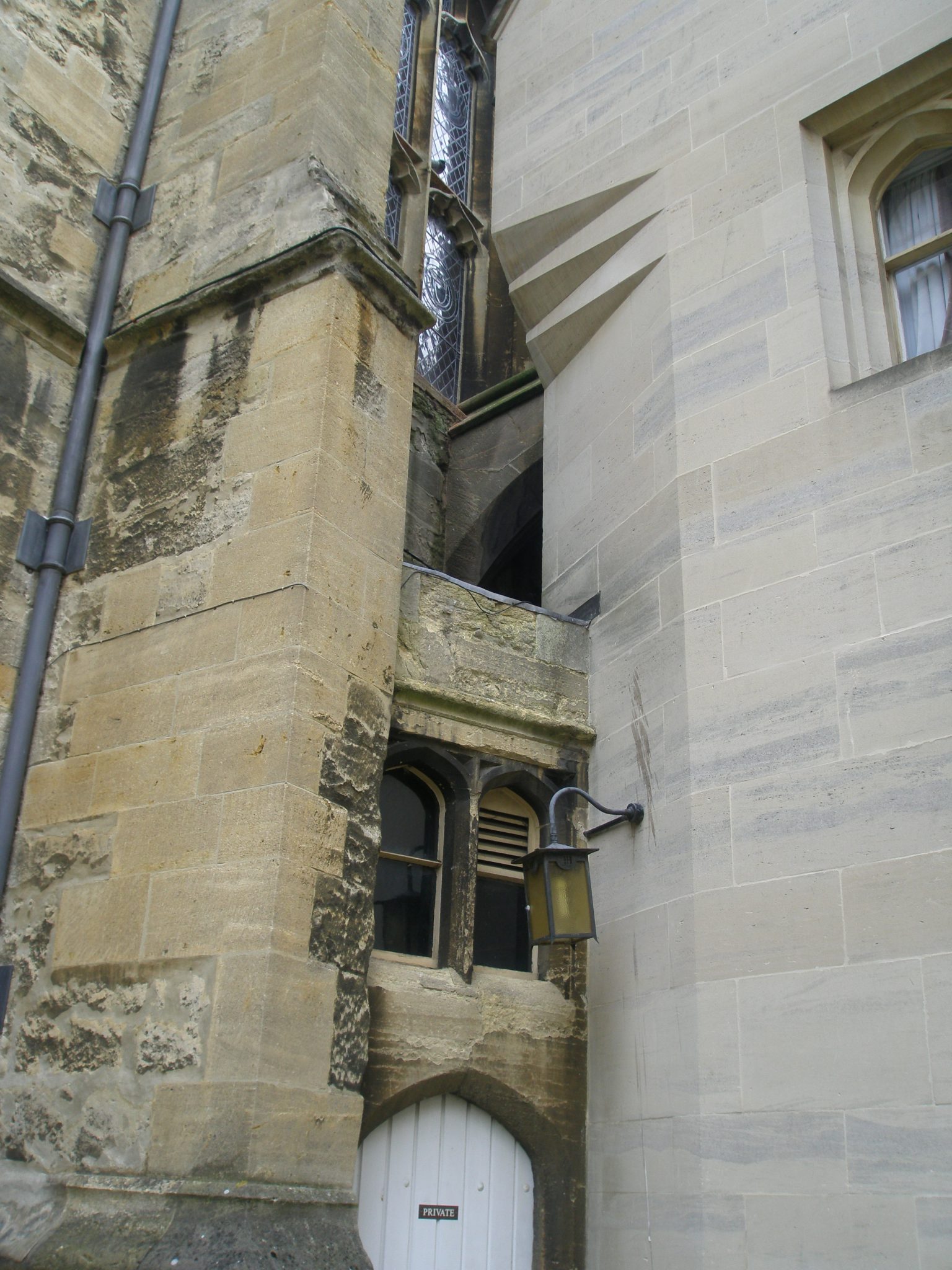
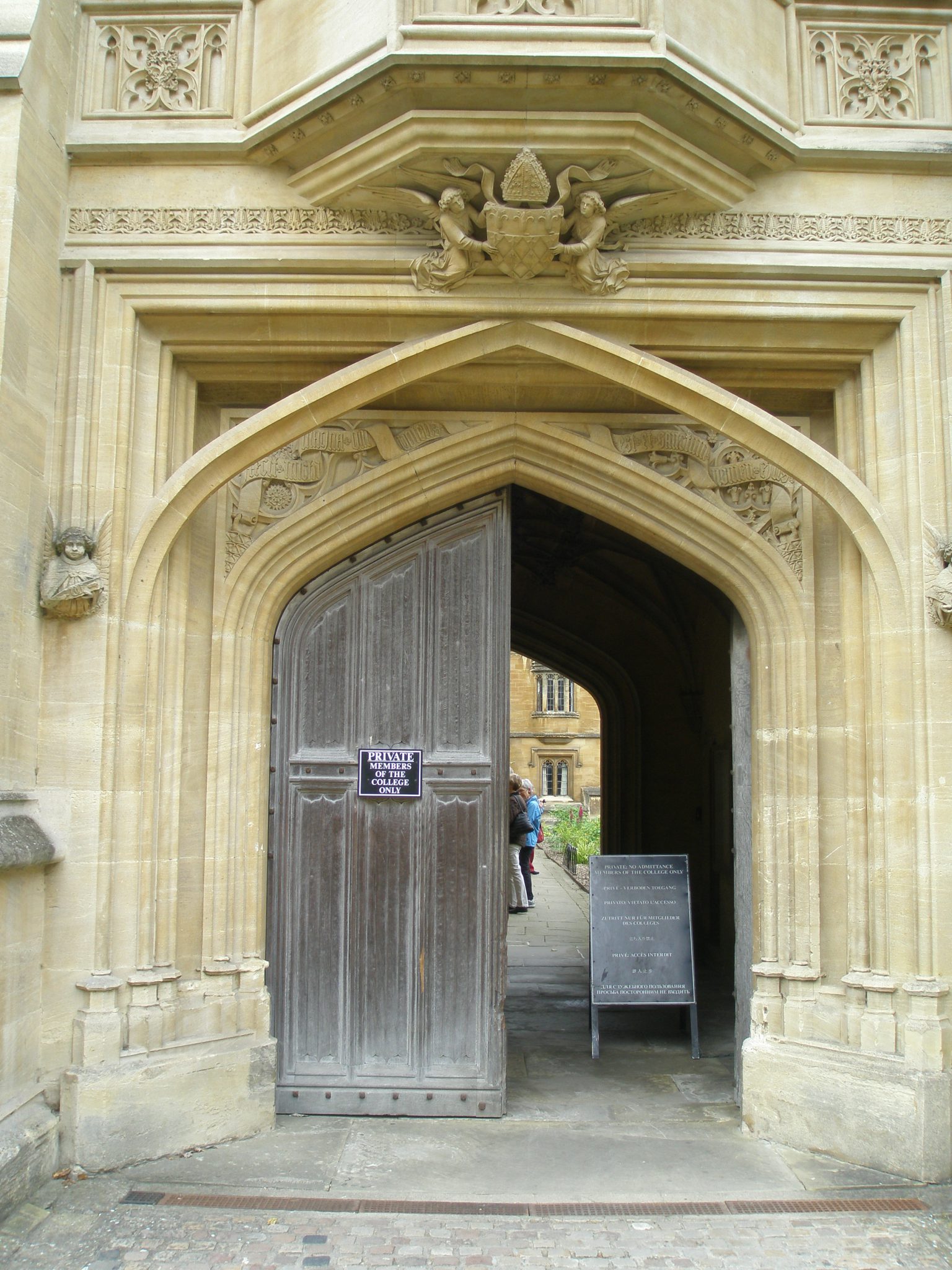
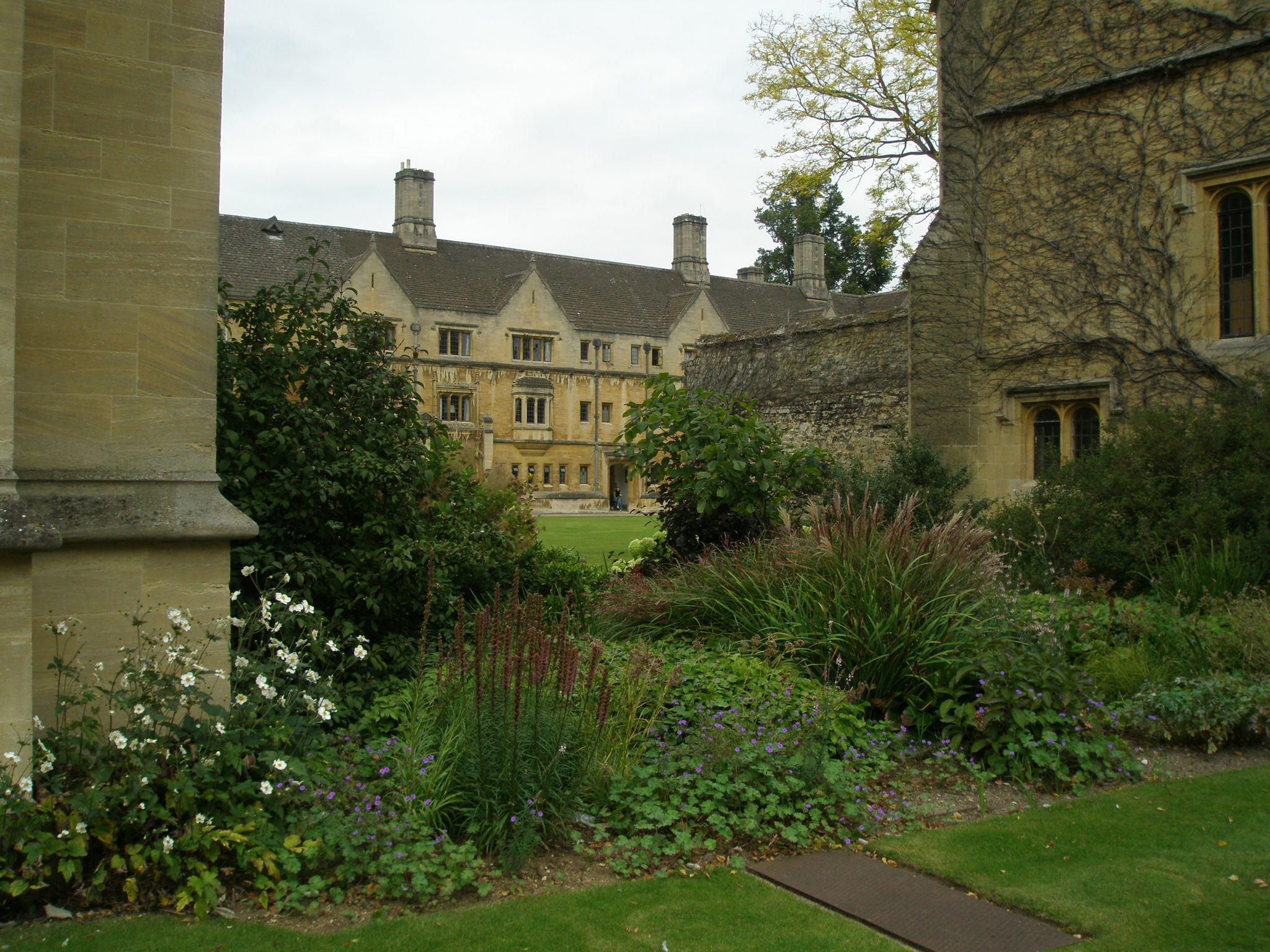

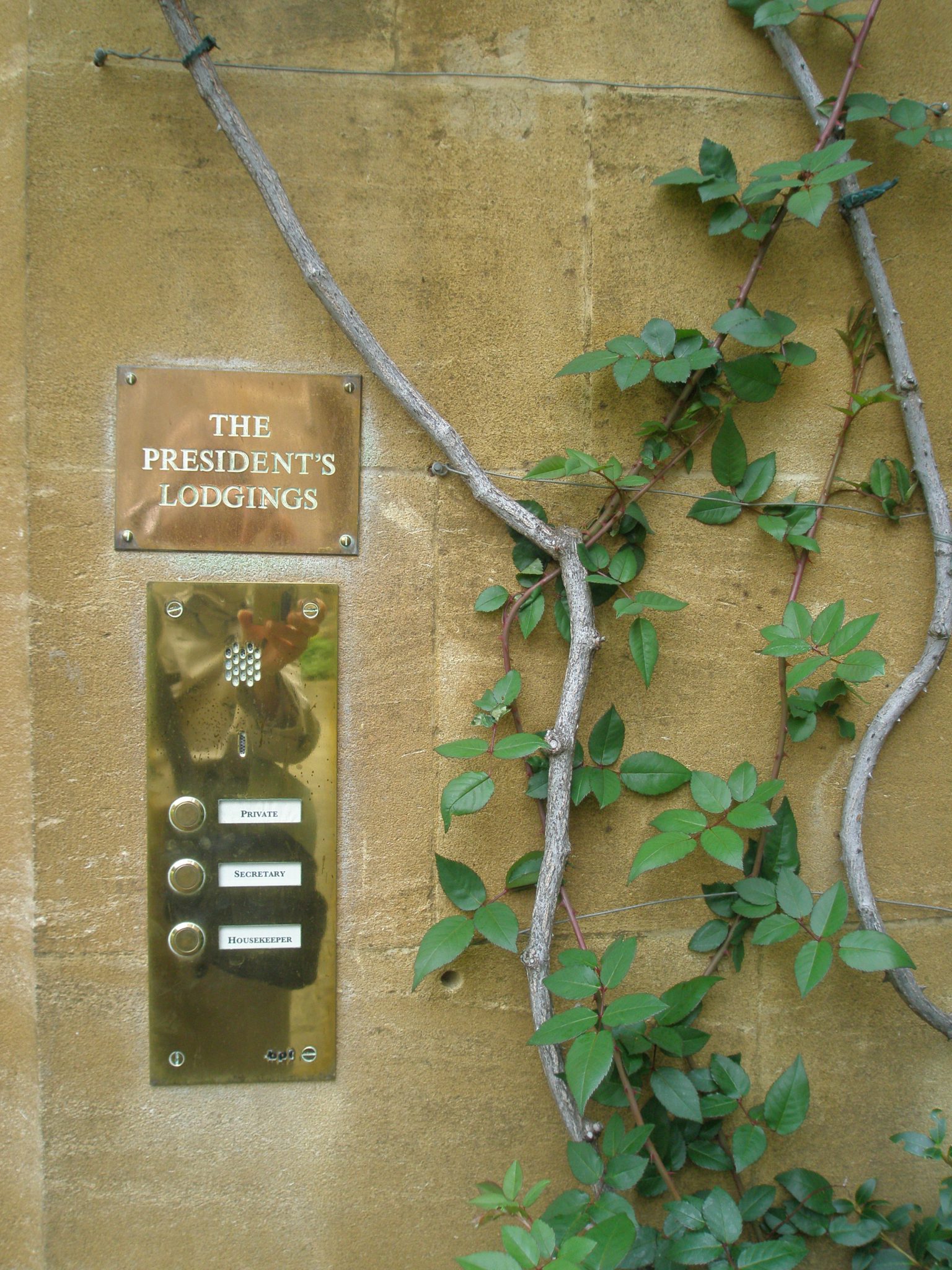
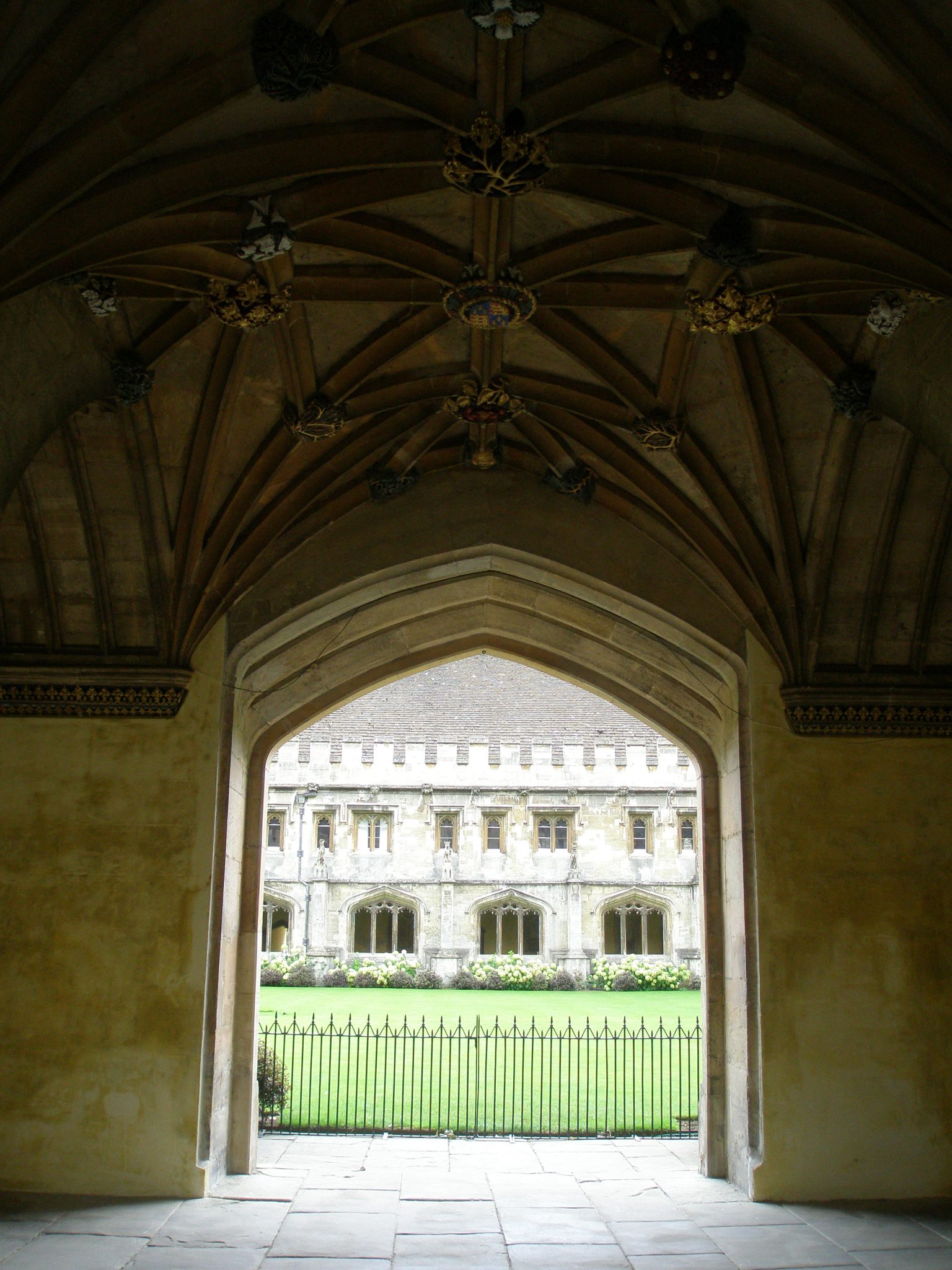
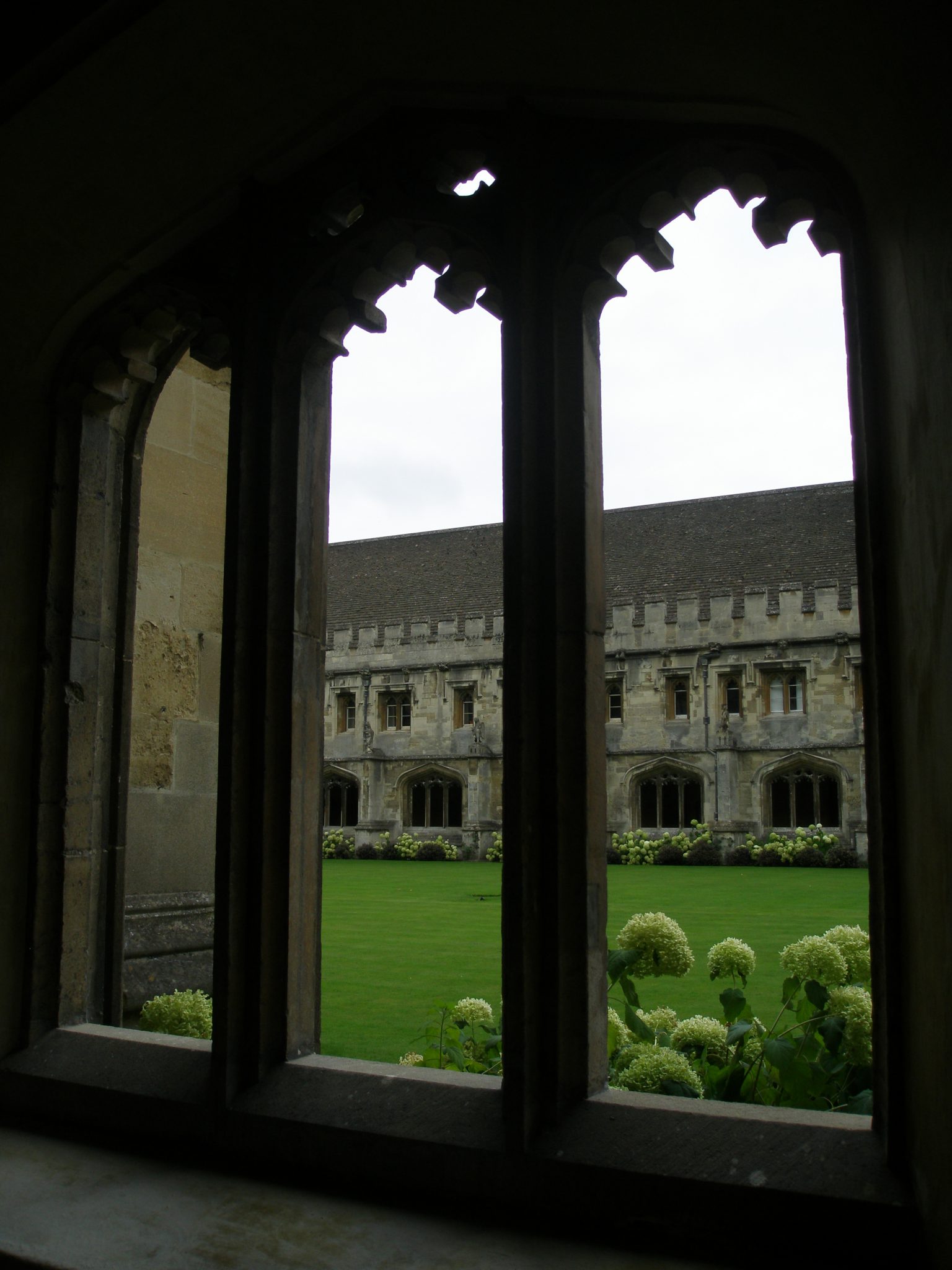
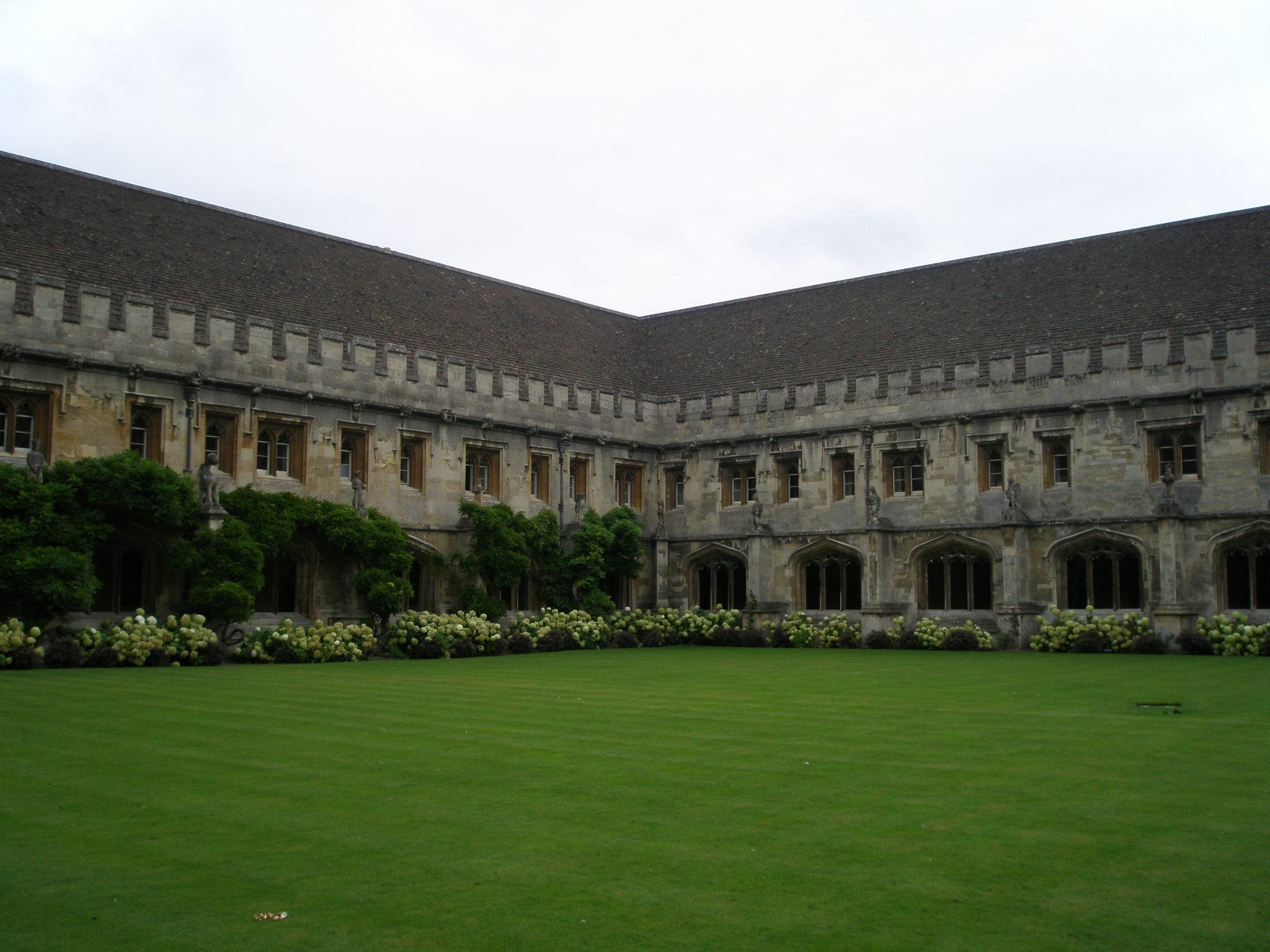
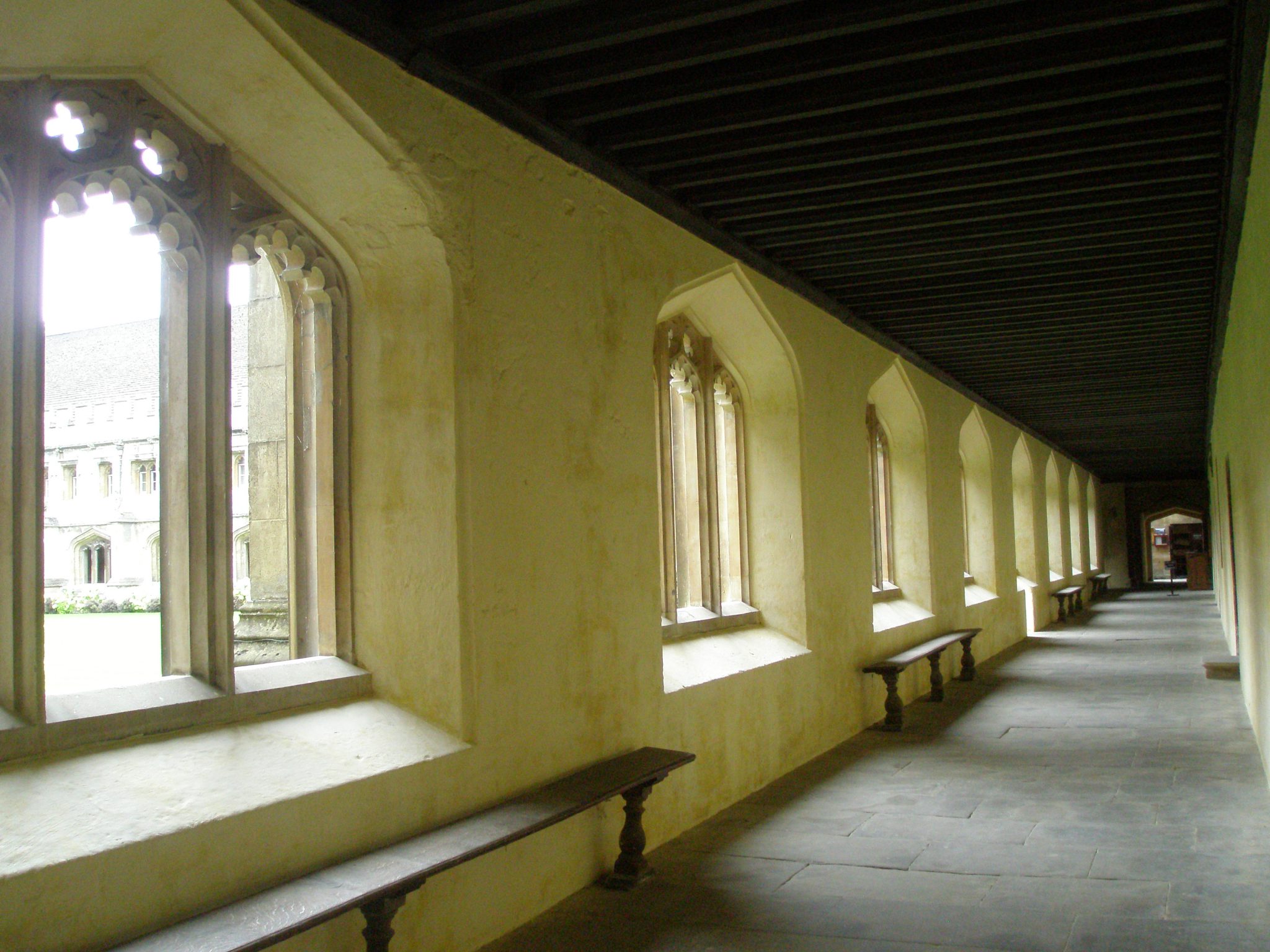
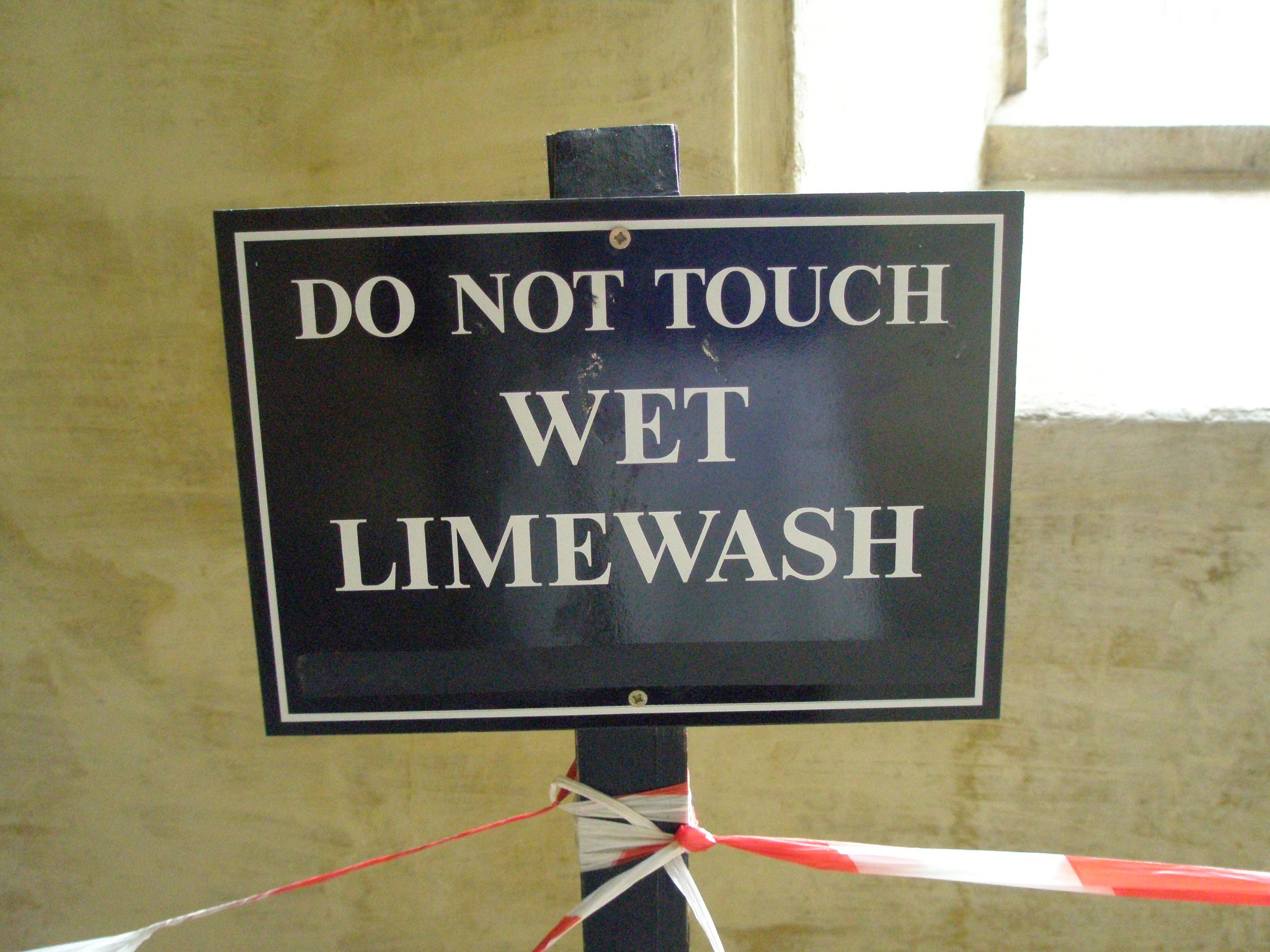
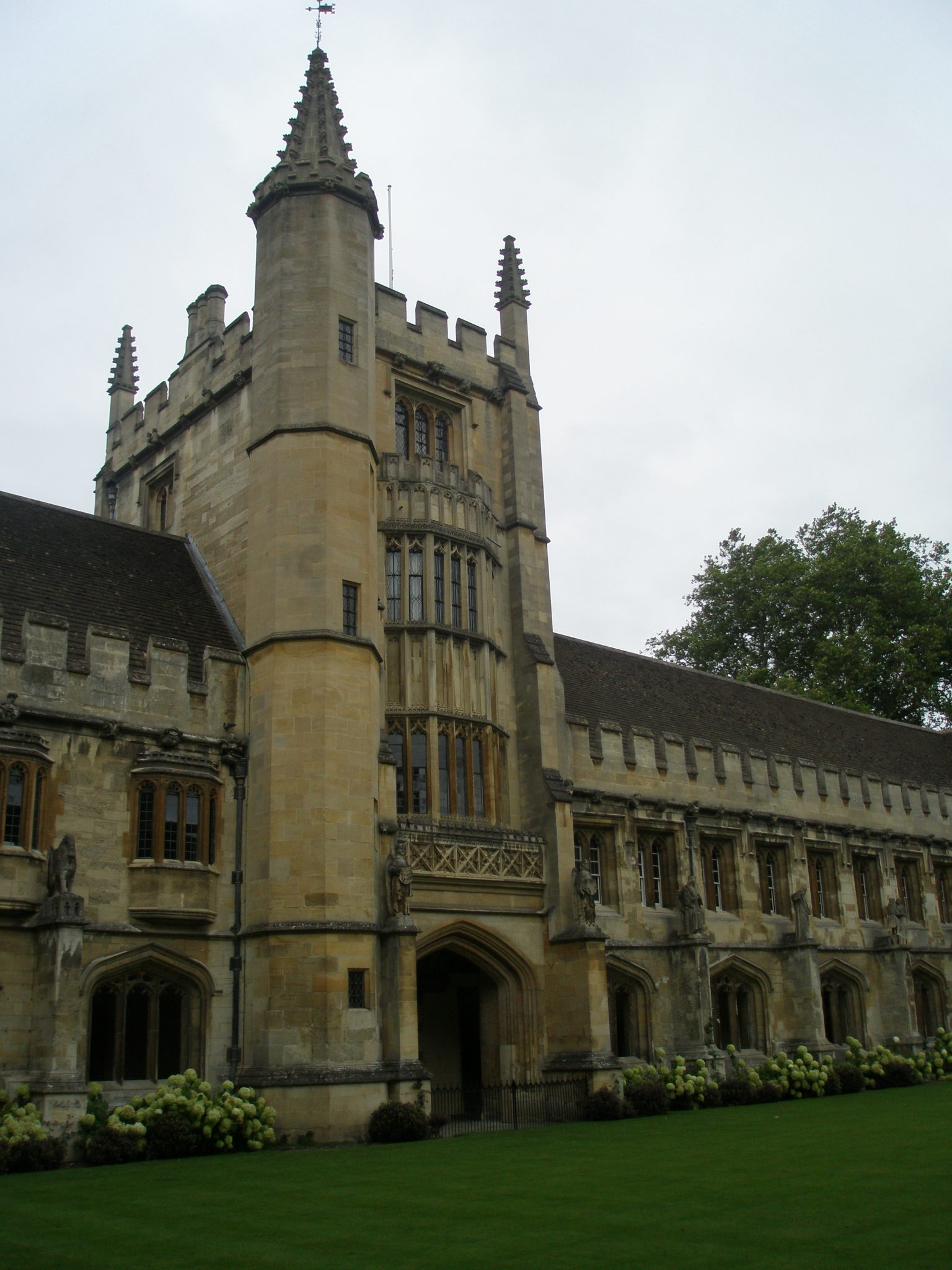
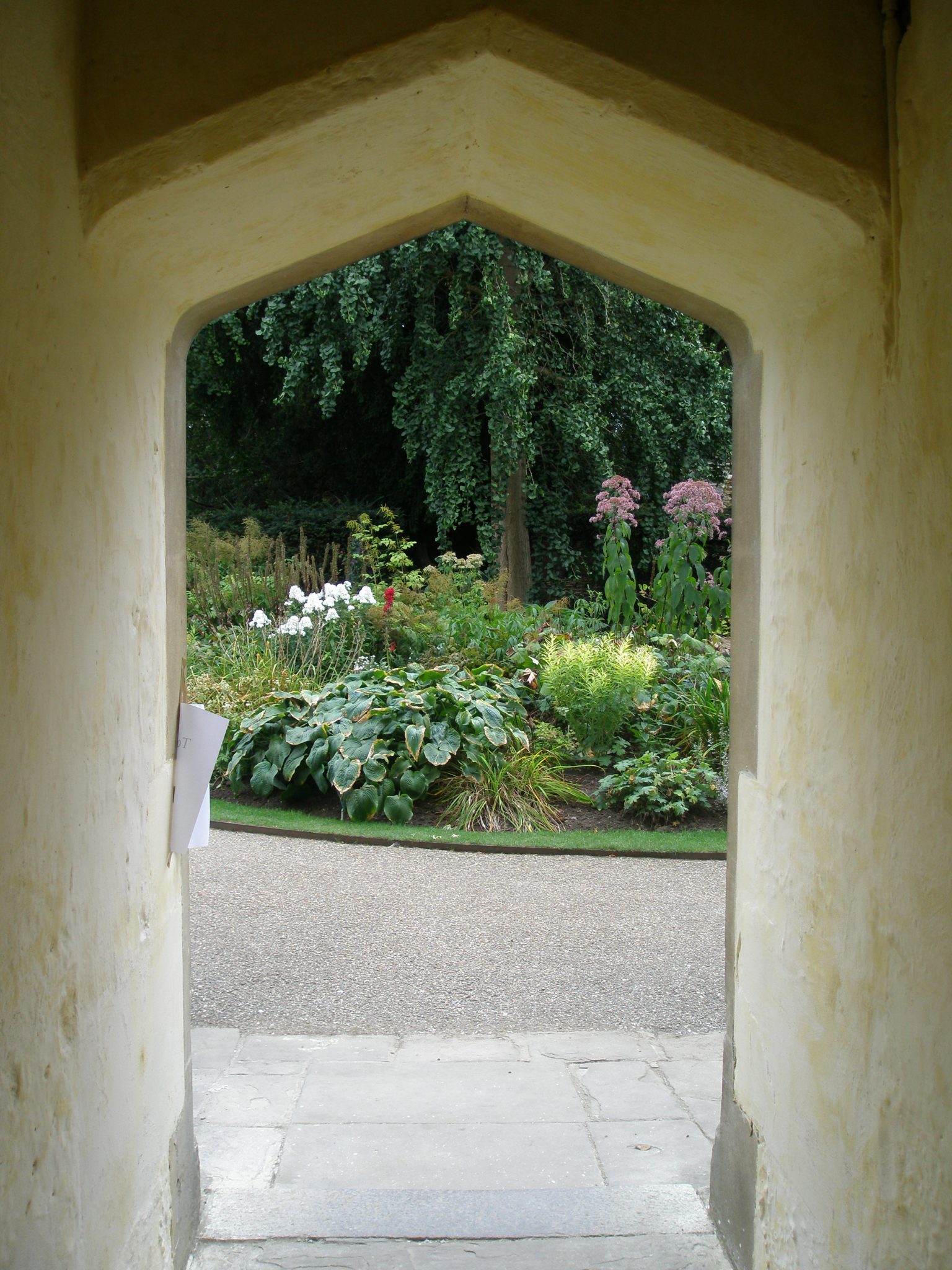
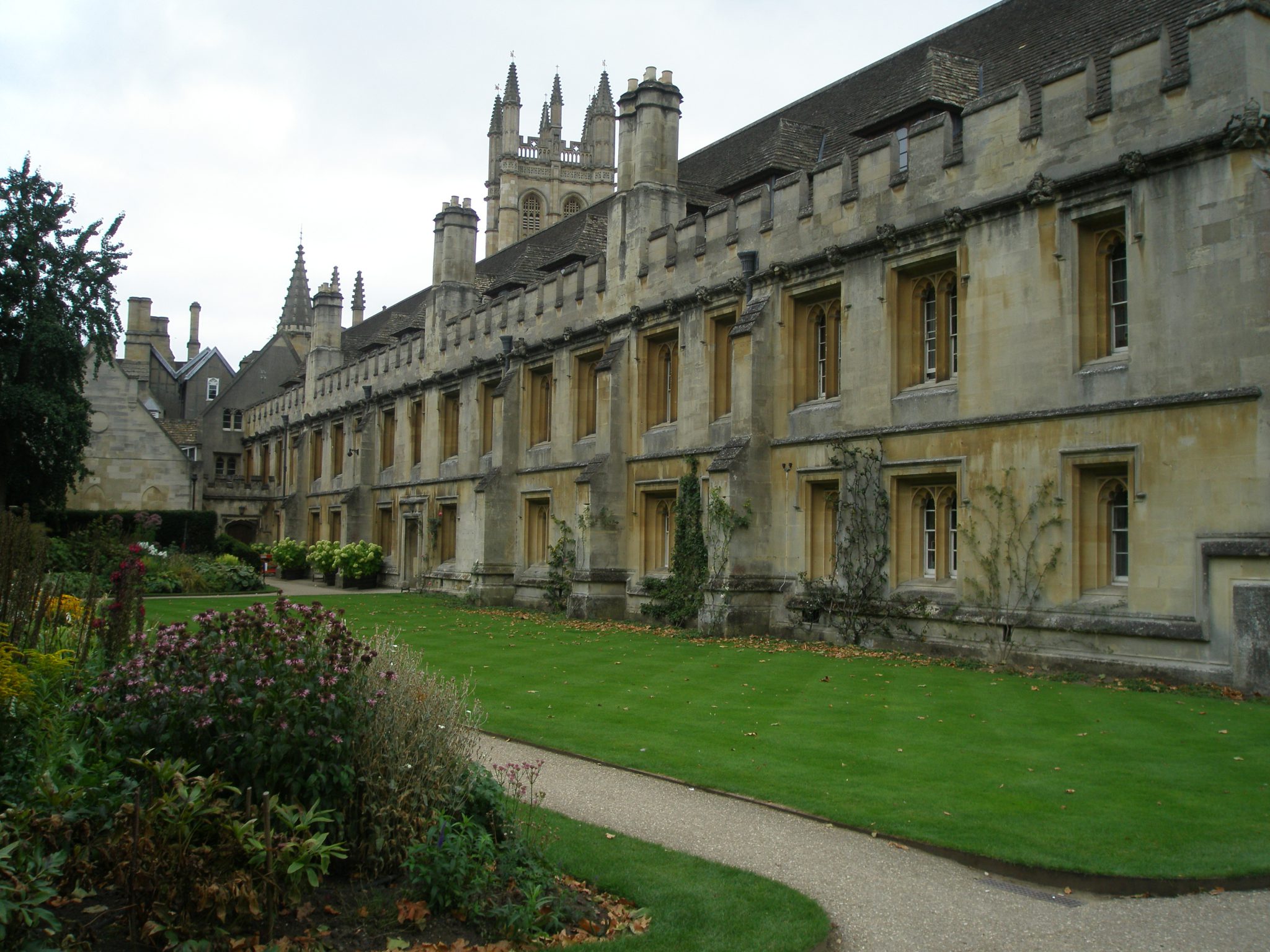
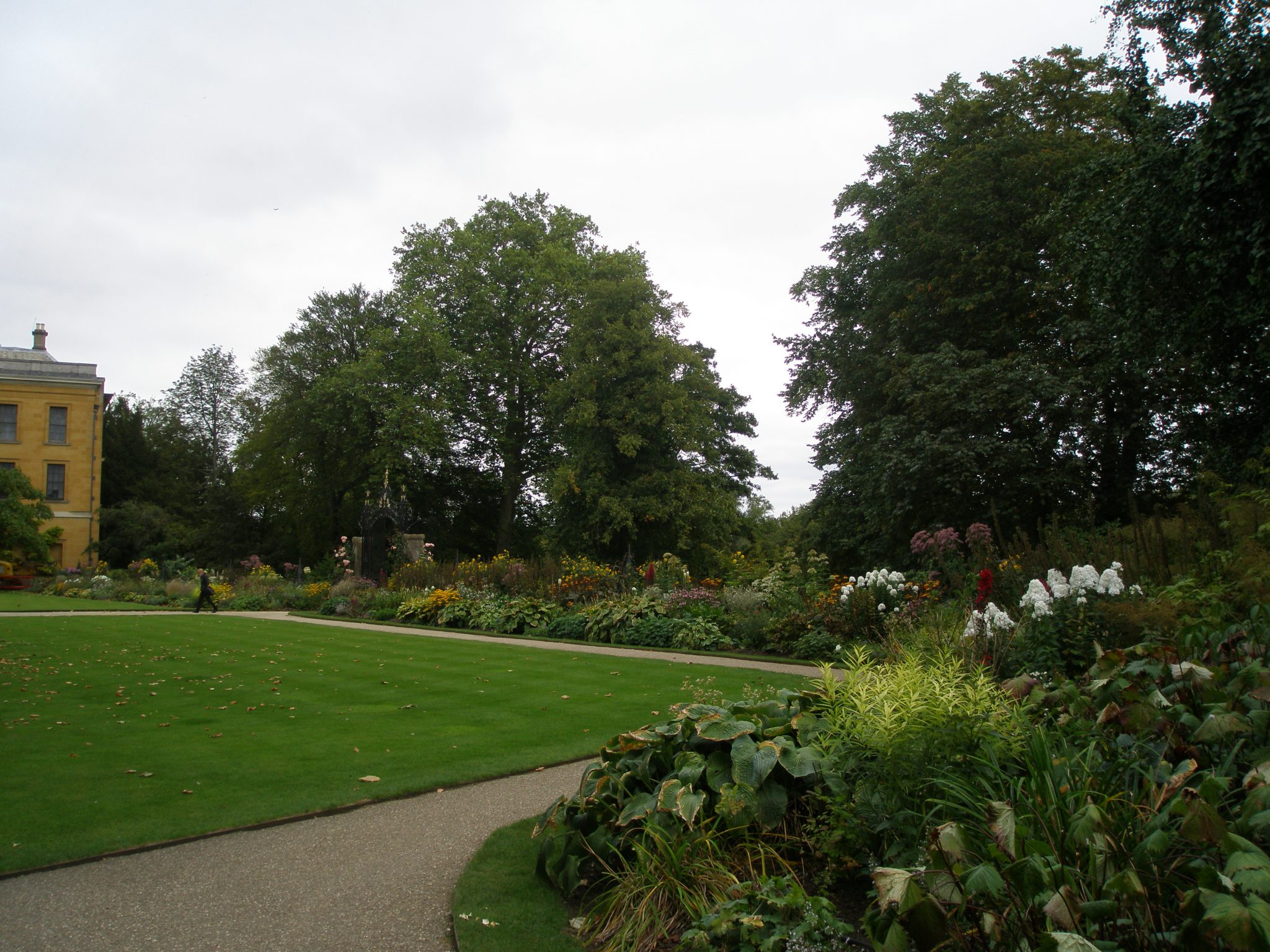
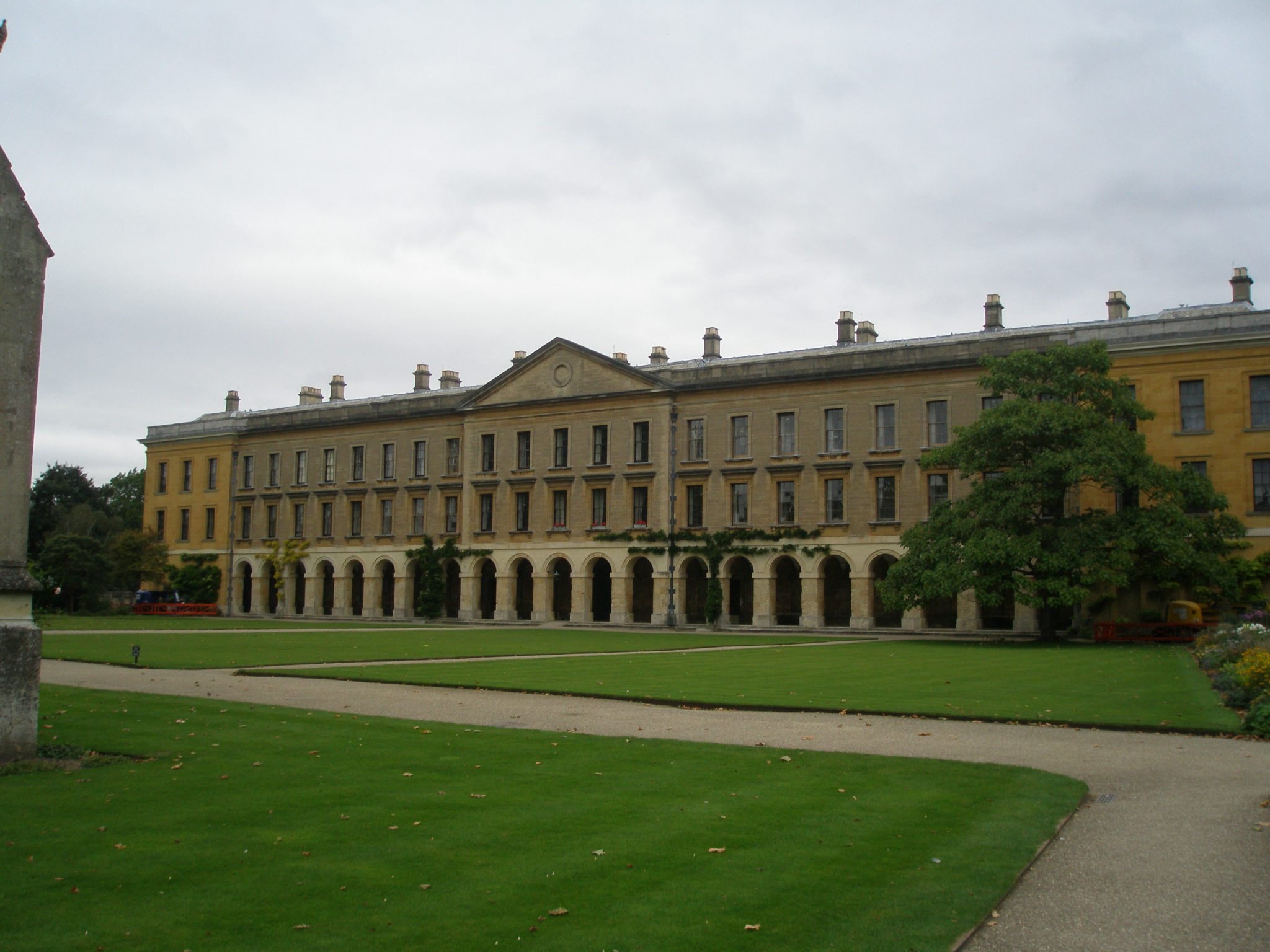
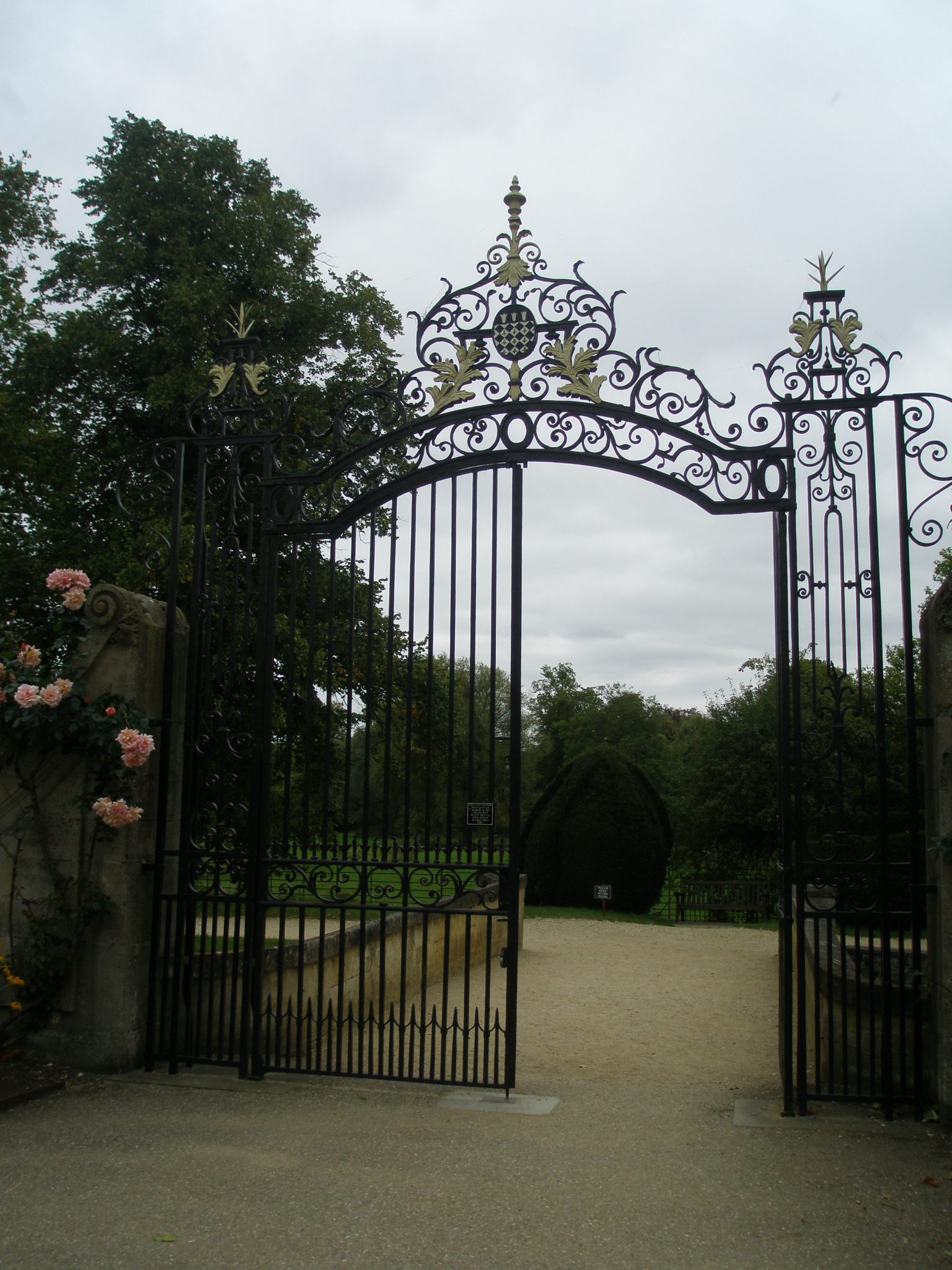
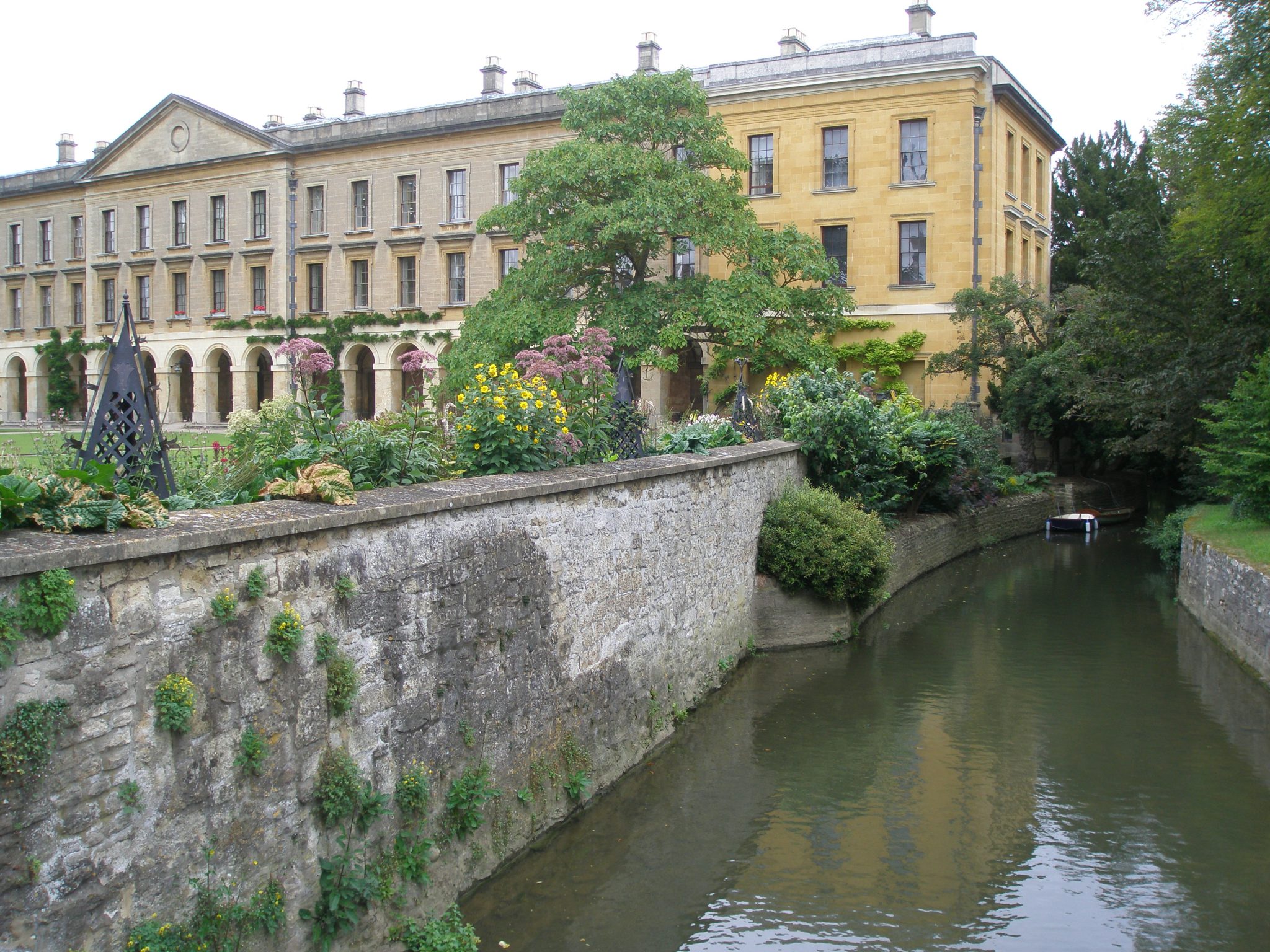
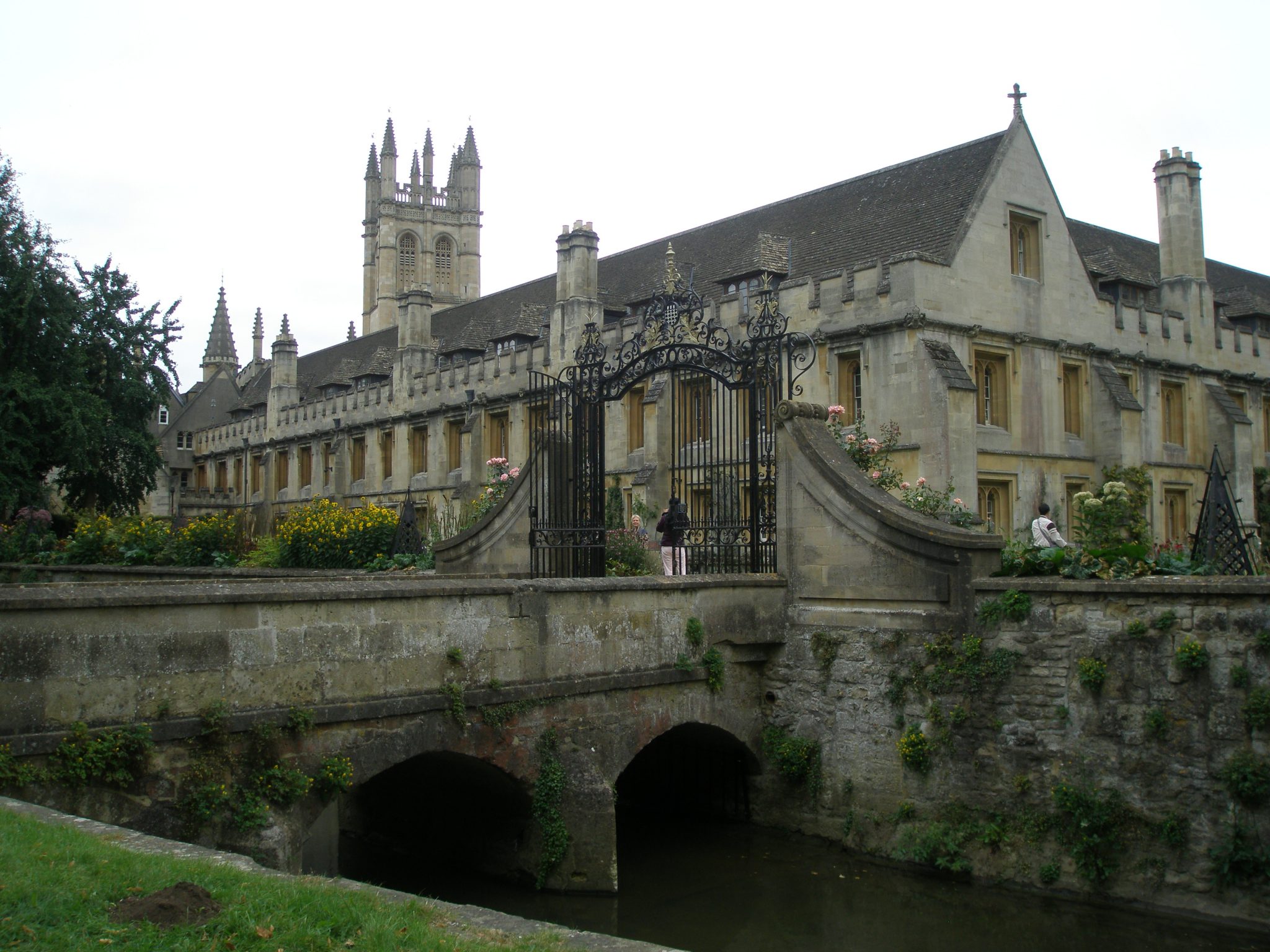

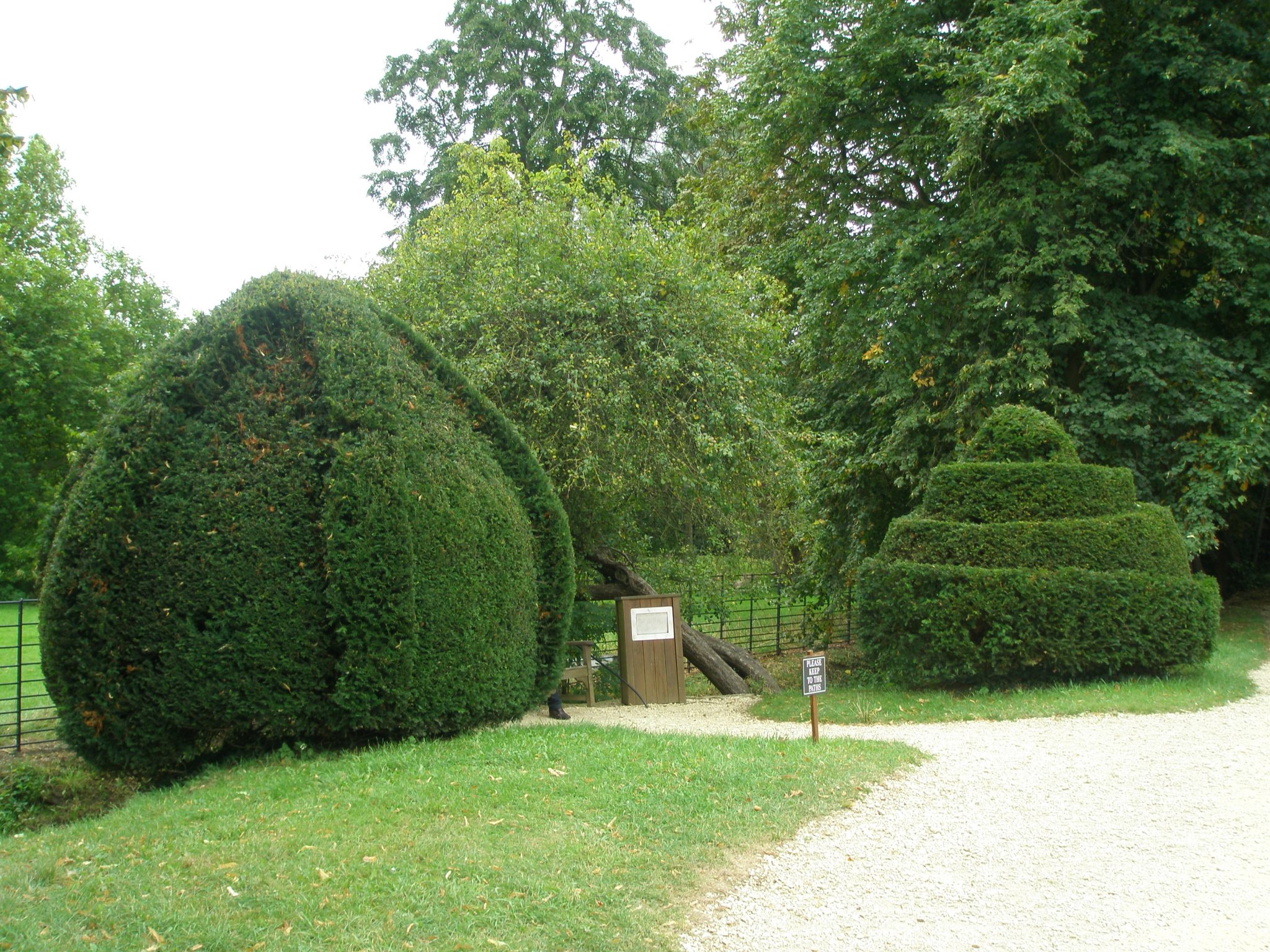
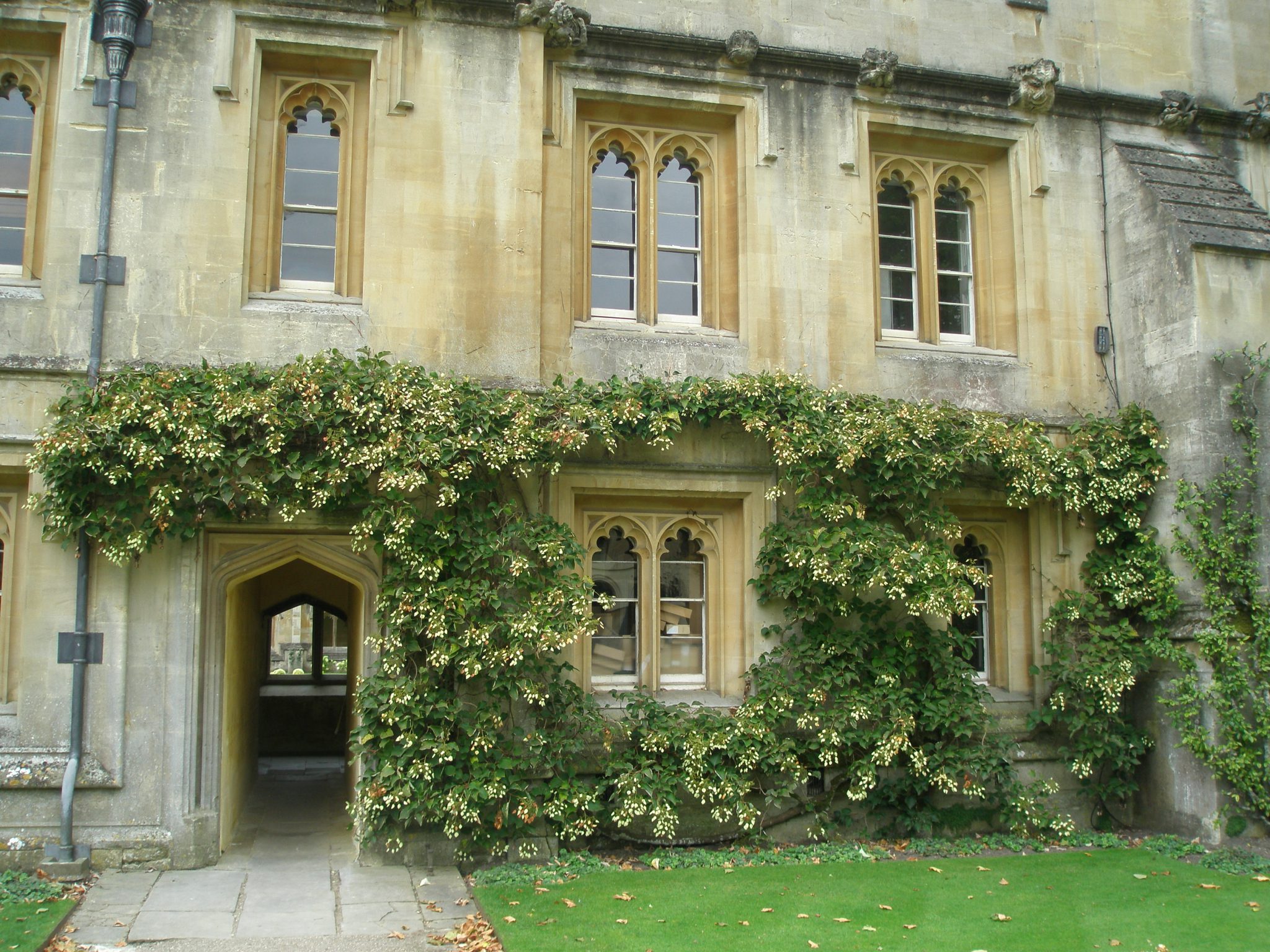
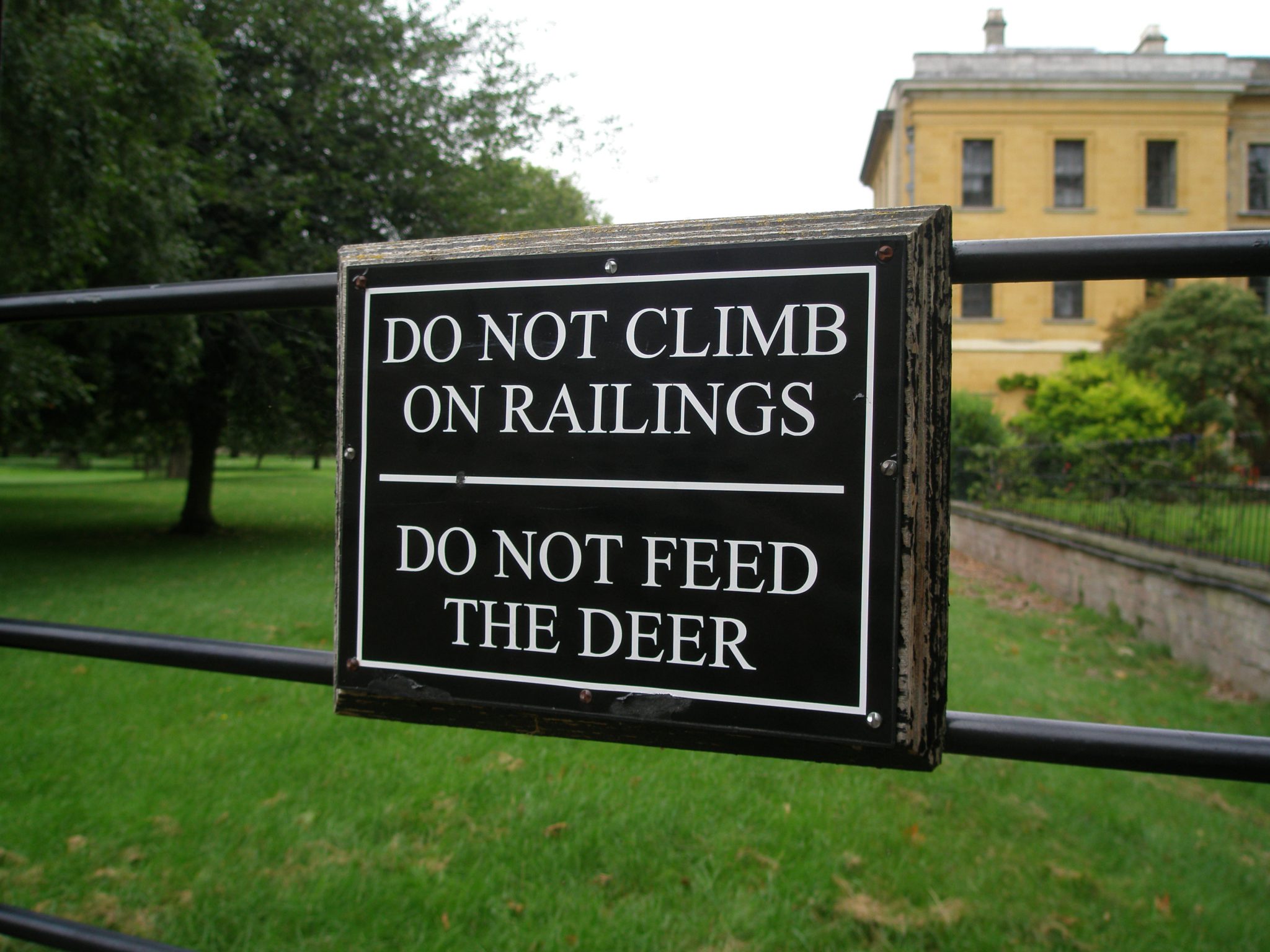
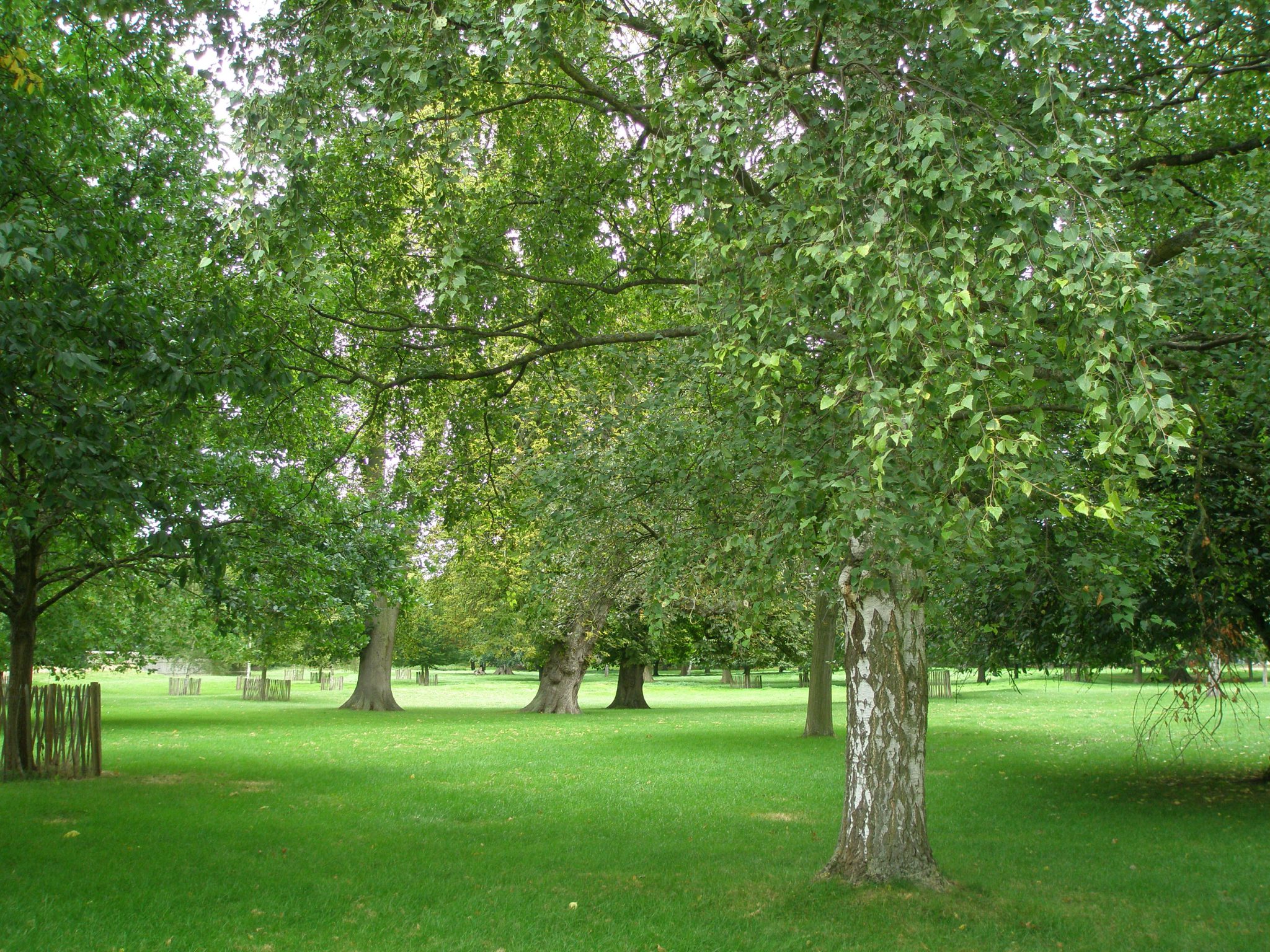
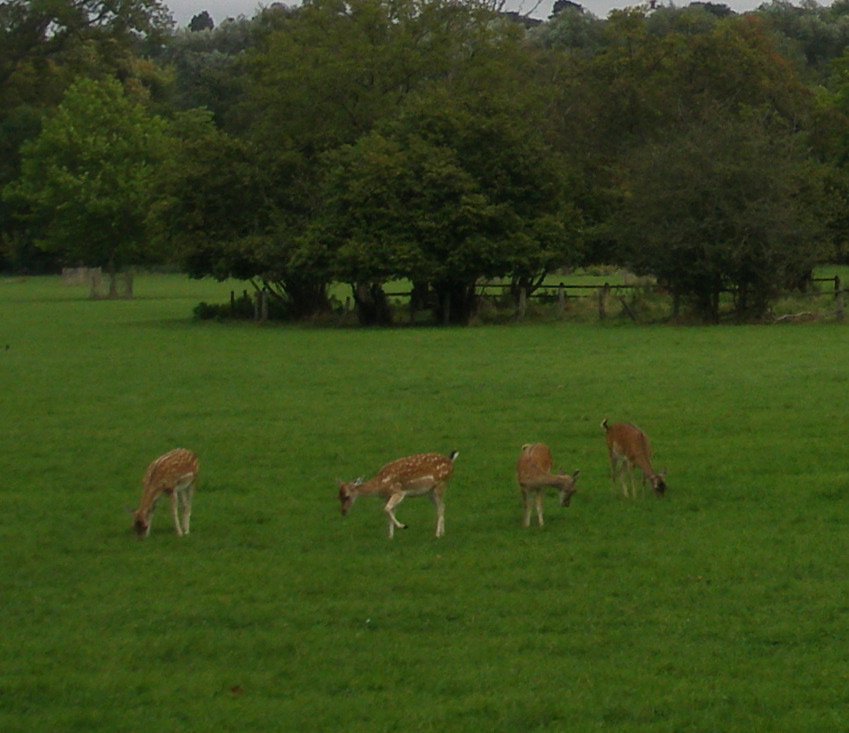
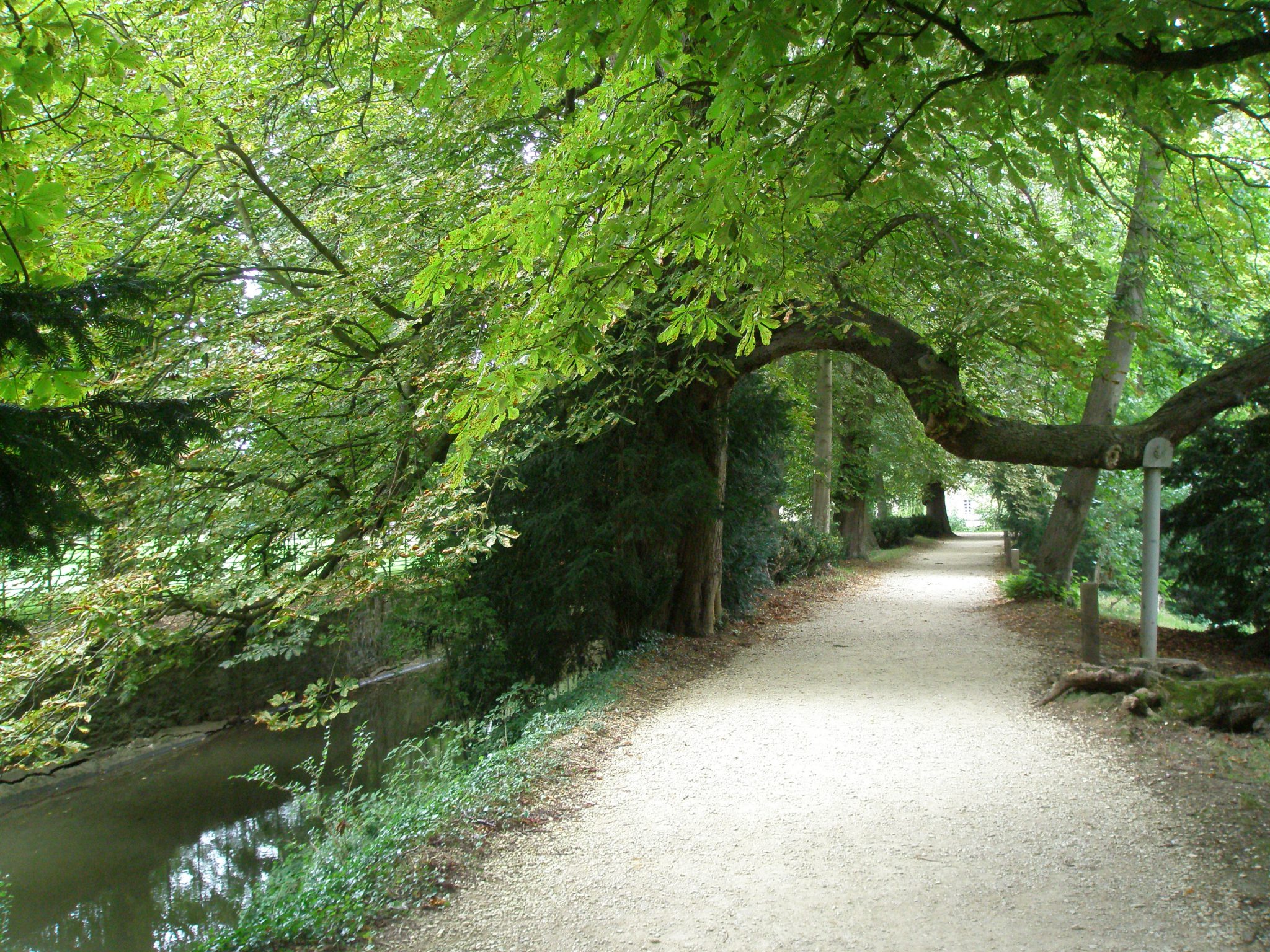
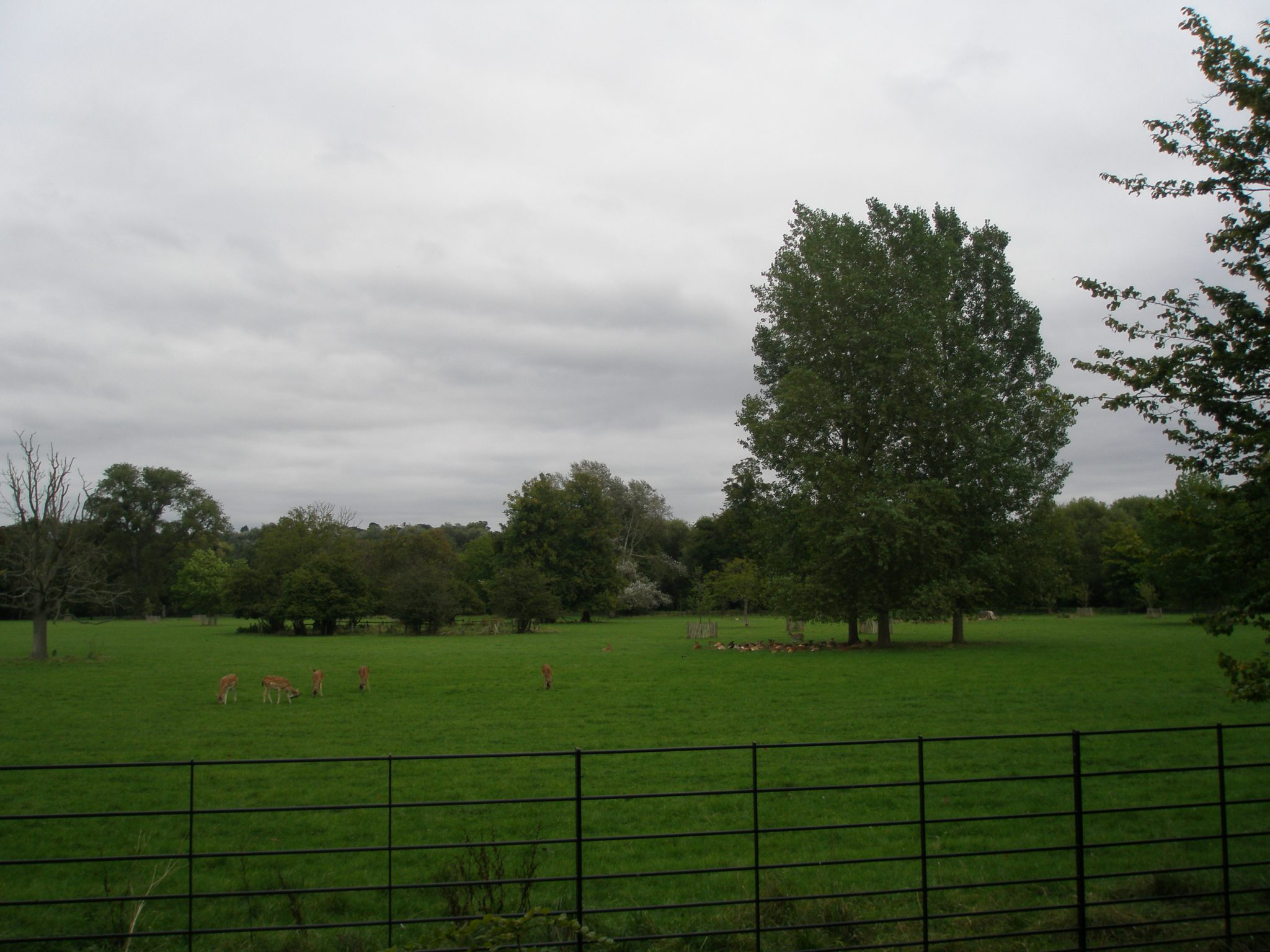
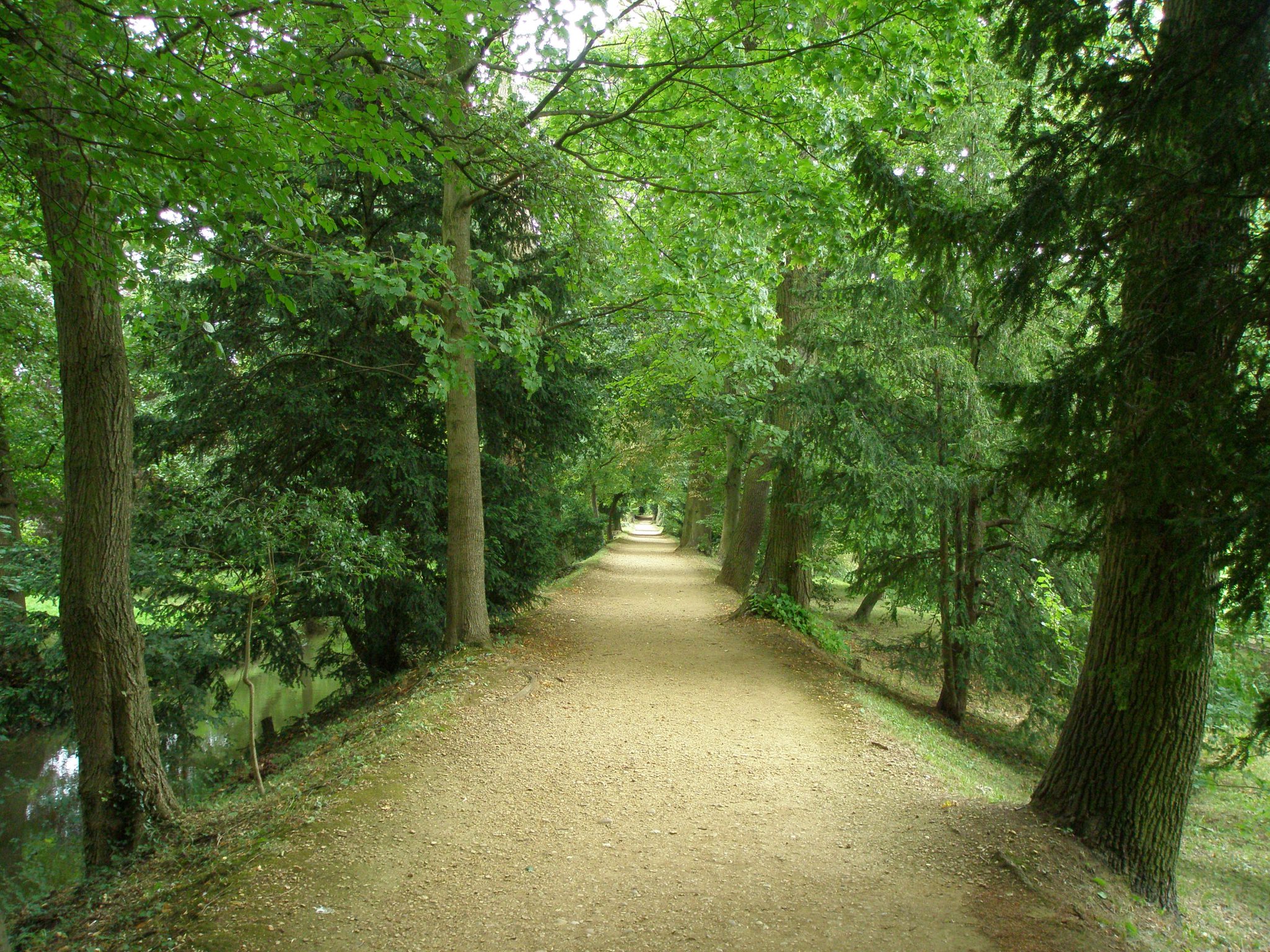
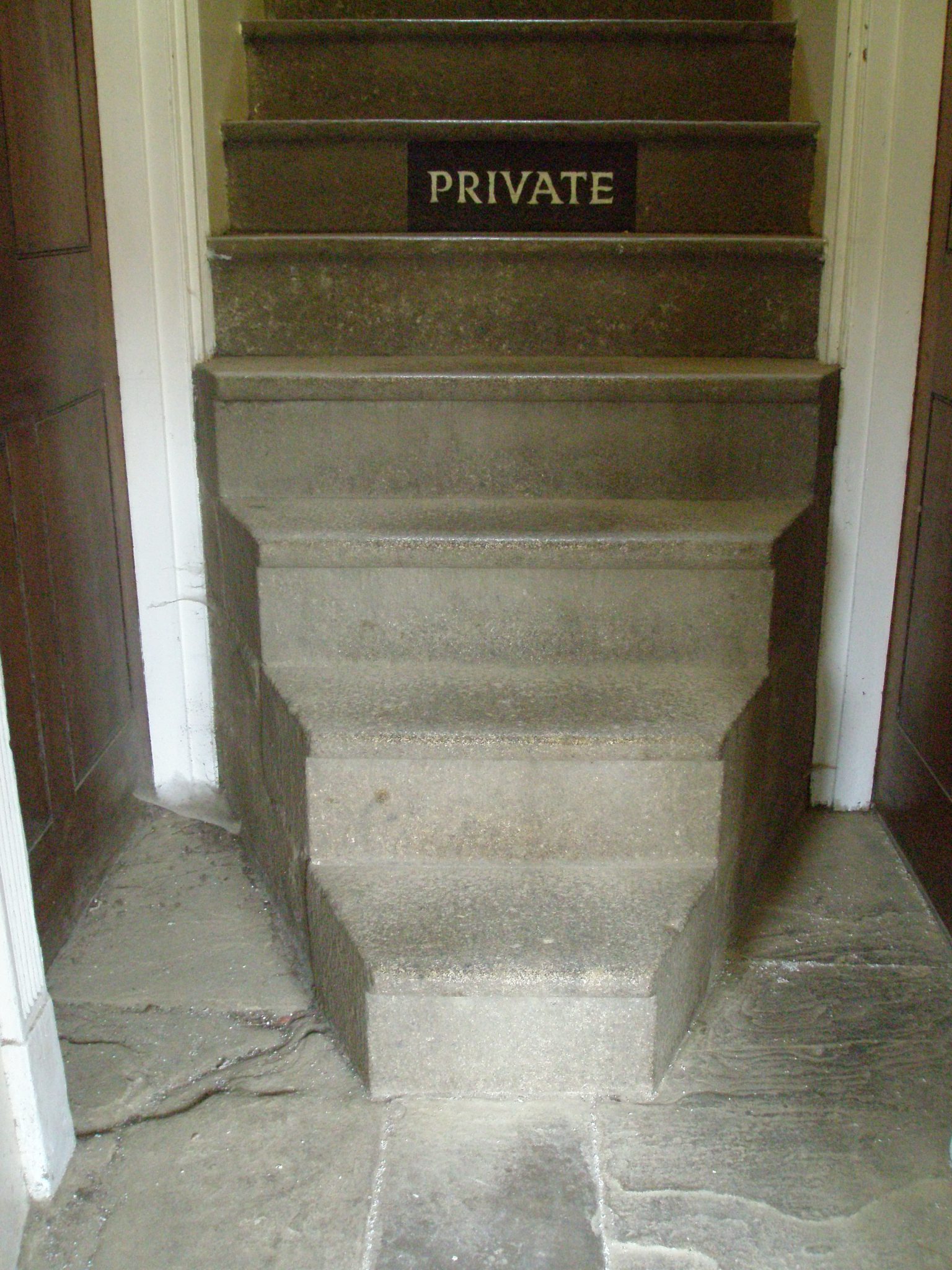
3 Responses to A Bit More London-Lingering; & a Long Weekend in Oxford